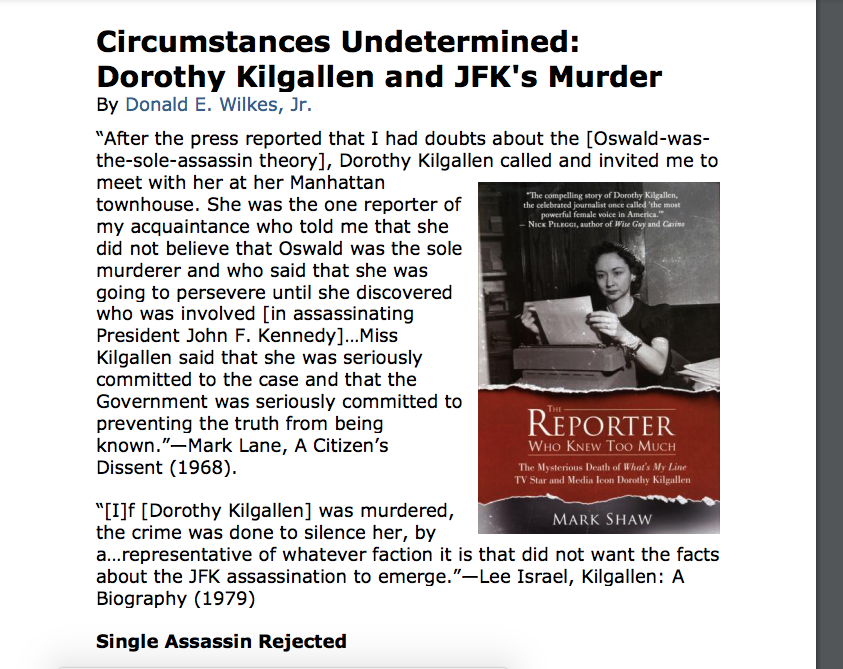
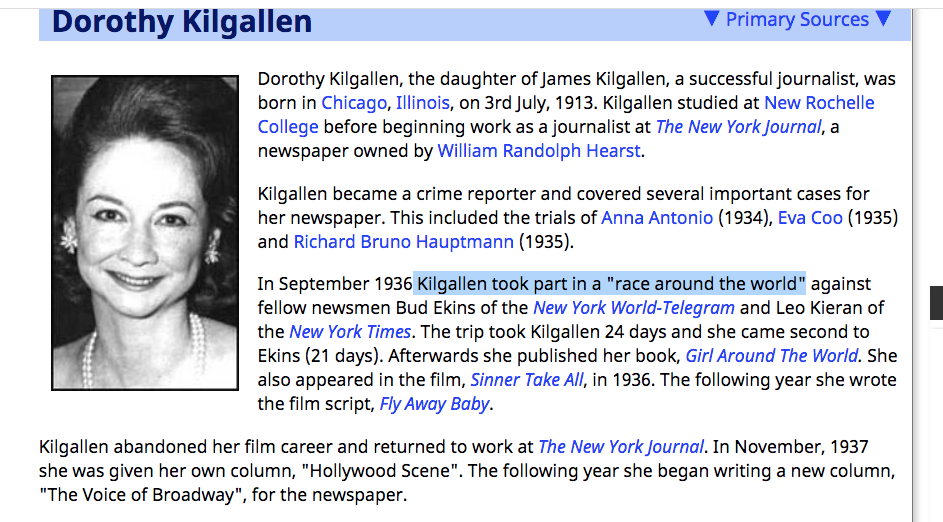
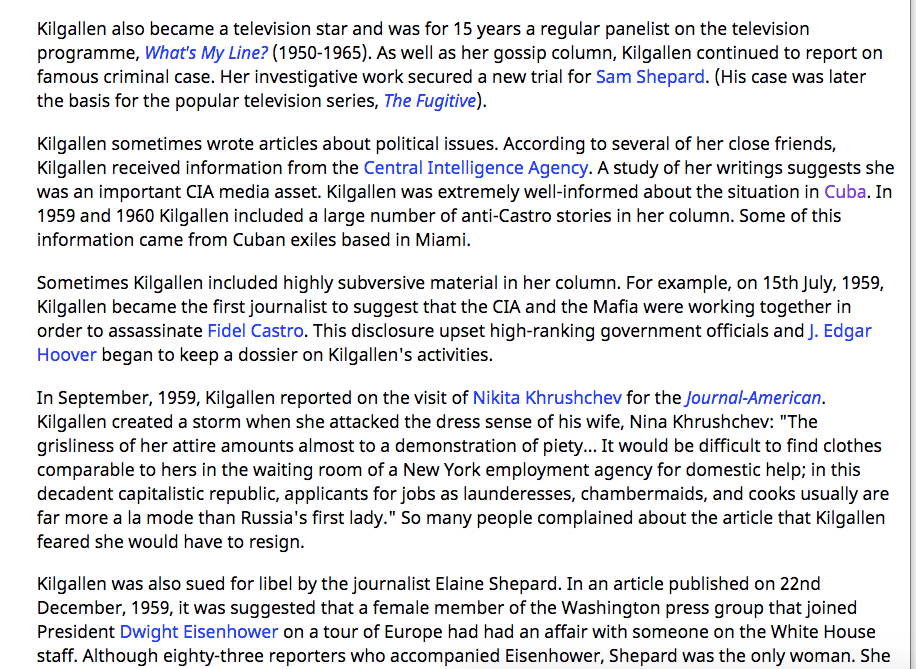
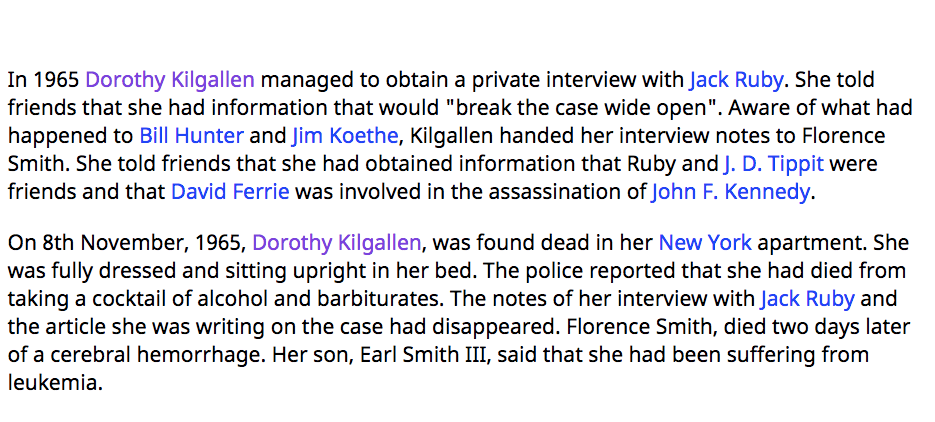
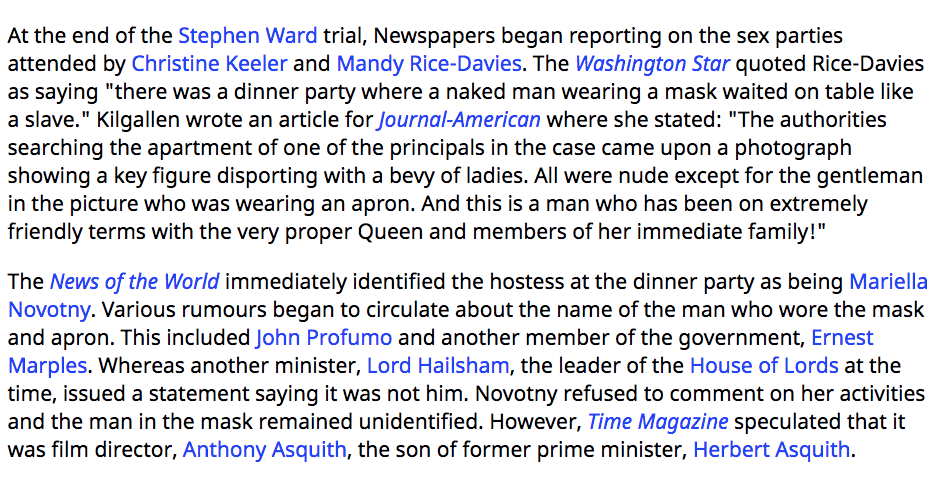
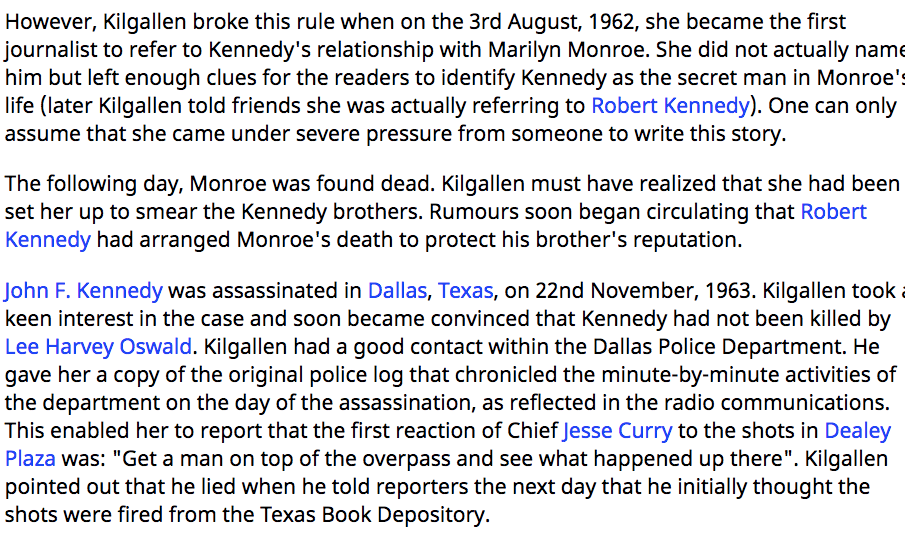
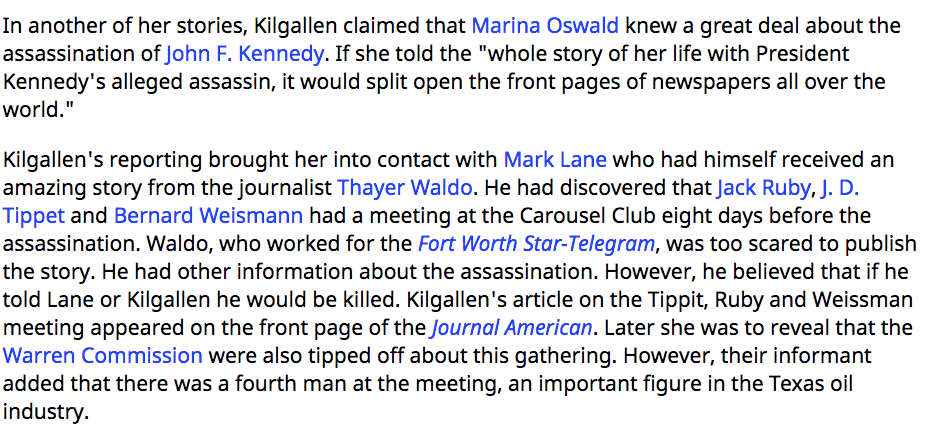
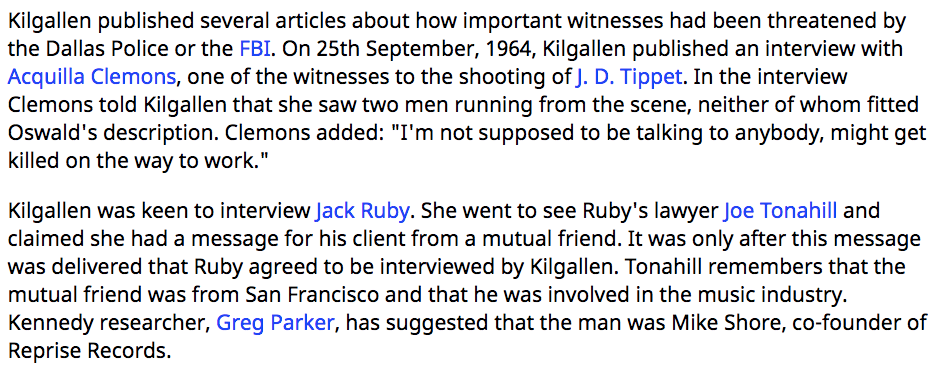
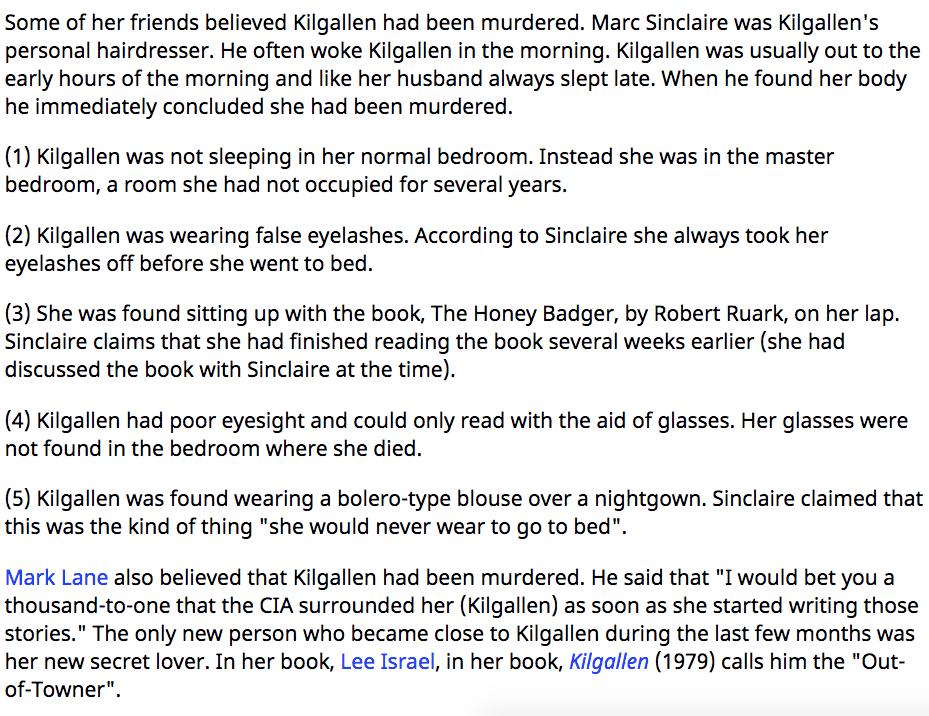
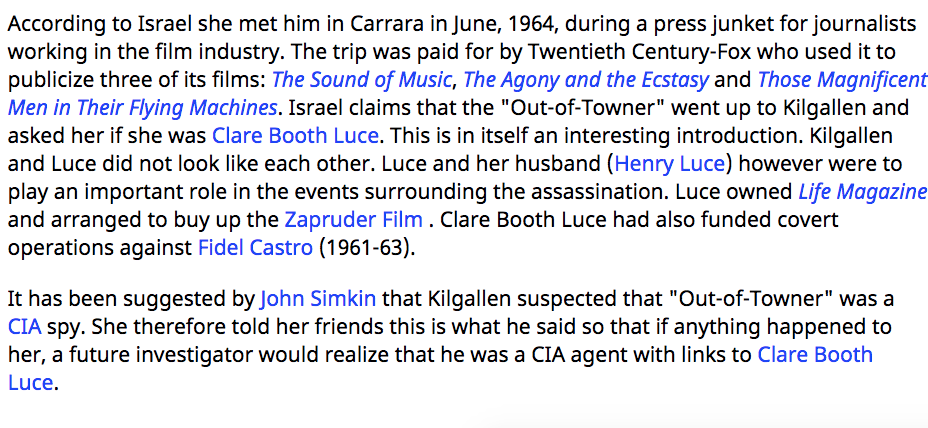
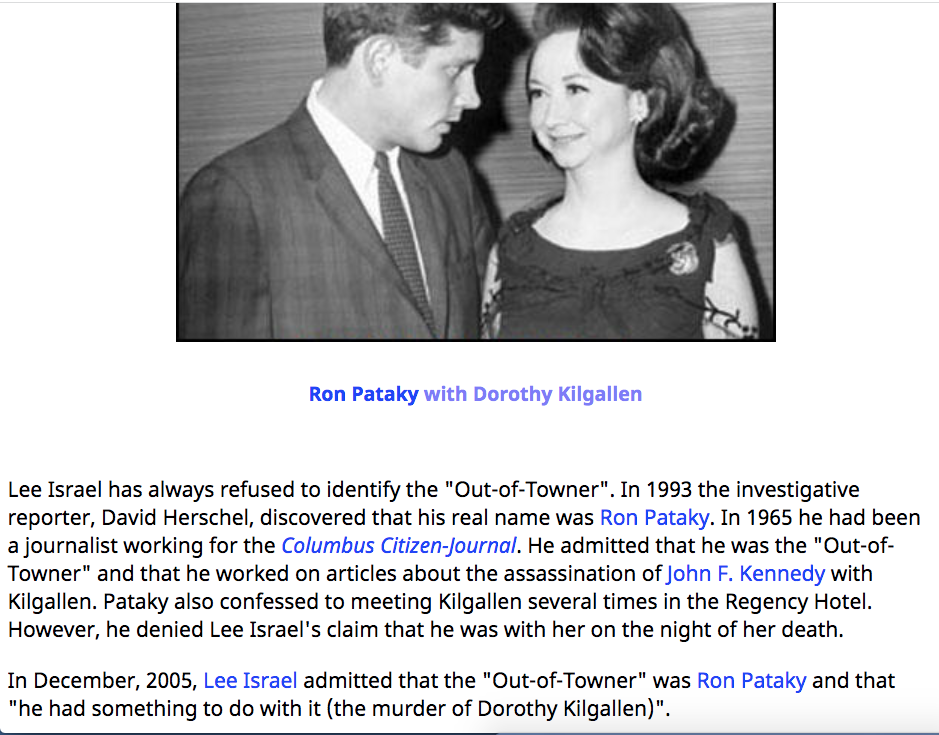
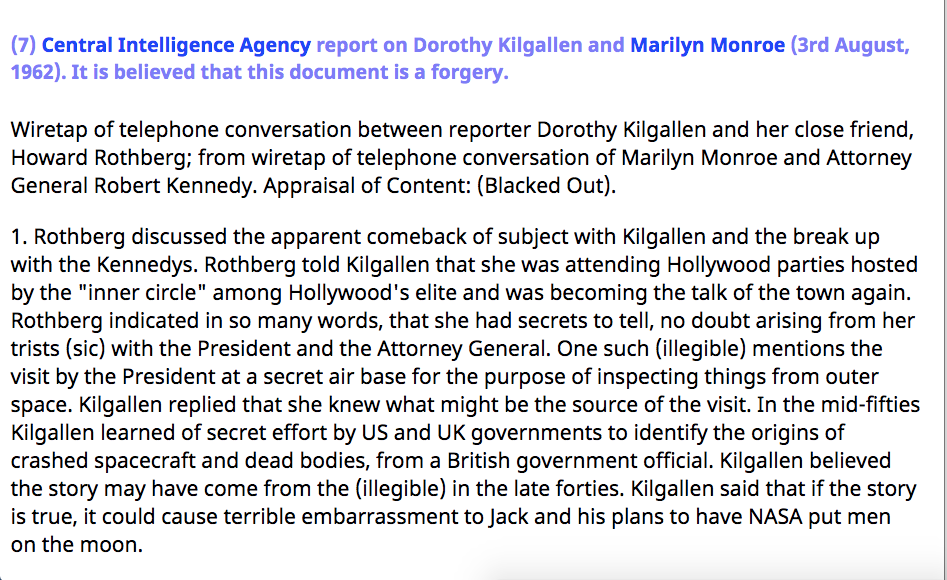
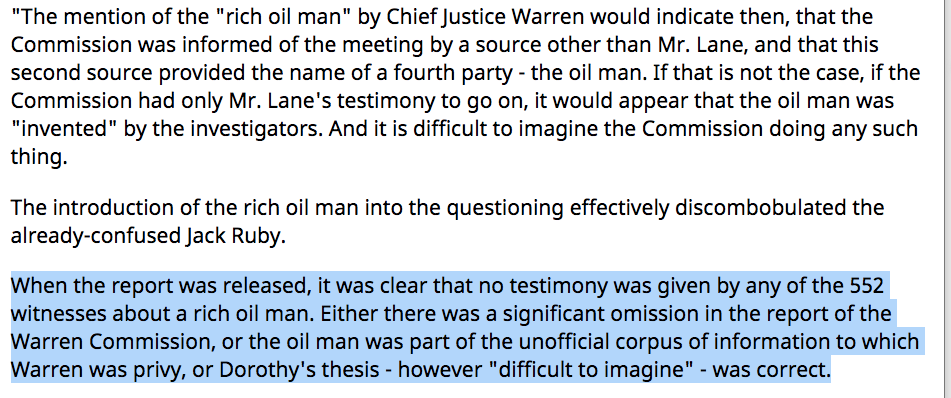

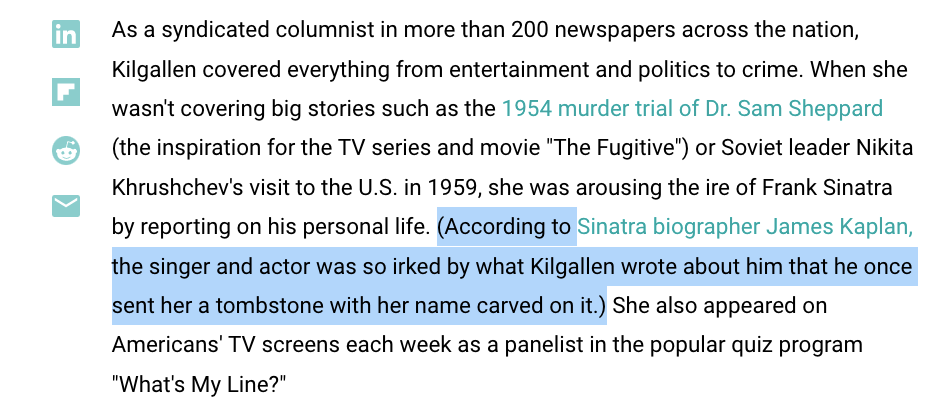
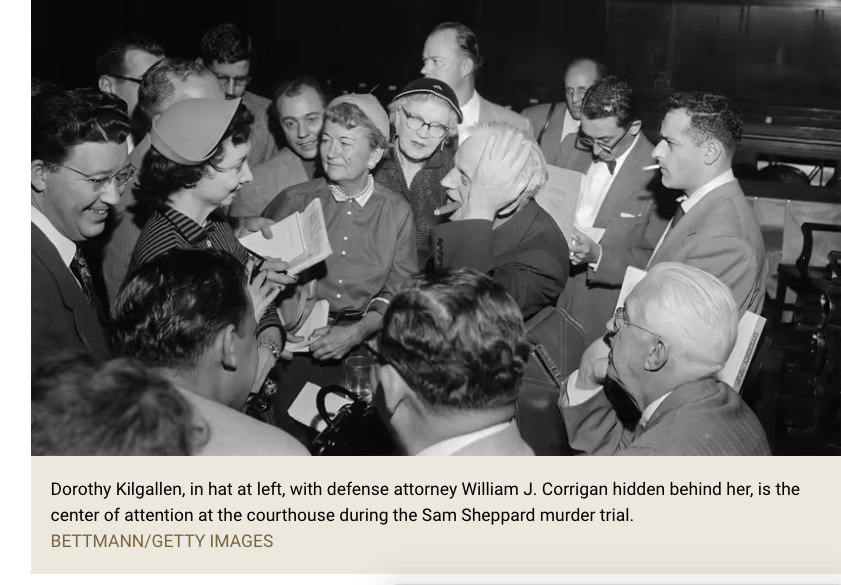
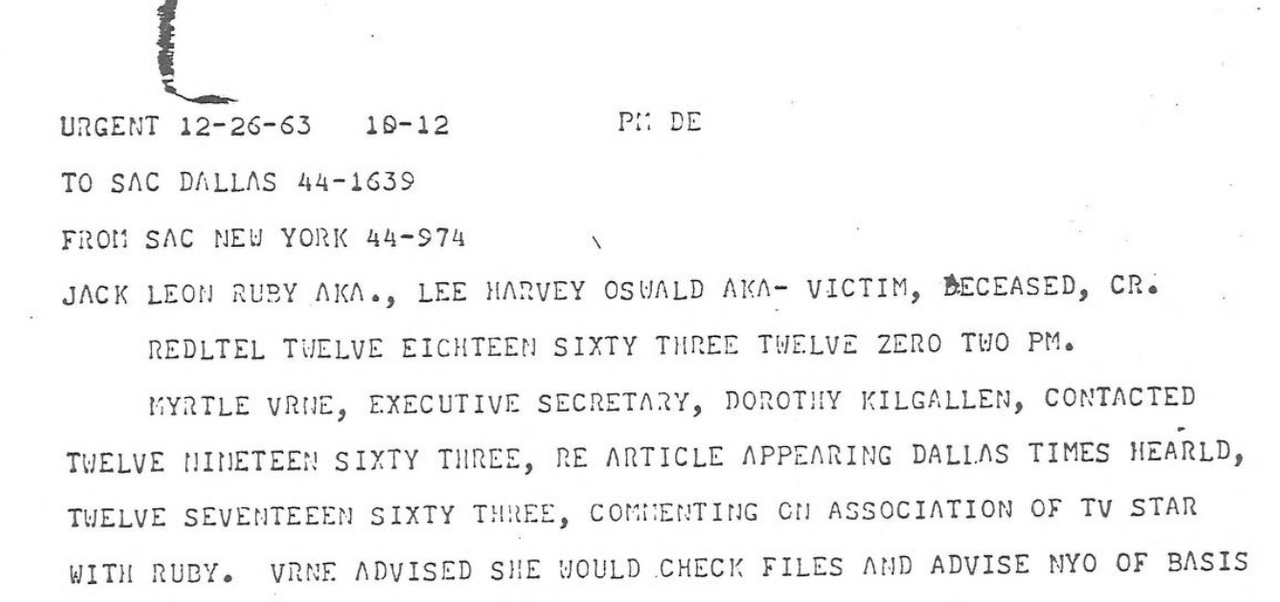
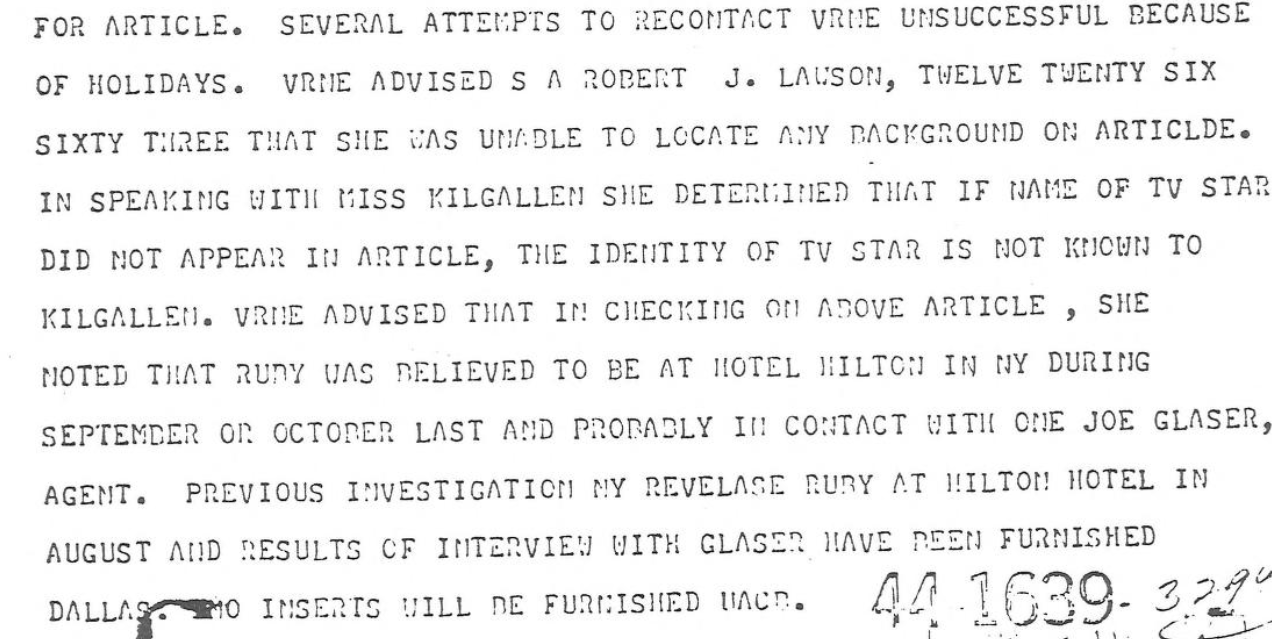
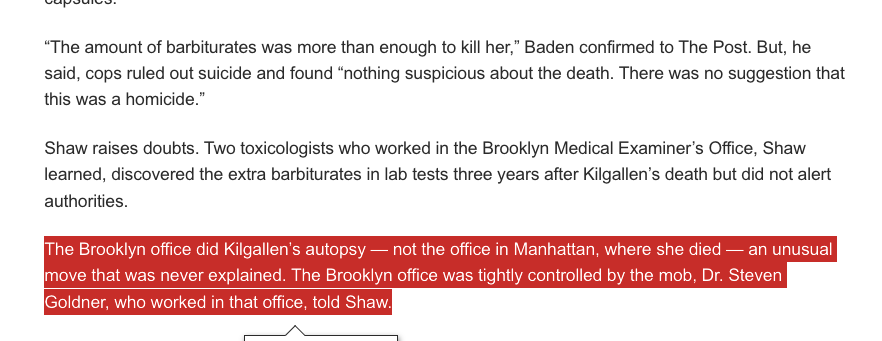
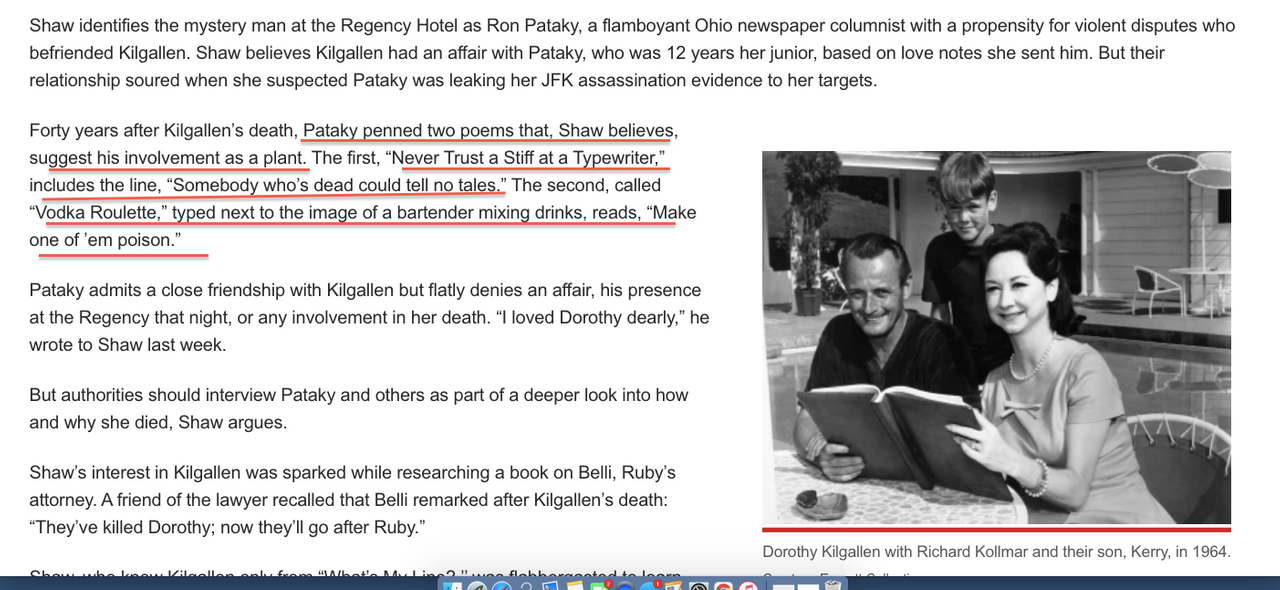
Many felt that Bobby had a lot more enemies than Jack, so why was it Jack they took out when Robert Kennedy went after the mafia after Joe Kennedy gave his word they would leave them alone?
Bill Alexander also felt Bobby had far more enemies.
Does curiosity kill the cat. . .or someone as the saying goes?
What do a lot of people who end up dead have?
Do they seek truth?
Do they ask a lot of questions?
Are they not satisfied with a pushed narrative or do they always Test that narrative?
You decide!
Who was Dorothy Kilgallen?
She was on What's My Line.
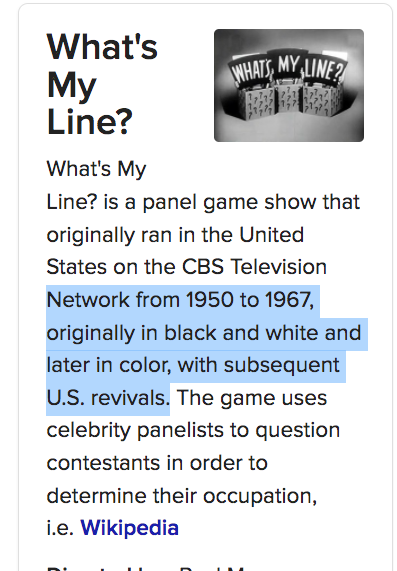
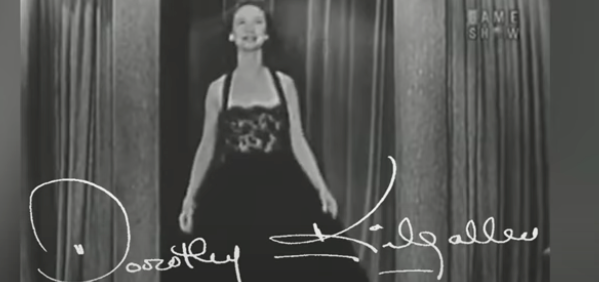
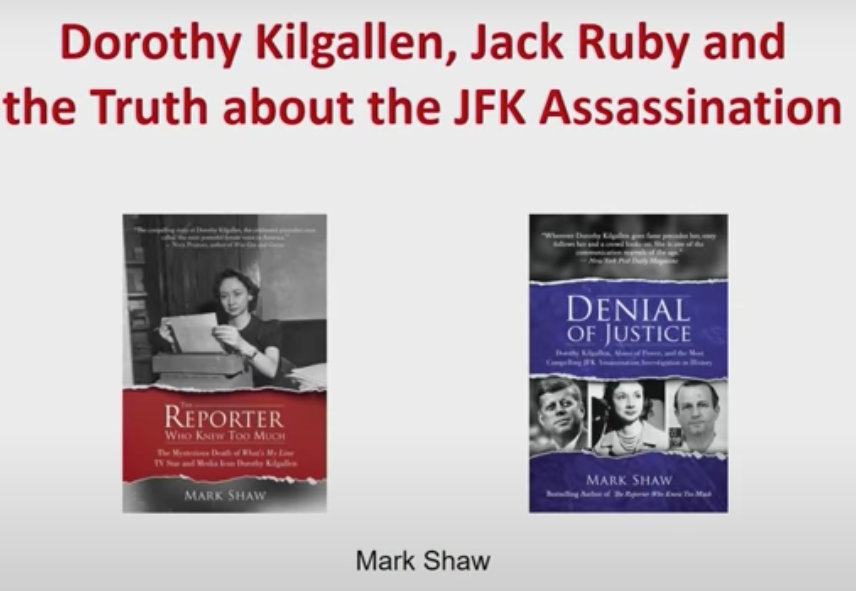
Mark Shaw also wrote a book on Melvine Belli
Mark practiced law in Belli's building, so got to know him.
When Belli died, he decided to write a biography of him because he looked at two of Belli's autobiographies he had written and they conflicted.
Many didn't buy the defense of insanity that Belli put forth for Ruby.
It was said Belli loved the mafia and the mafia loved him.
His main client was Mickey Cohen, a Los Angeles gangster. Belli loved to be around him.
As a former criminal defense lawyer, Mark Shaw had analyzed many cases.
Shaw wondered what Belli's motive was in his representation of Jack Ruby.
And what it had to do with that 1960's election when Joe Kennedy double crossed the Mafia.
Melvin Belli wrote some books concerning her.
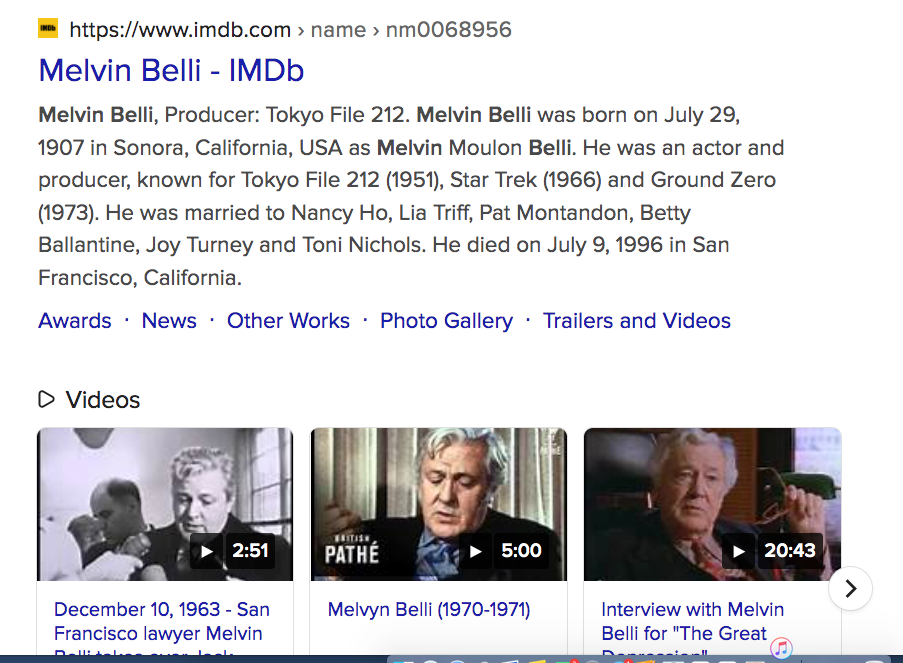
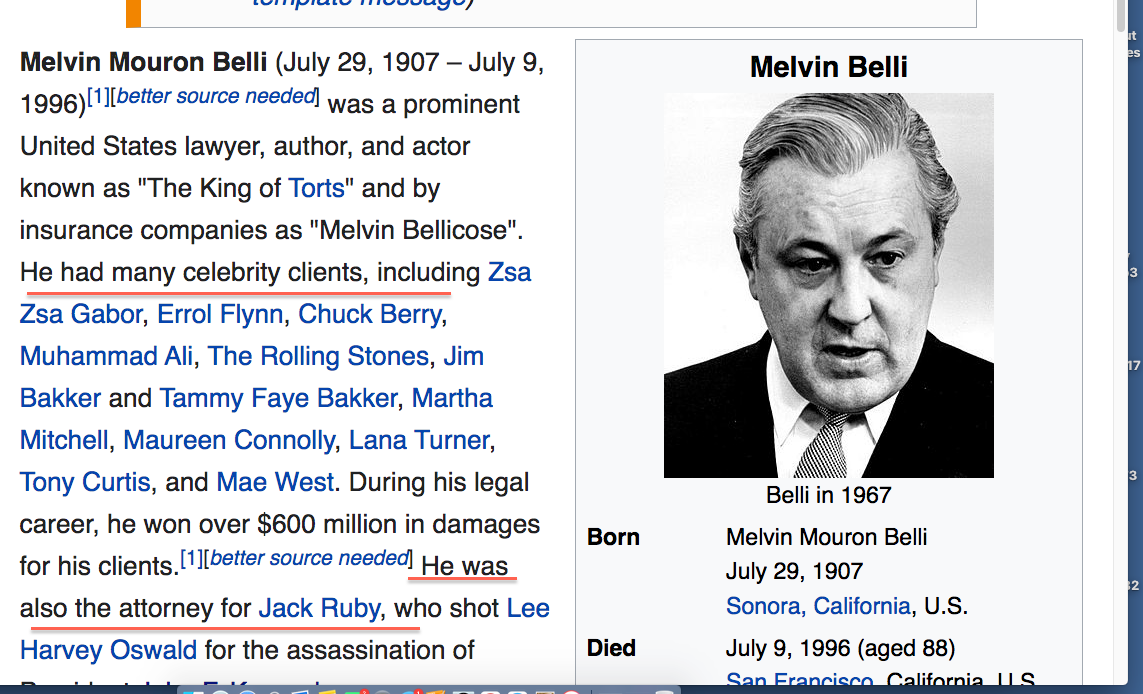
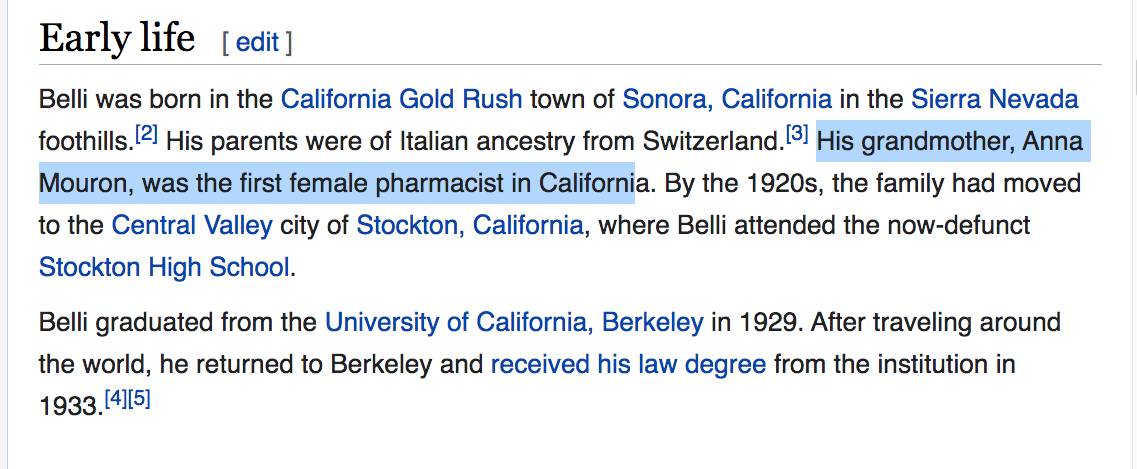

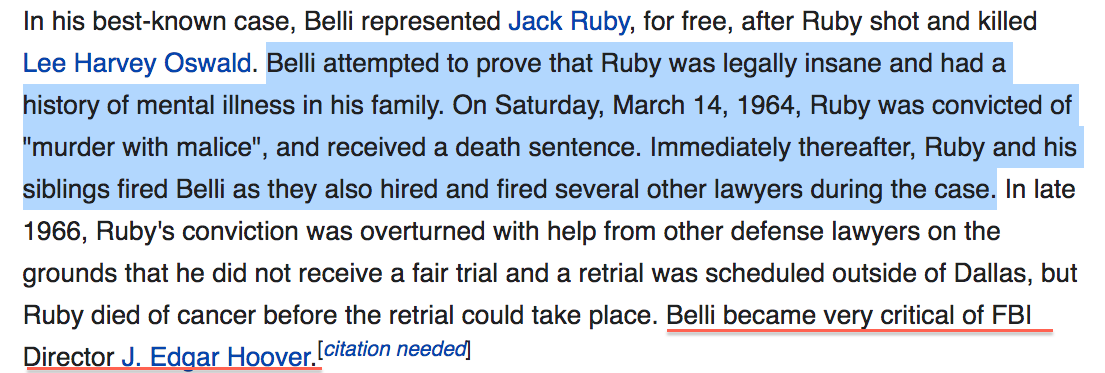
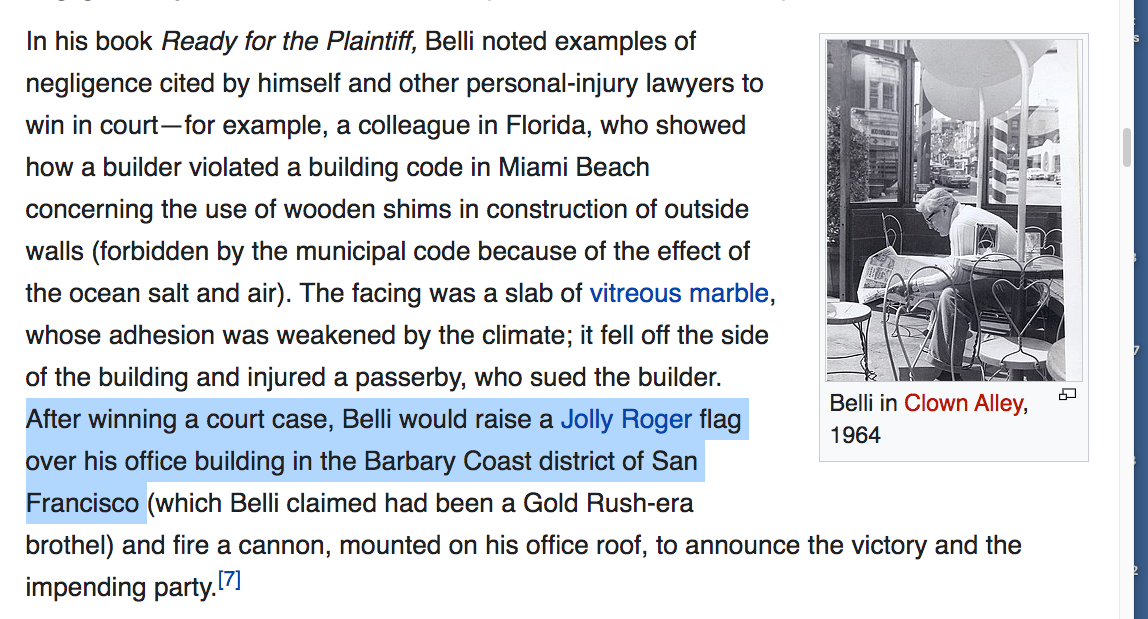

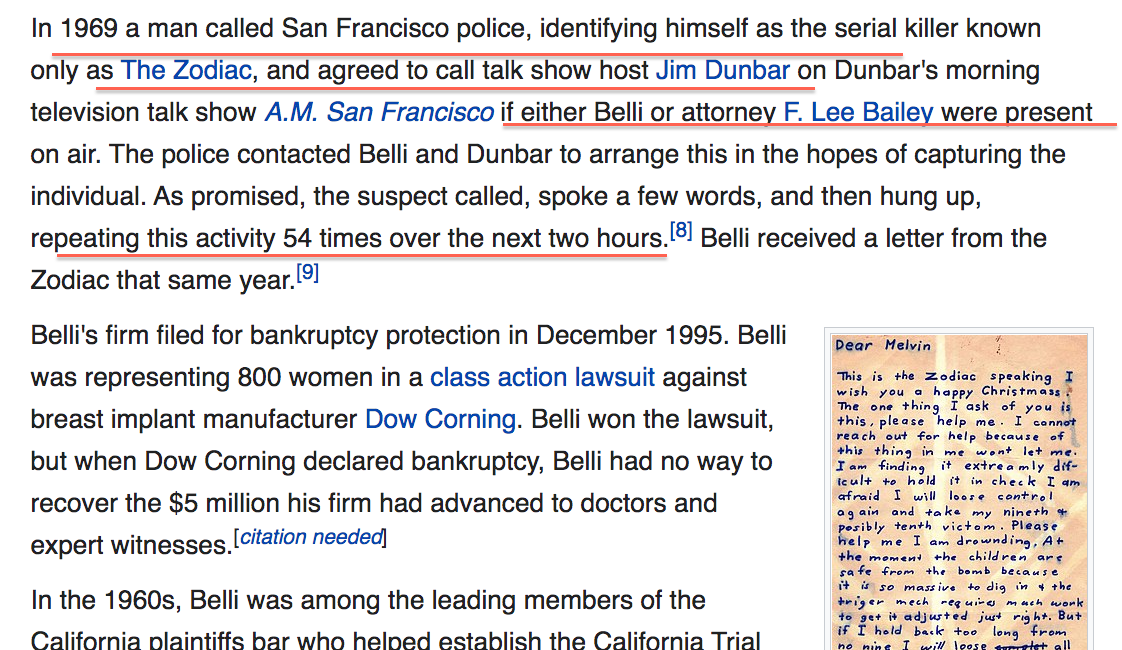

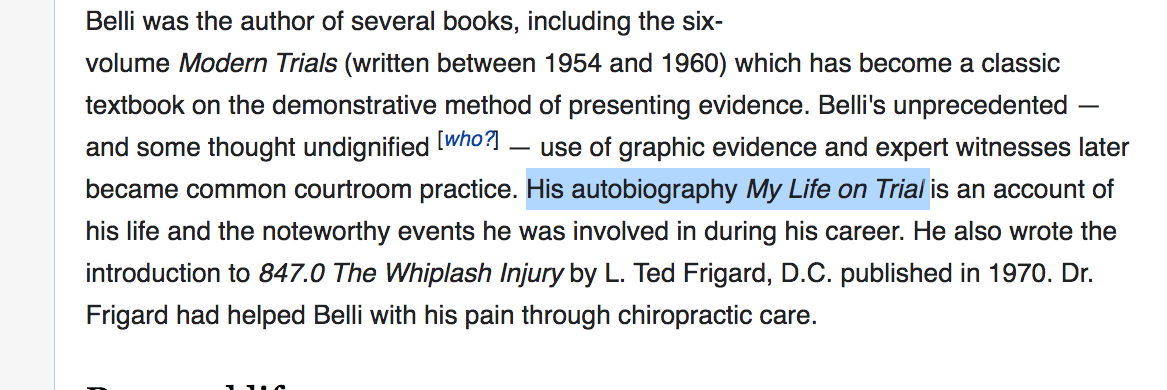
While Shaw was writing the Melvin Belli book, he ran into a doctor in San Diego who talked about Belli knowing Dorothy Kilgallen.
- What's My Line
- Syndicated in 200 Newspapers across the country
- Voice of Broadway
- Many articles
- Radio show with her husband listened to by 1 million people a day in New York
- Dorothy called the Greatest Female Writer in the World by Ernest Hemmingway
- Pulitzer Prize Nominated Writer
- As an investigative Reporter she covered some of the most famous trials of the 19th and 20th Centuries.
Lindbergh baby kidnapping case
Dr. Sam Sheppard
Jack Ruby Trial
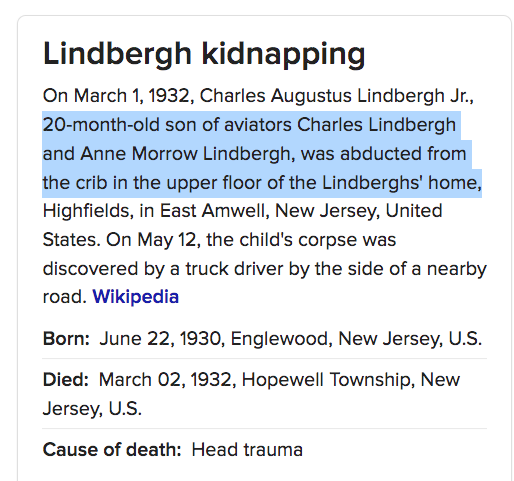
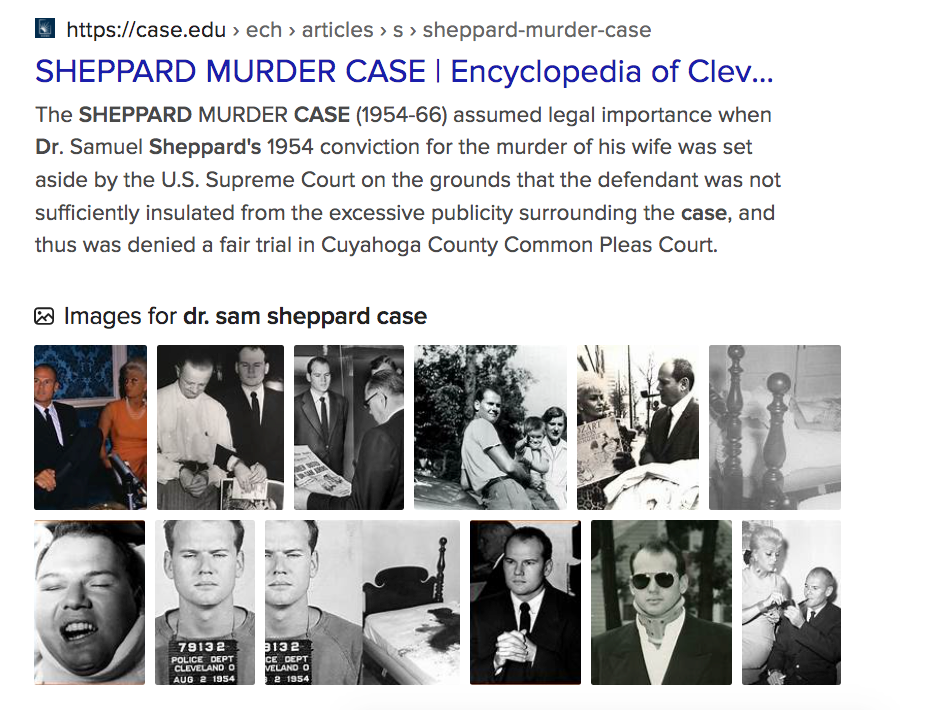
As newspapers were actually read back then, she would have been fairly well known.
How did Dorothy go from being a college drop out to what the New York Post called the most powerful female voice in America according to the New York Post.

As stated in the New York Post on December 4, 2016
On the night before her shocking death, Dorothy Kilgallen, a star panelist on the hit TV game show “What’s My Line?,” correctly guessed the occupation of a mystery guest: a woman who sold dynamite.
The glamorous, razor-sharp Kilgallen delighted viewers, but behind the scenes, the dogged and courageous reporter was hot on the trail of the biggest story of her life: the assassination of President John F. Kennedy.
The morning after that show, on Nov. 8, 1965, the 52-year-old newspaper columnist hailed by The Post as “the most powerful female voice in America” was dead in her Manhattan town house. Her body was found sitting up in a bed, naked under a blue bathrobe, with the makeup, false eyelashes and a floral hair accessory she had worn on TV still on.
After an autopsy, the city’s chief medical examiner, James Luke, put on Kilgallen’s death certificate: “Acute Ethanol and Barbiturate Intoxication, Circumstances Undetermined.” Luke ruled her death accidental, caused by a combination of sleeping pills and booze.
Quickly closing the case, the city left a tarnished image of Kilgallen as a possible drug abuser and alcoholic.
The truth is far more complex and ominous, contends lawyer and veteran author Mark Shaw, whose exhaustively researched, true-life whodunnit, “The Reporter Who Knew Too Much” (Post Hill Press/Simon & Schuster), comes out Tuesday.
Shaw makes a compelling argument that Kilgallen was the victim of foul play, likely orchestrated by New Orleans Mafia don Carlos Marcello, who feared the results of her 18-month investigation for a tell-all book that would accuse Marcello of masterminding the JFK and Lee Harvey Oswald assassinations.
The possibility that Marcello was responsible for JFK’s death came up in the 1991 Oliver Stone movie “JFK,” but New Orleans District Attorney Jim Garrison, who launched a probe, dismissed the idea. “He missed it,” Shaw says. “He didn’t have access to Kilgallen’s research.”
Kilgallen died weeks before a planned second trip to New Orleans for a meeting with a secret informant, telling a friend it was “cloak and daggerish.”
“I’m going to break the real story and have the biggest scoop of the century,” she told her lawyer.
Her death brought all that to a halt. “The killers won, because she was eliminated and erased from any historical record about the JFK assassination,” Shaw says. Her JFK book was never published.
Citing his findings after three years of research, Shaw is now calling on the Manhattan District Attorney’s Office to resurrect and fully investigate the Kilgallen case.
“Murder is murder whether it happened five days or 50 years ago,” Shaw says. “Victims have rights, and Dorothy was denied hers because there was no investigation.”
Kilgallen is best known for her role on “What’s My Line?” — the 1950s and ’60s CBS show watched by 25 million every Sunday night — with episodes still popular on YouTube. She also co-hosted a radio variety show, “Dick and Dorothy.”
But when asked by TV interviewer Edward R. Murrow about her favorite career, the media icon replied, “My first love is the newspaper, and always will be.”
The daughter of journalist James Kilgallen, Dorothy wrote the Voice of Broadway column for the New York Journal-American, which was syndicated to 200 papers nationwide. She also covered high-profile murder trials, including the case of Dr. Sam Sheppard, who denied killing his pregnant wife — and inspired the smash TV series “The Fugitive.”
Kilgallen wielded power. She single-handedly led Sheppard’s murder conviction to be overturned by the US Supreme Court after she told defense lawyer F. Lee Bailey that when the trial started, Judge Edward Blythin called her into his chambers to get her autograph and blabbed: “It’s an open-and-shut case. He’s guilty as hell.”
An A-list celebrity herself, Kilgallen and her husband, Richard Kollmar, hosted lavish parties with guests ranging from actress Jayne Mansfield to Beatle George Harrison. Her marital problems and longtime affair with pop singer Johnnie Ray were fodder for gossip. She cultivated extensive sources, including underworld figures such as New York Mafia boss Frank Costello. Ernest Hemingway, a friend, called her “the greatest woman writer in the world.”
“She broke the glass ceiling before the term was fashionable,” juggling multiple careers — and earning today’s equivalent of millions of dollars a year — while raising three kids, Shaw says.
JFK’s assassination on Nov. 22, 1963 — two years before her own death — devastated Kilgallen, who had visited the president in the White House with her youngest son, Kerry, and considered Kennedy a friend.
“The American people have just lost a beloved president,” she wrote in her column a week after he was shot while riding in a Dallas motorcade. “It’s a dark chapter in our history, but we have the right to read every word of it.”
Kilgallen, who called “laughable” the Warren Commission’s conclusion that Oswald acted alone, launched her own probe. She compiled a thick file of evidence, interviews and notes, always keeping it close or under lock and key.
After her death, the dossier was nowhere to be found.
“Whoever decided to silence Dorothy, I believe, took that file and burned it,” Shaw says.
In a letter to Manhattan District Attorney Cyrus Vance Jr. to be delivered Monday, Shaw cites fresh evidence unearthed by him and others.
It includes never-before-released lab results from Kilgallen’s autopsy he obtained under the Freedom of Information Law.
They reveal the presence of two additional barbiturates in Kilgallen’s system — Tuinal and Nembutal — not just the first-reported Seconal, a sleeping pill for which she had a prescription. The tests also revealed a powder residue on a glass found at her bedside, suggesting that someone opened capsules and poured drugs into her drink, Shaw writes.
Dr. Michael Baden, who later became the city’s chief medical examiner, told a prior author, Lee Israel, that the dosage in Kilgallen’s bloodstream was the stunning equivalent of “15 to 20” 100-milligram Seconal capsules.
“The amount of barbiturates was more than enough to kill her,” Baden confirmed to The Post. But, he said, cops ruled out suicide and found “nothing suspicious about the death. There was no suggestion that this was a homicide.”
Shaw raises doubts. Two toxicologists who worked in the Brooklyn Medical Examiner’s Office, Shaw learned, discovered the extra barbiturates in lab tests three years after Kilgallen’s death but did not alert authorities.
The Brooklyn office did Kilgallen’s autopsy — not the office in Manhattan, where she died — an unusual move that was never explained. The Brooklyn office was tightly controlled by the mob, Dr. Steven Goldner, who worked in that office, told Shaw.
“They deliberately sent Kilgallen’s body to Brooklyn as part of the cover-up,” Shaw says.
Someone, Shaw concludes, must have spiked the vodka-tonic that Kilgallen drank the night before she died — either at the Regency Hotel, where the “What’s My Line?” cast and guests gathered after the show, or more likely in the bedroom, where the glass with powdery residue was found.
An FBI file on Kilgallen, which Shaw also obtained under the Freedom of Information Act, reveals she was under surveillance.
Then-FBI Director J. Edgar Hoover bristled at Kilgallen’s columns in 1959, when she traveled to Miami’s Little Havana and interviewed Cuban exiles about their hatred of Cuban dictator Fidel Castro. She did so defiantly, because the US supported Castro at the time.
After JFK’s death, she repeatedly challenged the “Oswald alone” theory.
“WRONG,” Hoover scribbled next to one of her clippings.
Kilgallen jumped at the chance to cover the trial of Jack Ruby, the Dallas bar owner who shot Oswald in the stomach at Dallas police headquarters. She was the only reporter at the trial to interview Ruby. His lawyer, Melvin Belli, let her speak to Ruby twice. The gifted wordsmith wrote:
“Jack Ruby’s eyes were as shiny brown-and-white bright as the glass eyes of a doll. He tried to smile but his smile was a failure. When we shook hands, his hand trembled in mine ever so slightly, like the heartbeat of a bird.”
Kilgallen infuriated Hoover in 1964 when she obtained and published Ruby’s testimony to the Warren Commission, which held closed-door hearings on JFK’s murder, before its official release. She never divulged who gave her the transcript, vowing, “I’d rather die than reveal the source.”
Shaw obtained more than 50 videotaped interviews — now posted at thedorothykilgallenstory.org and thereporterwhoknewtoomuch.com — conducted by investigative reporter Kathryn Fauble and a colleague who looked into Kilgallen’s death. They include Kilgallen’s close confidants, full-time hairdressers Marc Sinclaire and Charles Simpson; Ruby co-counsel Joe Tonahill; and Katherine Stone, the “What’s My Line?” dynamite saleswoman. Stone was one of the last people to see Kilgallen alive, huddling at the Regency Hotel bar with a “mystery man” after the show.
She never divulged who gave her the transcript, vowing, ‘I’d rather die than reveal the source.’
Simpson said Kilgallen told him before her aborted trip to New Orleans: “If the wrong people knew what I know about the JFK assassination, it would cost me my life.”
Kilgallen told Sinclaire she had gotten “threats.” Fearing for her life and her family, she bought a gun. It was Sinclaire who found Kilgallen’s body at about 9 a.m. in a bedroom in which she never slept, he said.
Kilgallen told Sinclaire she had gotten “threats.” Fearing for her life and her family, she bought a gun. It was Sinclaire who found Kilgallen’s body at about 9 a.m. in a bedroom in which she never slept, he said.
Shaw contends that the death scene was “staged,” with an empty sleeping-pill bottle and a drinking glass on the nightstand. He theorizes that Kilgallen’s killer had accompanied her into the apartment. Cops never searched for fingerprints, he learned.
Shaw identifies the mystery man at the Regency Hotel as Ron Pataky, a flamboyant Ohio newspaper columnist with a propensity for violent disputes who befriended Kilgallen. Shaw believes Kilgallen had an affair with Pataky, who was 12 years her junior, based on love notes she sent him. But their relationship soured when she suspected Pataky was leaking her JFK assassination evidence to her targets.
Forty years after Kilgallen’s death, Pataky penned two poems that, Shaw believes, suggest his involvement as a plant. The first, “Never Trust a Stiff at a Typewriter,” includes the line, “Somebody who’s dead could tell no tales.” The second, called “Vodka Roulette,” typed next to the image of a bartender mixing drinks, reads, “Make one of ’em poison.”
Pataky admits a close friendship with Kilgallen but flatly denies an affair, his presence at the Regency that night, or any involvement in her death. “I loved Dorothy dearly,” he wrote to Shaw last week.
But authorities should interview Pataky and others as part of a deeper look into how and why she died, Shaw argues.
Dorothy Kilgallen with Richard Kollmar and their son, Kerry, in 1964
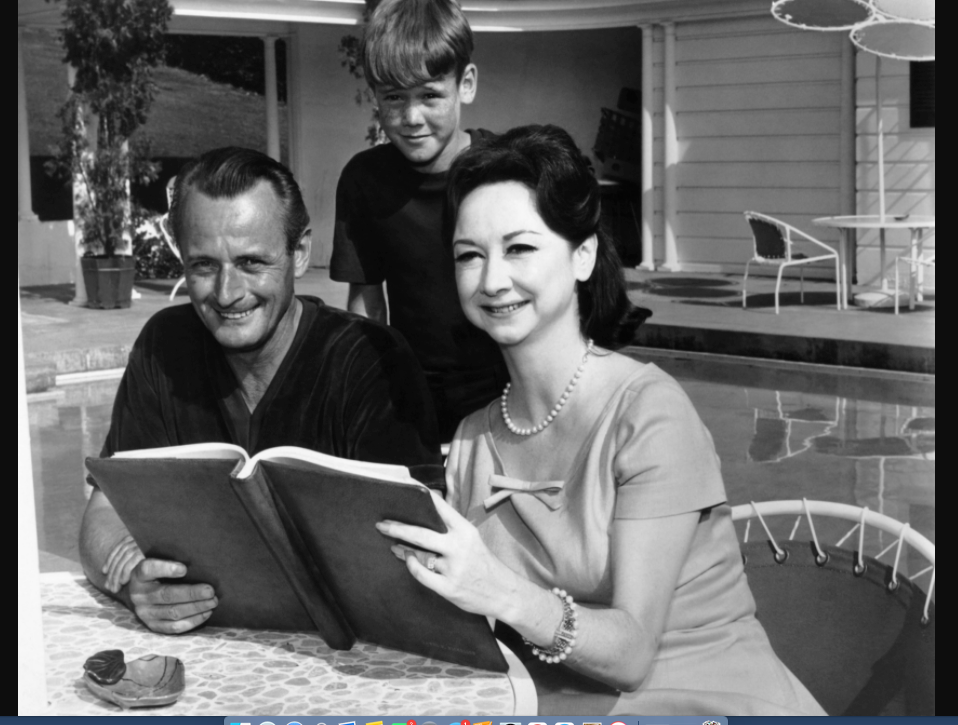
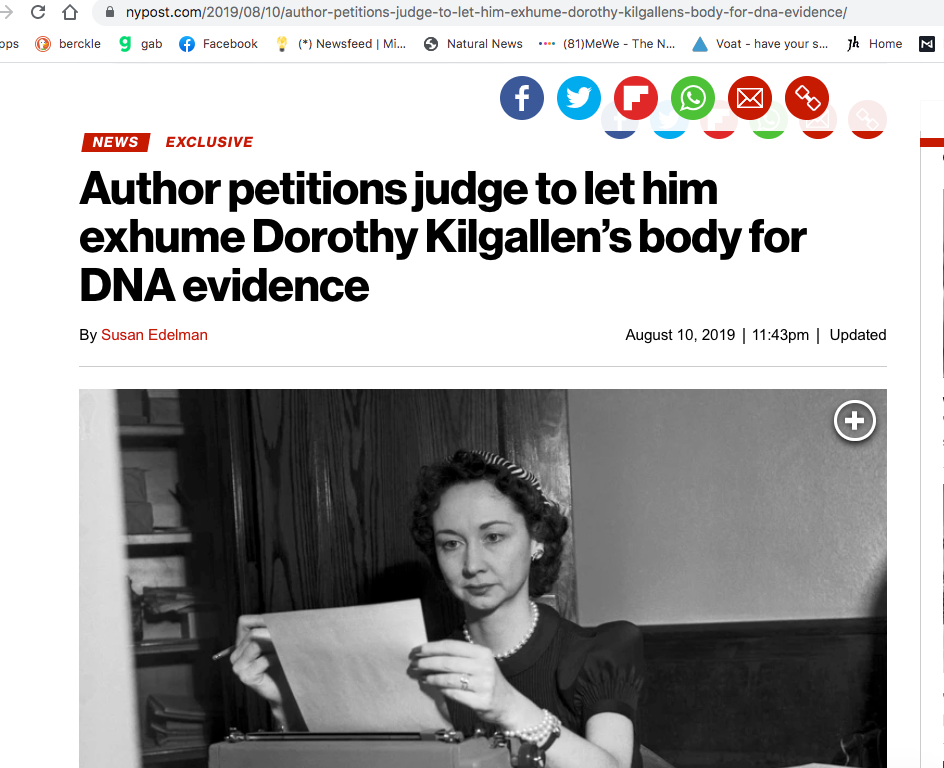
According to a New York Post article written August 10, 2019 [which is an interesting date considering. . .]
Here's Why!
- Anthony Radziwill, JFKjr's cousin died August 10, 1999 just 25 days after JFKjr. was stated by the media to be dead. JFKjr. recorded date of death July 16, 1999.
They were very close. They vacationed with their moms [sisters Jacqueline and Lee] on Montauk at the Andy Warhol Compound Eothen, meaning First Light.
See more info here in under 13 min. or if you prefer to read/skim go to the provided article.
It's been a long road! The Montauk Connection! Have you seen the Script?


Described by her nephew Ian Roberts as “one of the classic English nannies,” Shaw tended to Caroline and John F. Kennedy Jr.‘s every need for seven and a half years, until she retired in 1965. But she was more than just their governess. She “was probably their best friend at the time,” Jackie’s former Secret Service agent Clint Hill says in this week’s PEOPLE cover story.
“I nursed the children from the cradle and came to love them just as if they had been my own,” Shaw – who died at age 85 in 1988 – wrote in her 1965 memoir, White House Nannie. “Happily they repaid me with their own love and affection.”
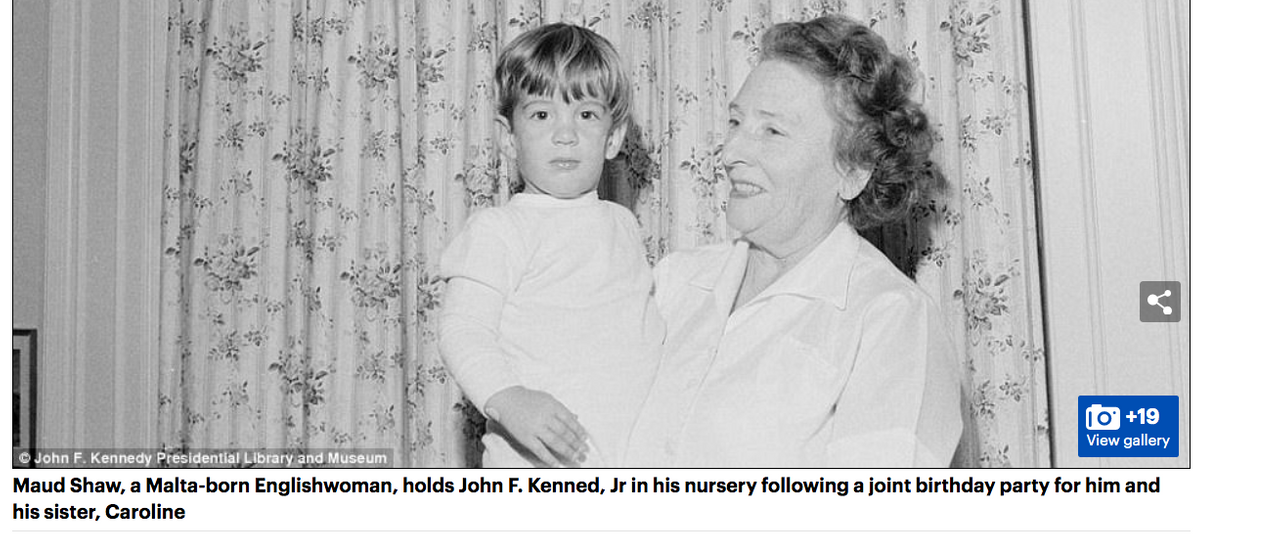
President-elect John F. Kennedy, his wife Jacqueline and Shaw travel in the back of a car with newborn John Jr; they are traveling from Washington DC to Palm Beach, Florida
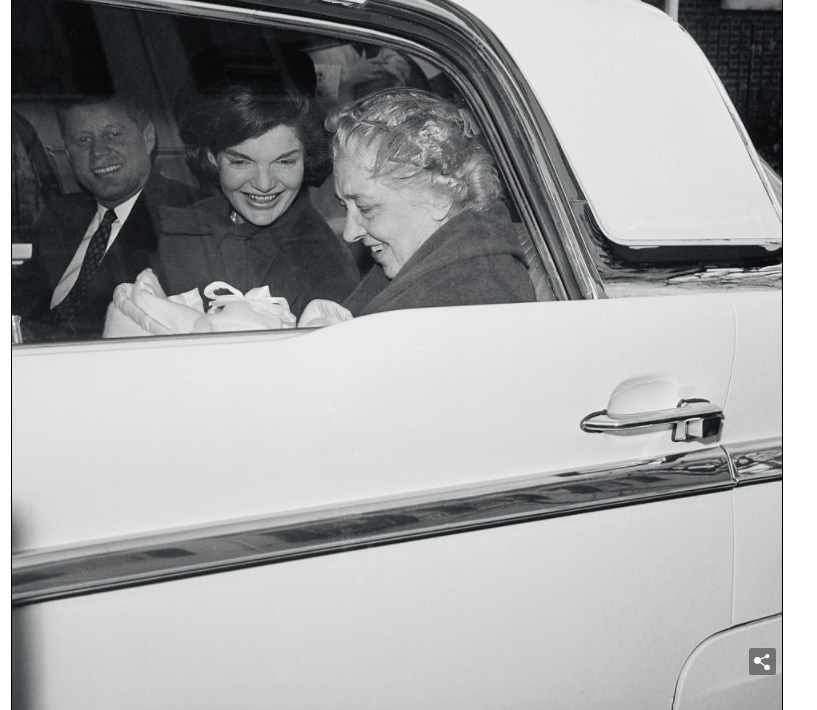
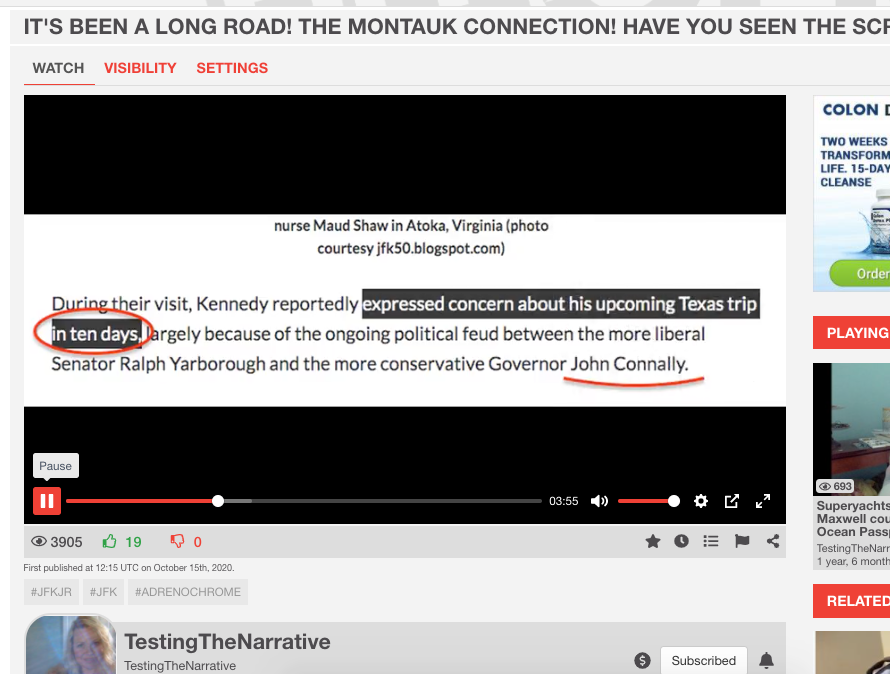
In looking at the show, What's My Line,
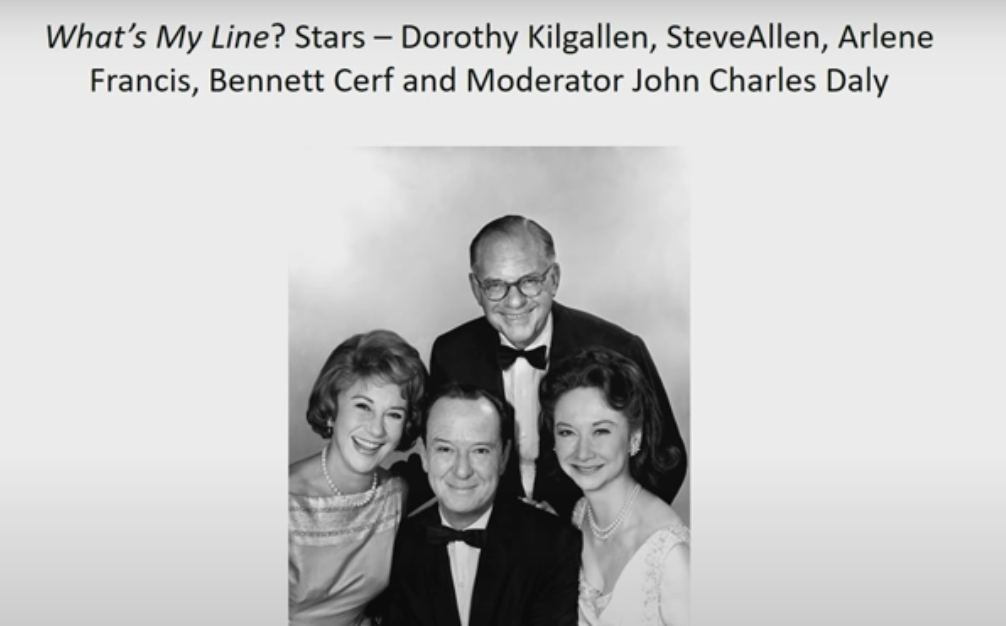
Her column, The Voice of Broadway
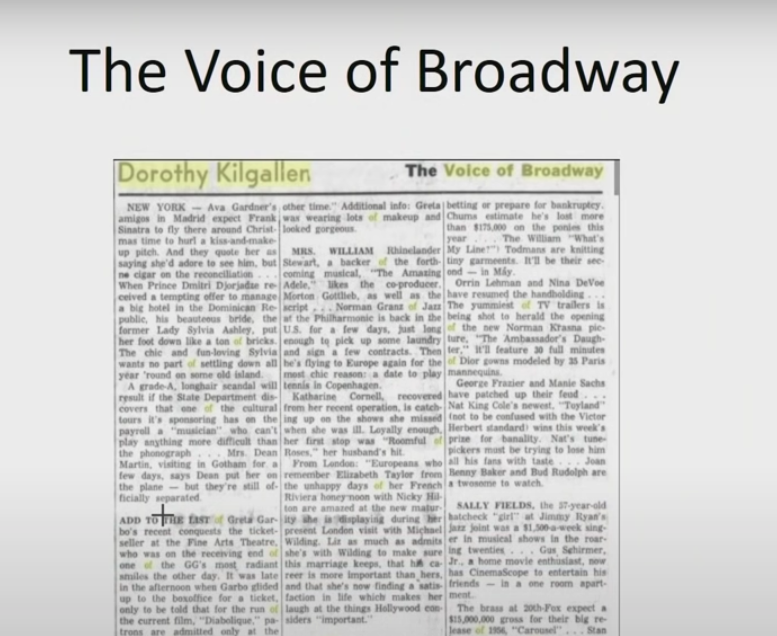
The Voice of Broadway
Des Moines Sunday Register, Des Moines, Iowa, USA, March 14th, 1954
by Dorothy Kilgallen
found here,
https://maria-mcclay.com/the-voice-of-broadway/
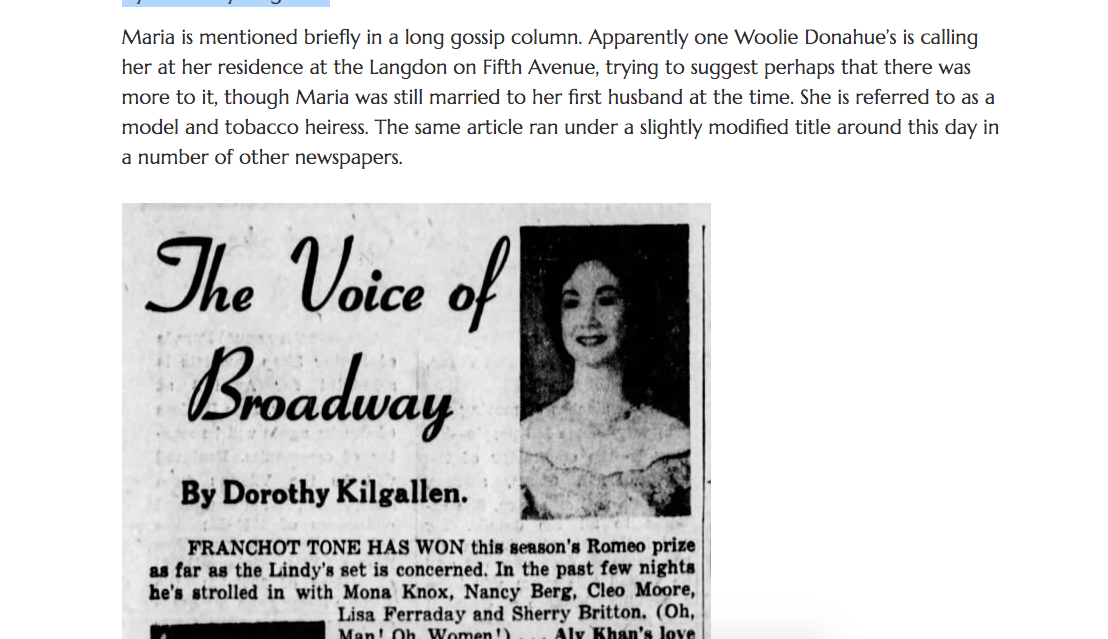
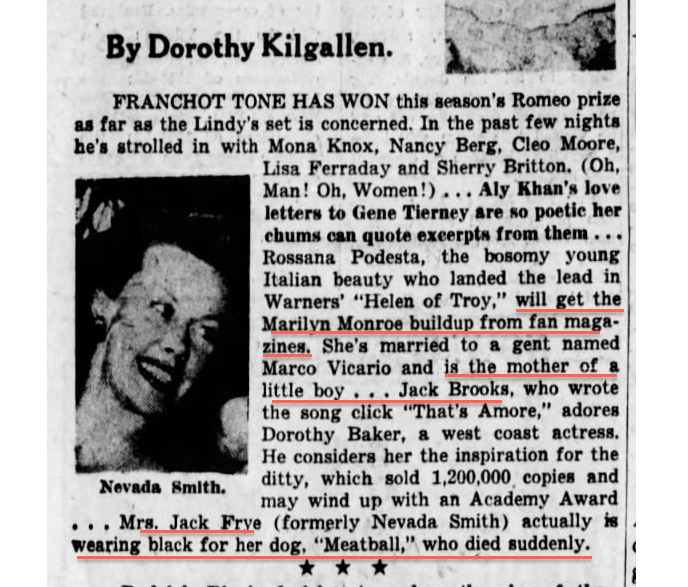
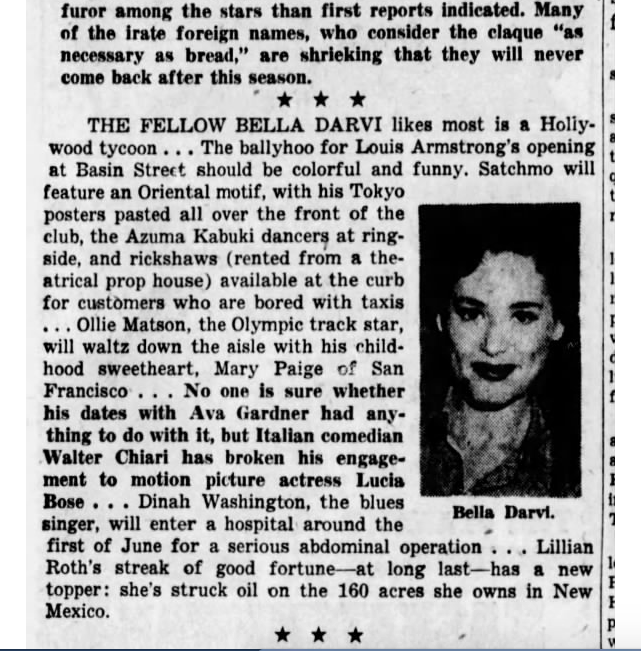
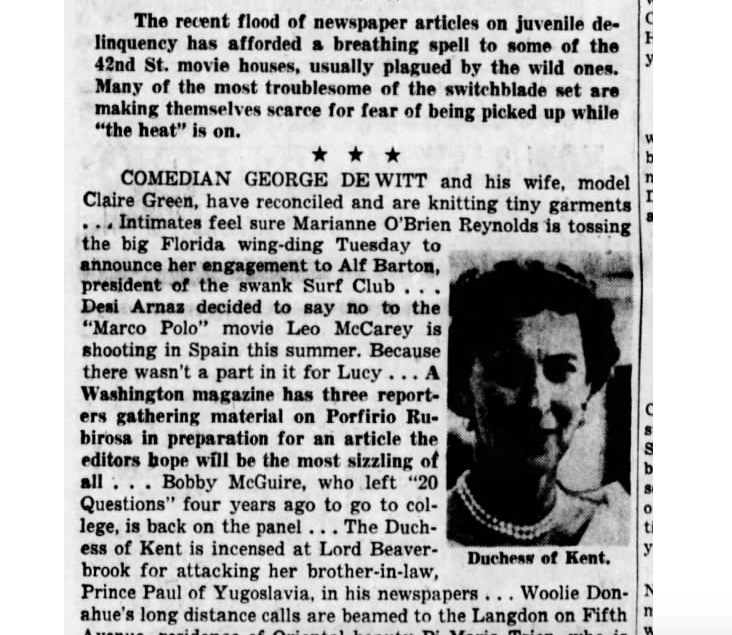
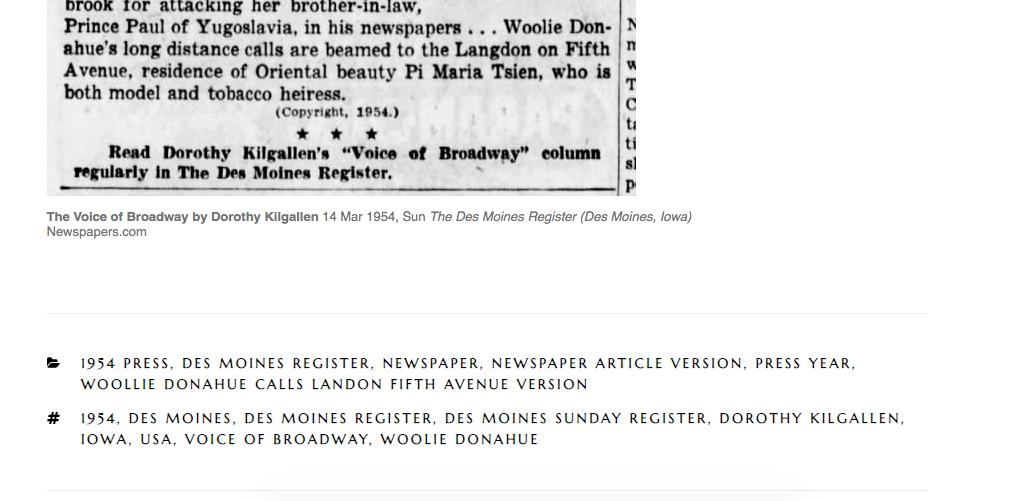
CLIPPED FROM
The Times
Shreveport, Louisiana
06 Jul 1958, Sun • Page 57
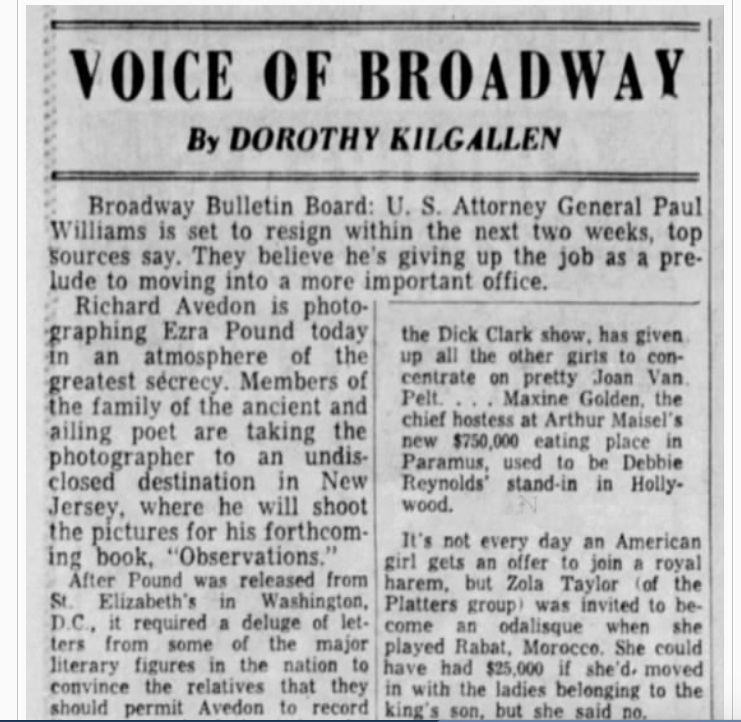

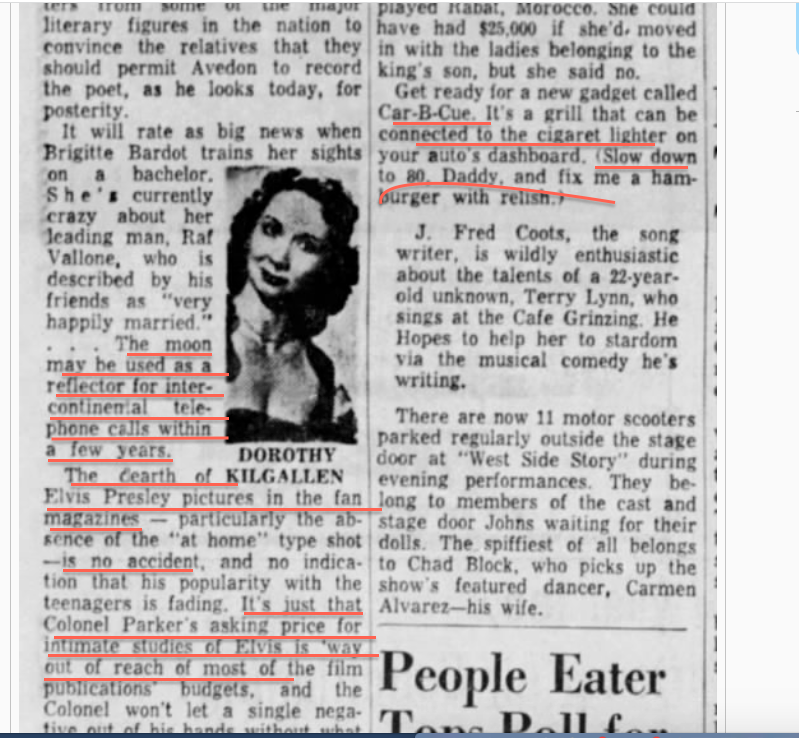
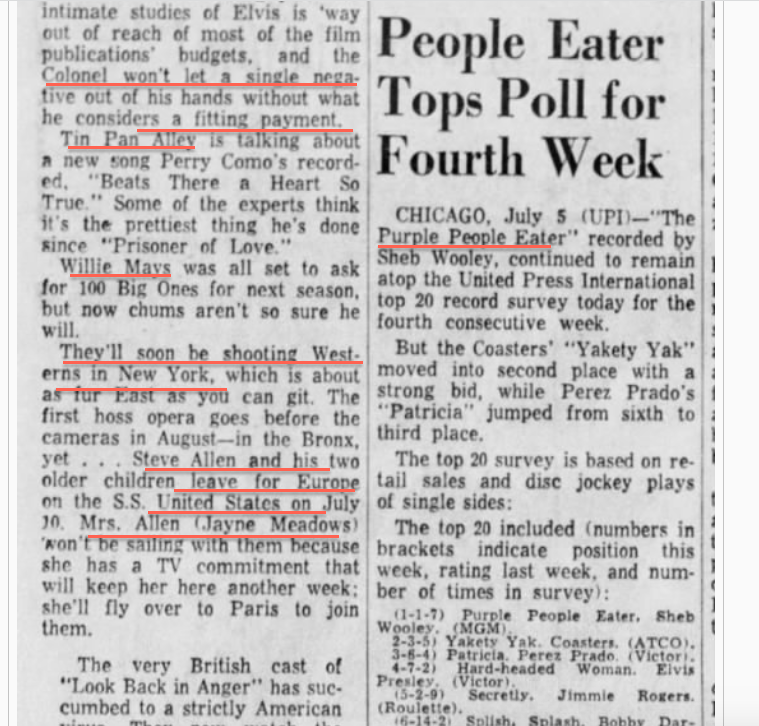
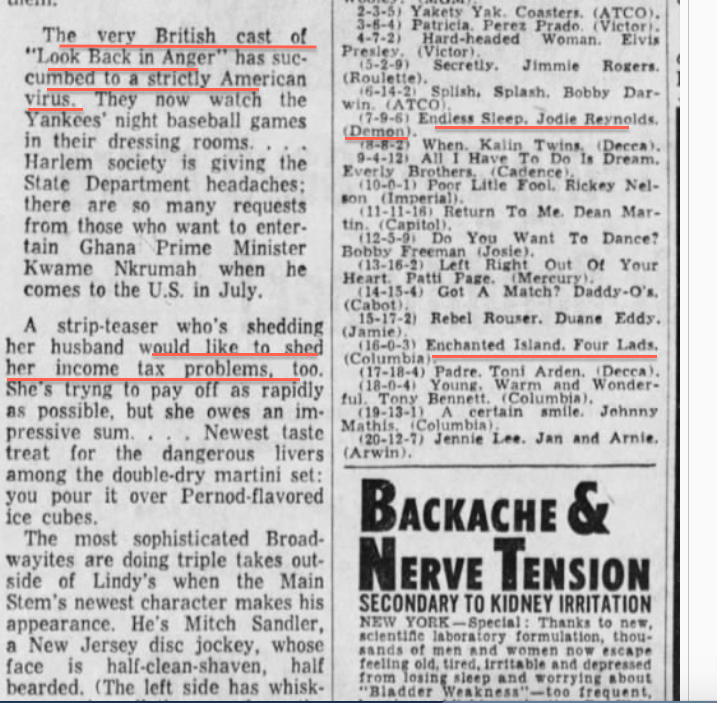
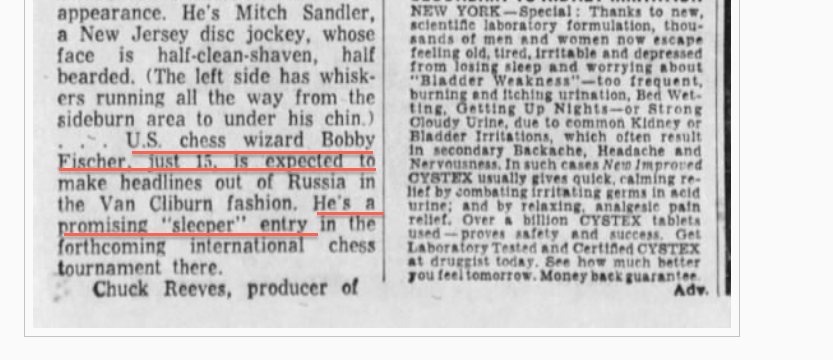
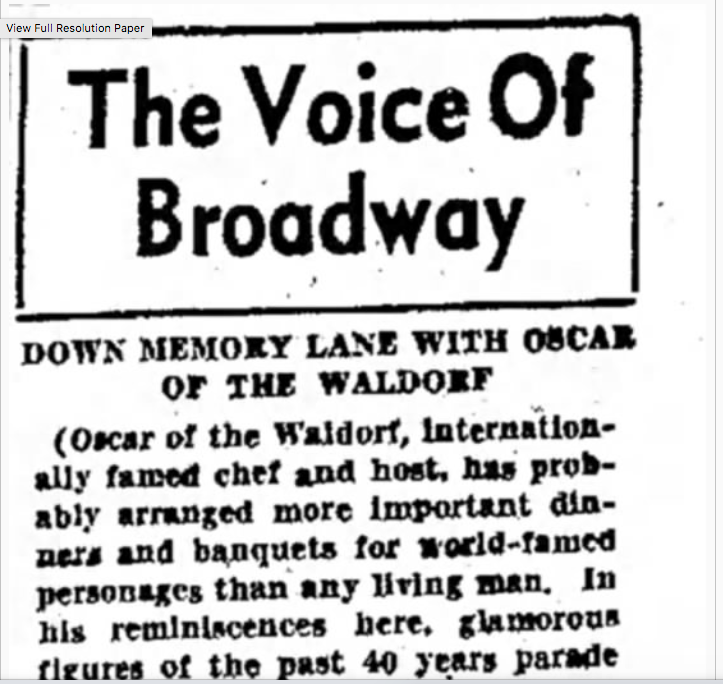
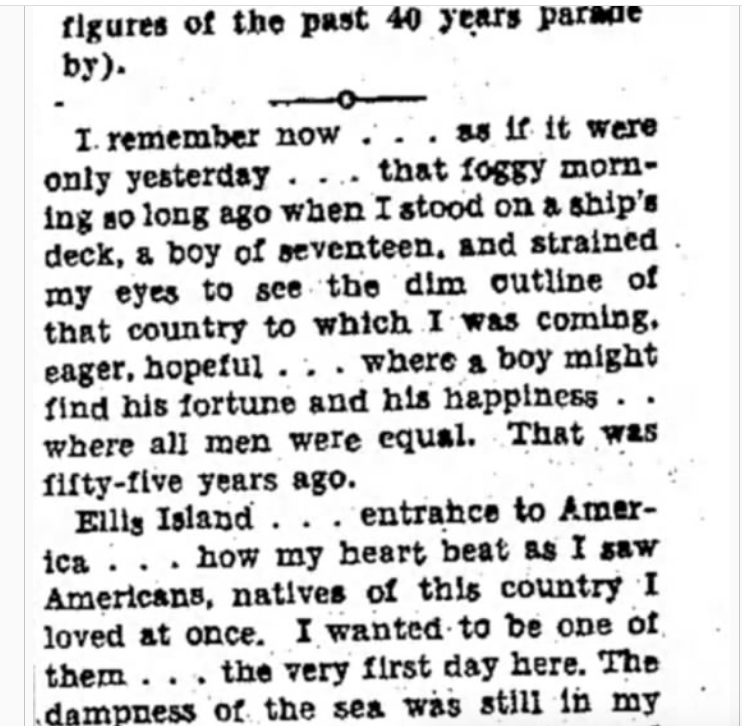
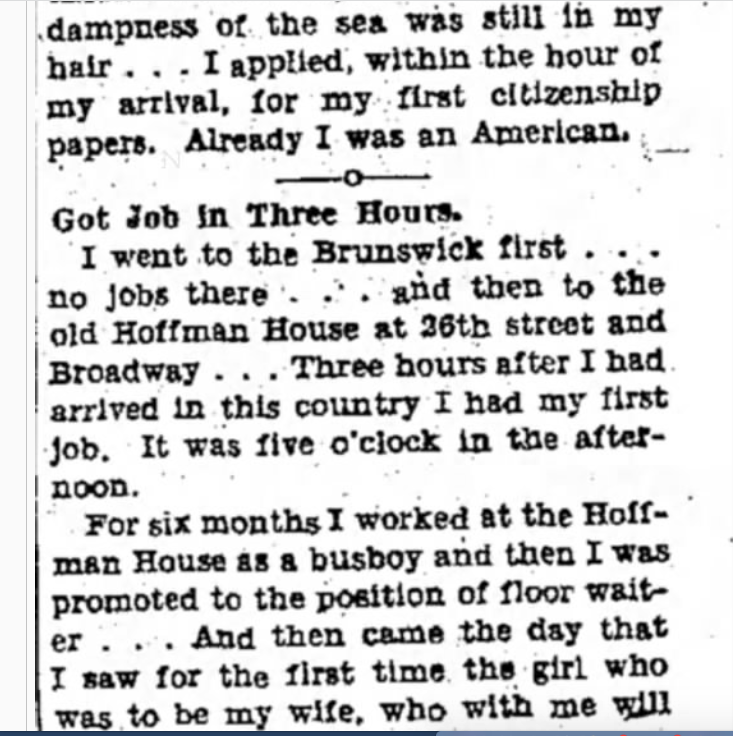
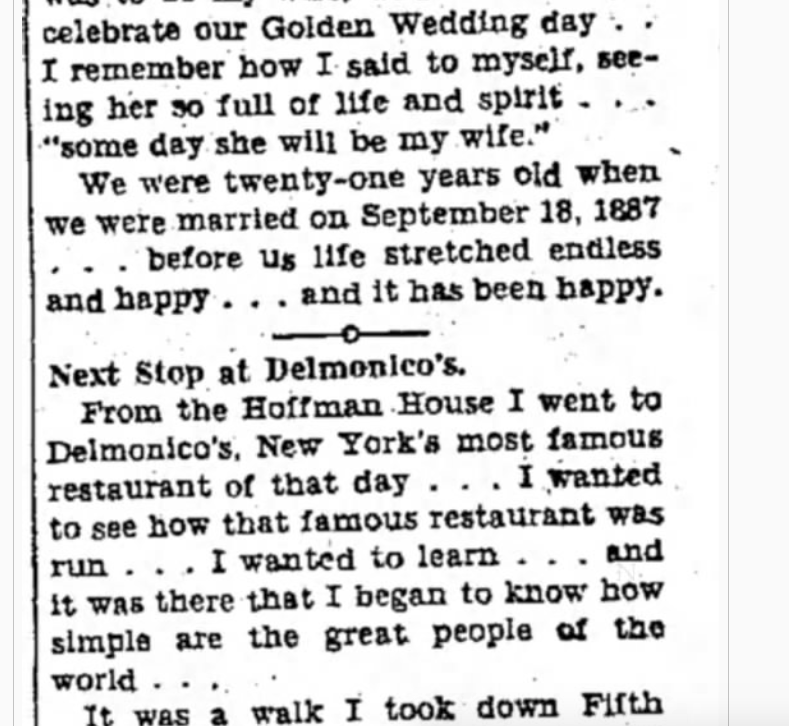

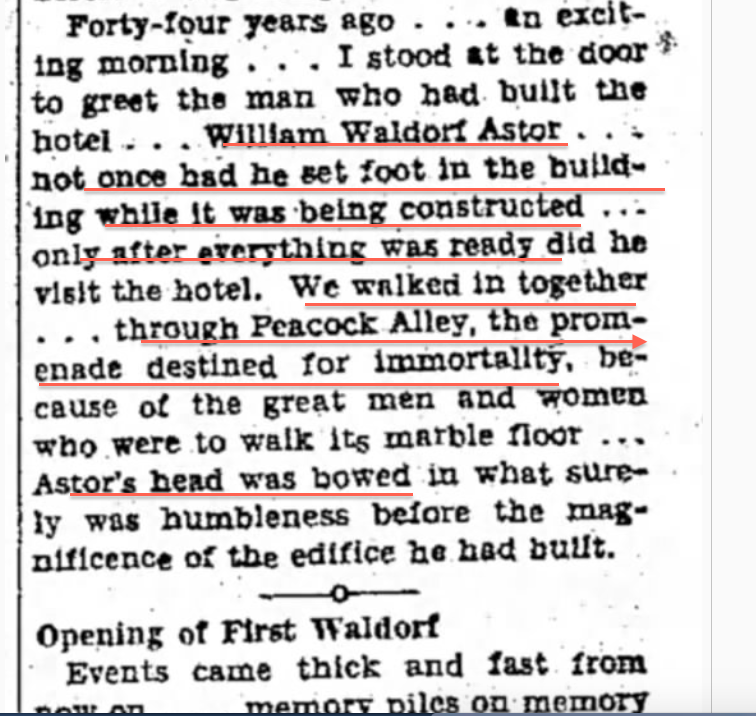
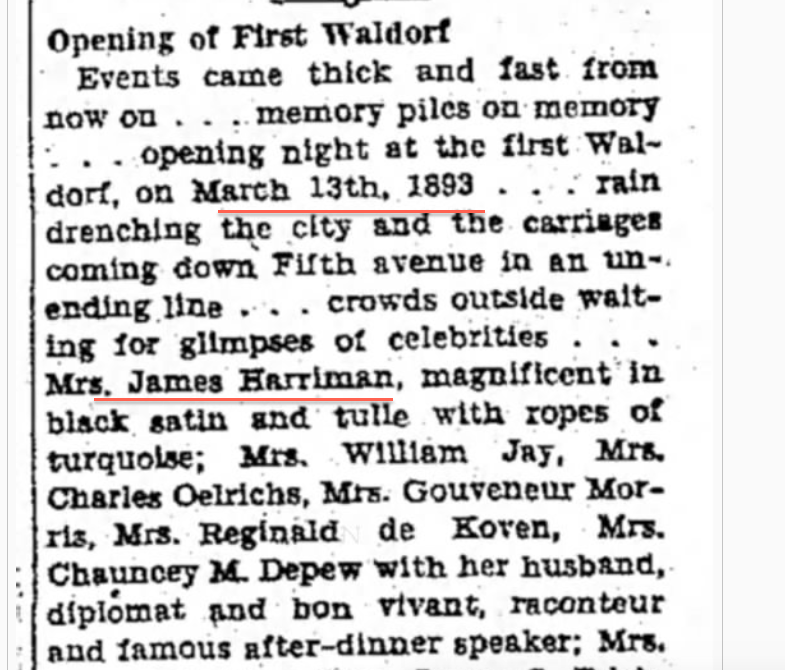
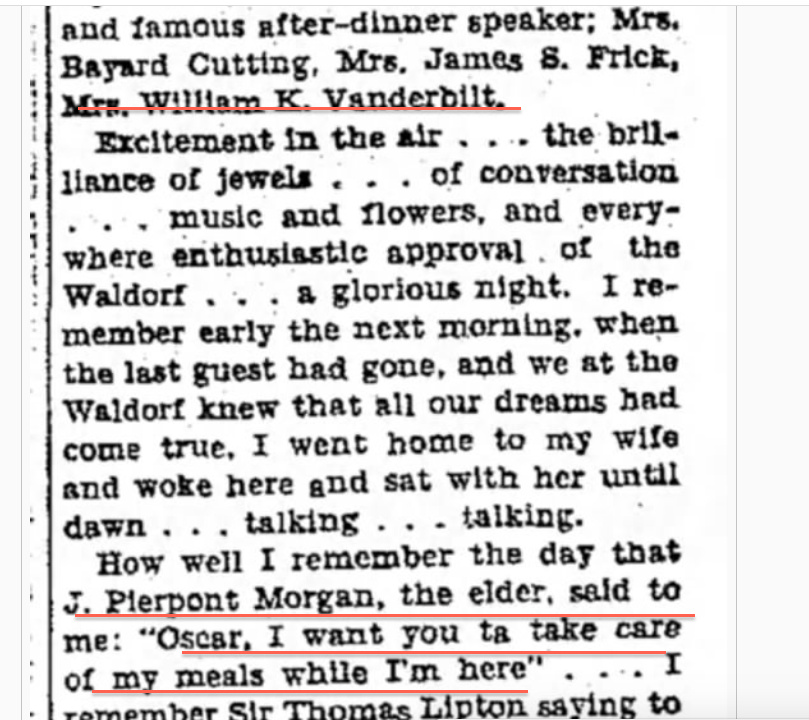
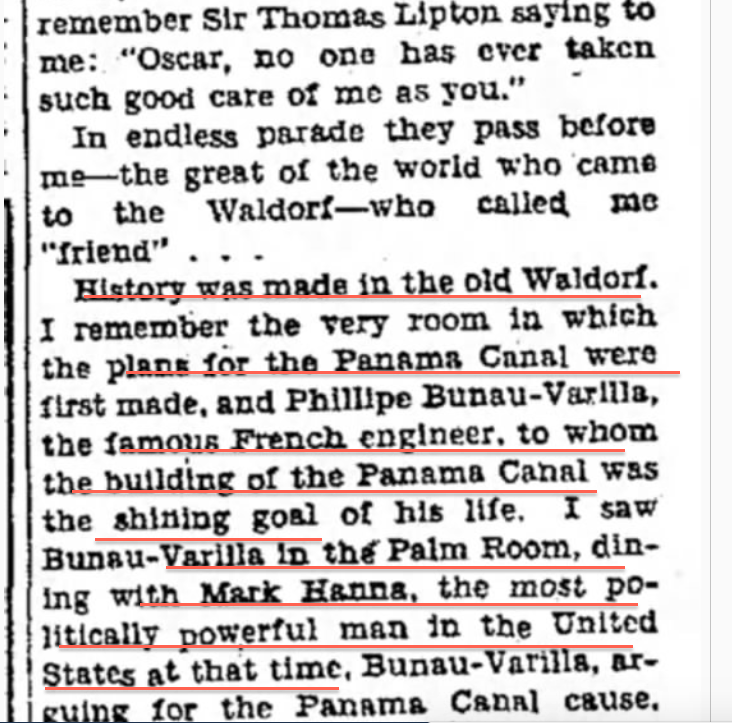
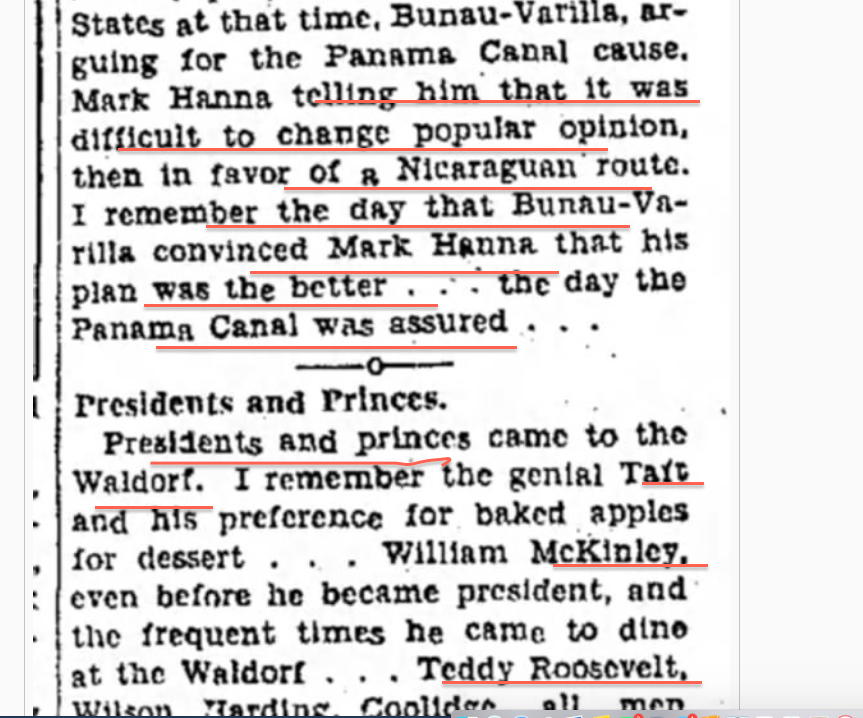
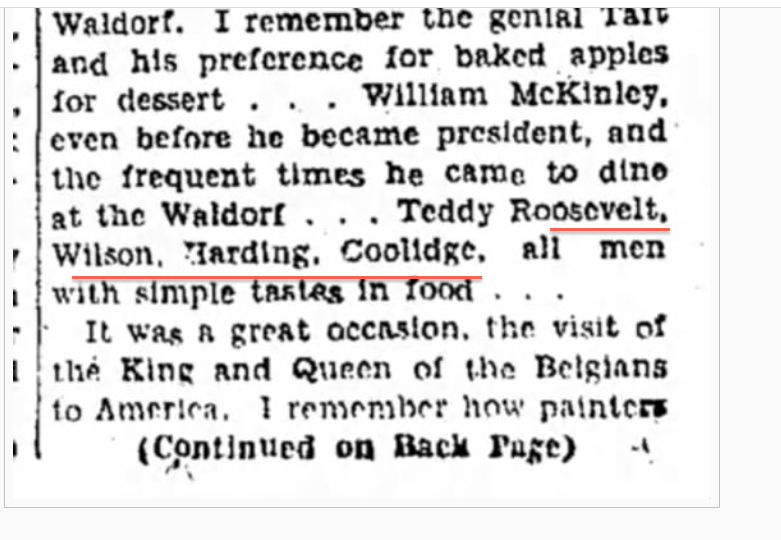
Where you Really Live! What really went down at the exclusive Jekyll Island. What the turned up eagle wings on the dollar bill and the flagstaff indicated. Who was Sworn to demolish their control in devolution. A Plan Decades in the making!
Check out Dorothy's description of Jack Ruby here,
http://ww1.dorothykilgallenstory.org/
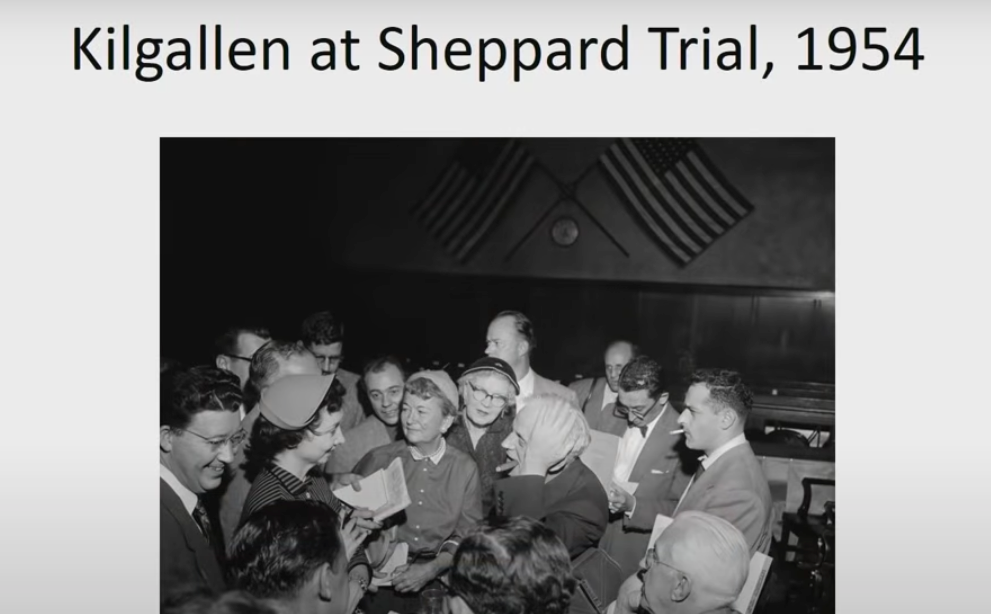
The Fugitive was based on the Sam Sheppard case.
It is said that Kilgall became obsessed with the JFK case. Why did that happen?
- She was a good friend of JFK's
He had been to her home and played charades
She saw him at the Stork Club when he was a senator.
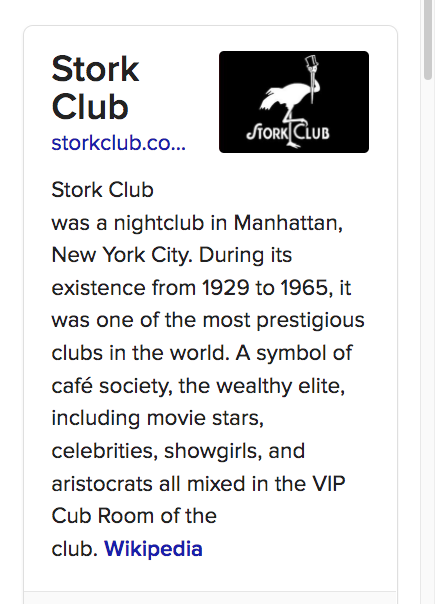
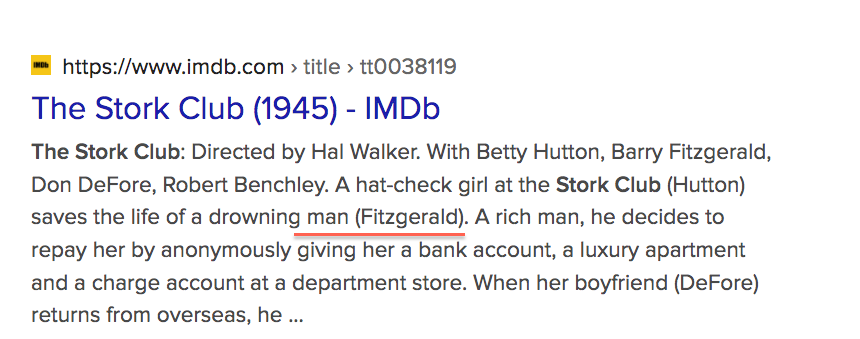
Honey Fitz, JFK named his Yacht after his Grandfather the Pixie Mayor of Boston who was charming and known for singing Sweet Adeline. Deep Dive connected to McAfee Drops? How about the IBM 7094 and Daisy Bell! You decide!
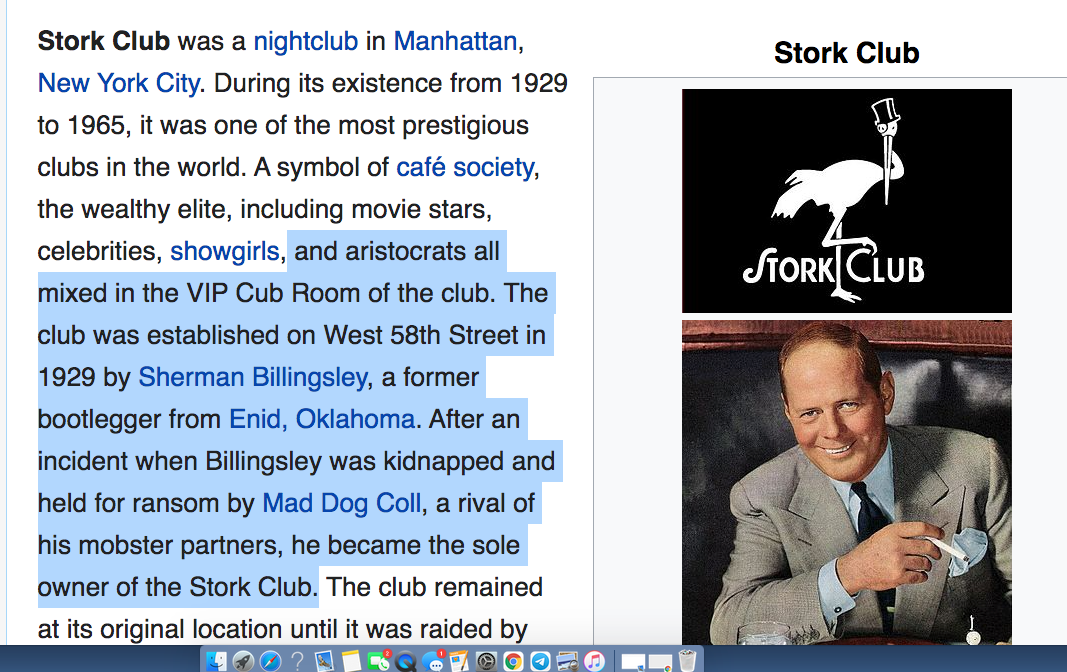
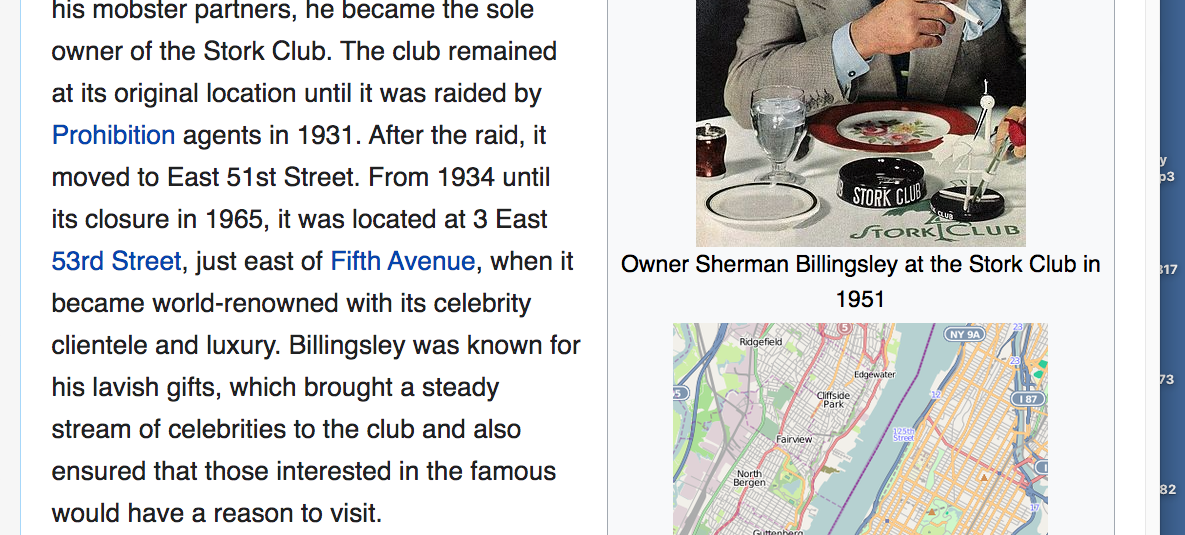
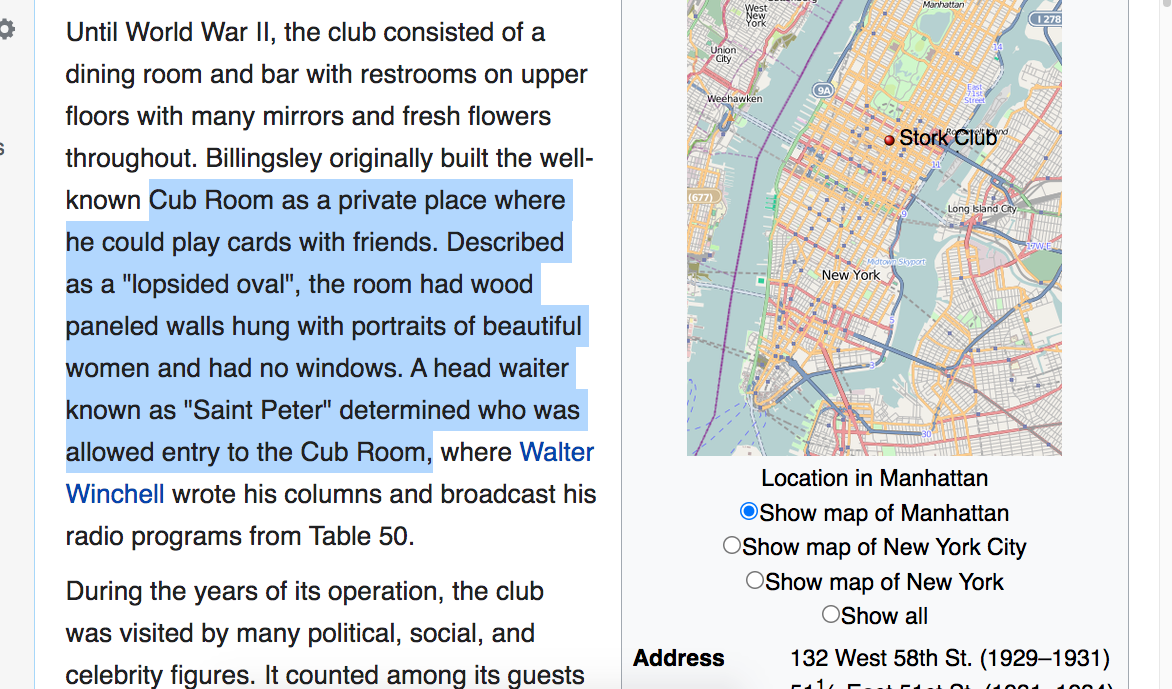
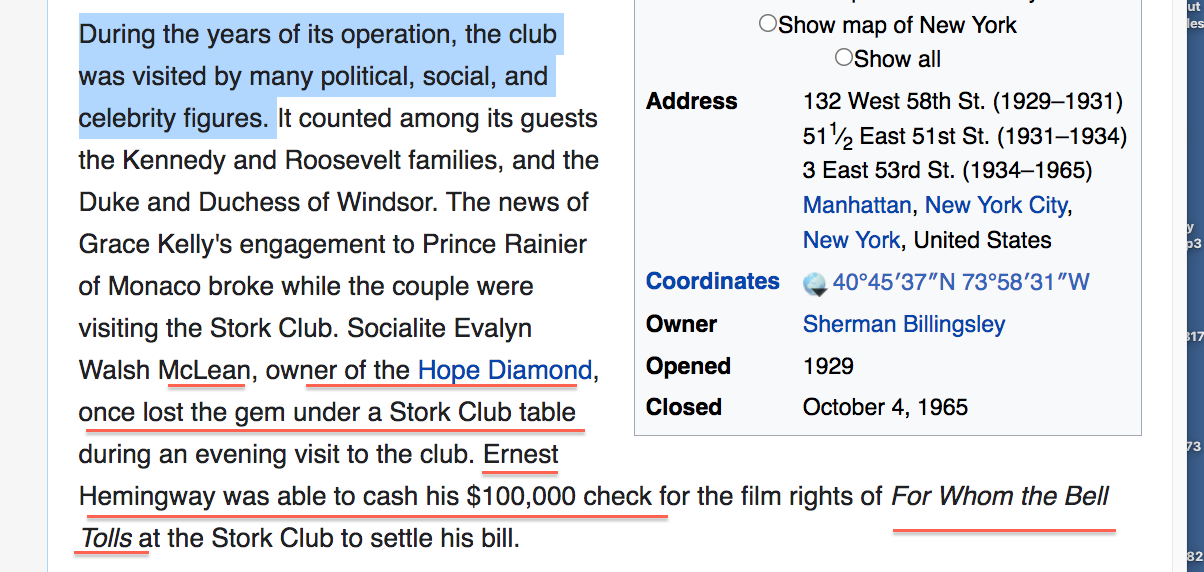
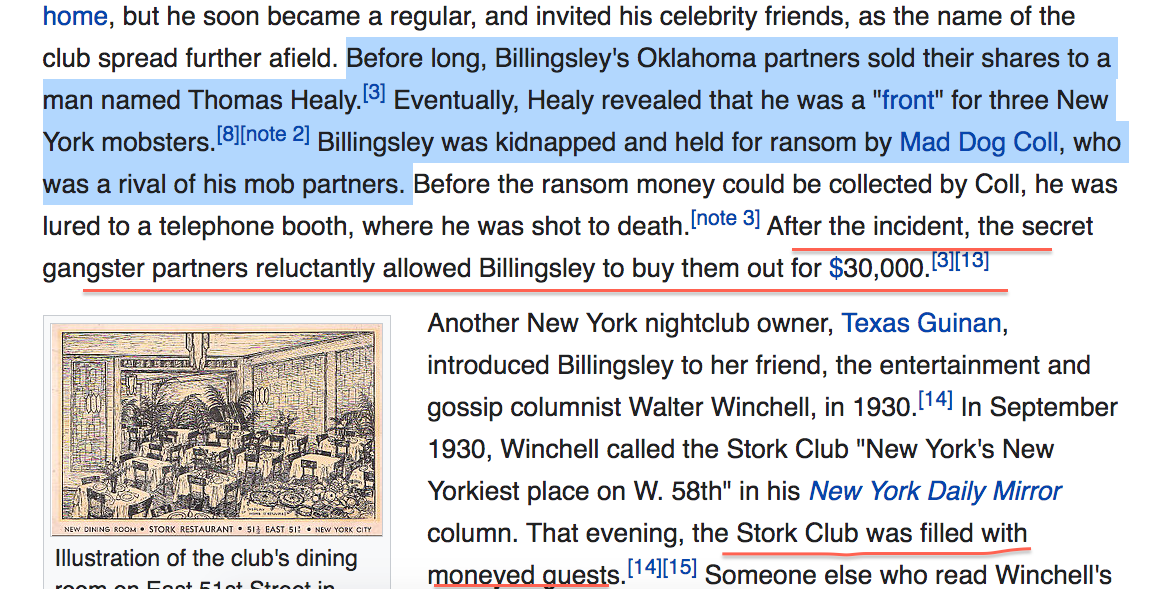
Sort of reminds of Epstein and Ghislaine Maxwell doesn't it?
Didn't they collect Blackmail on people?
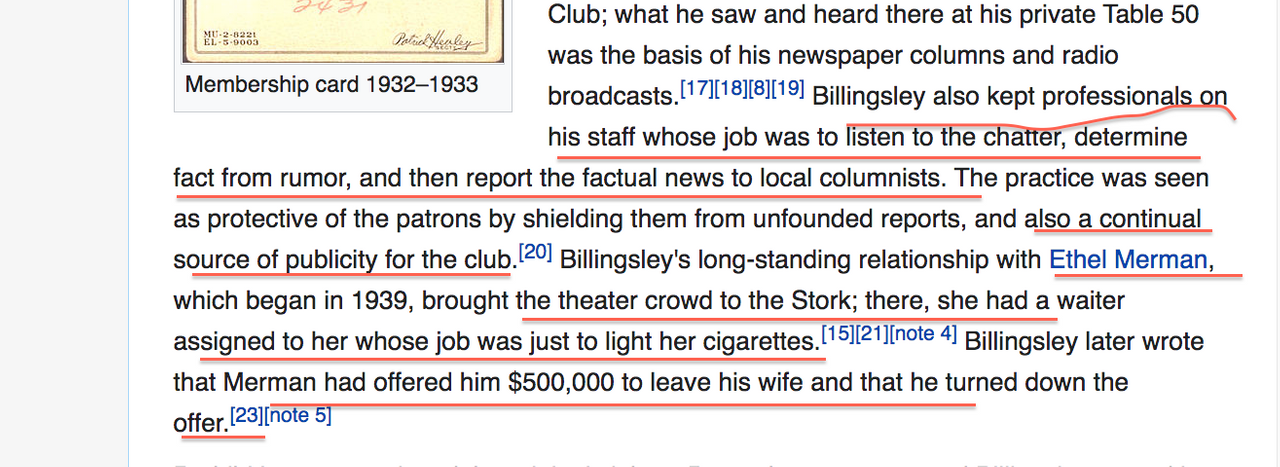
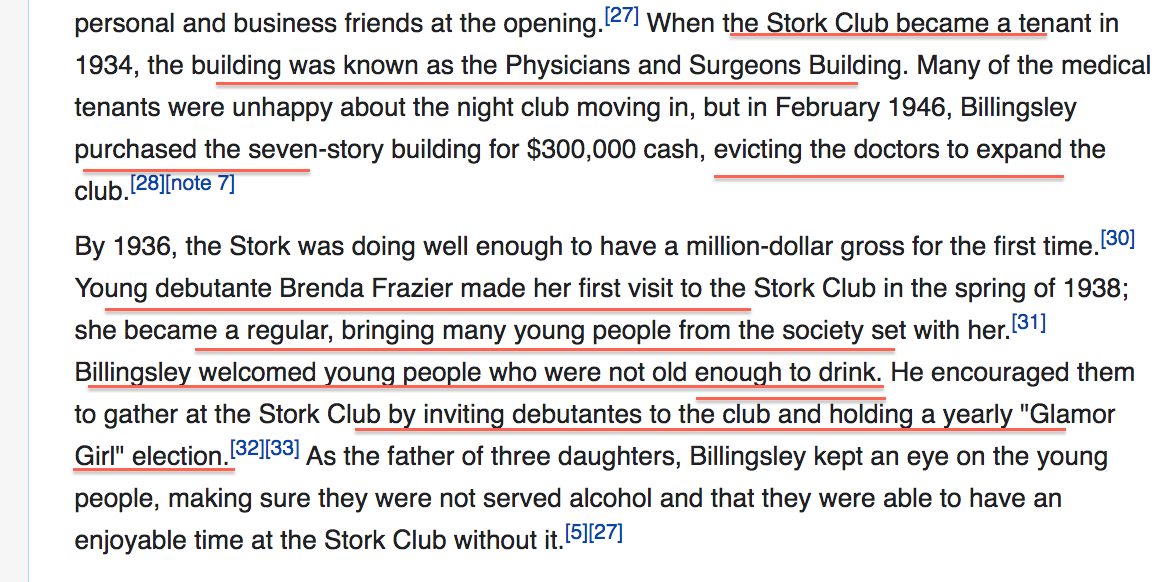
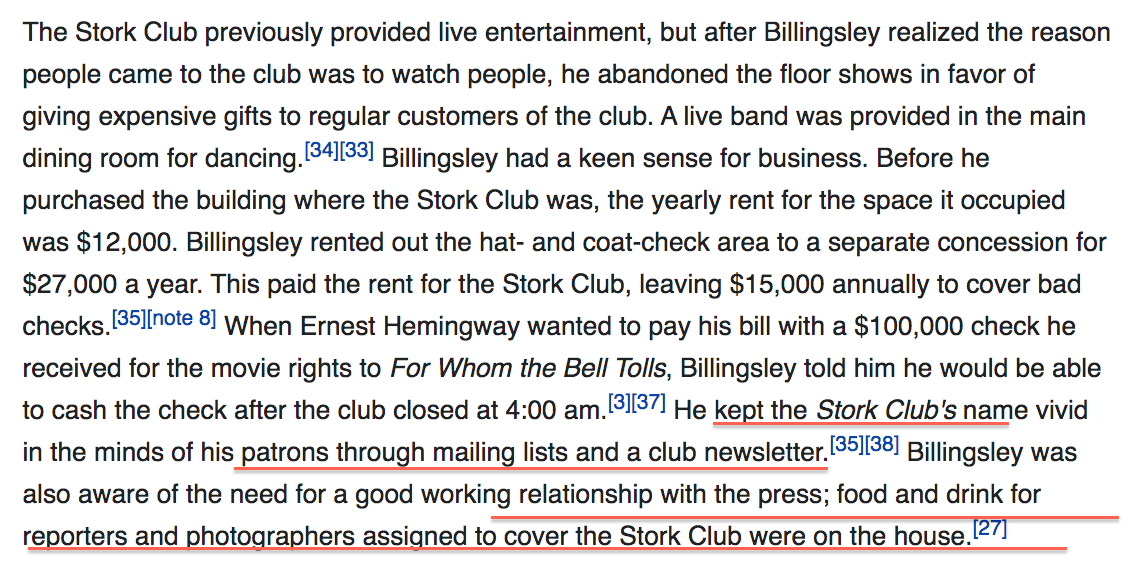
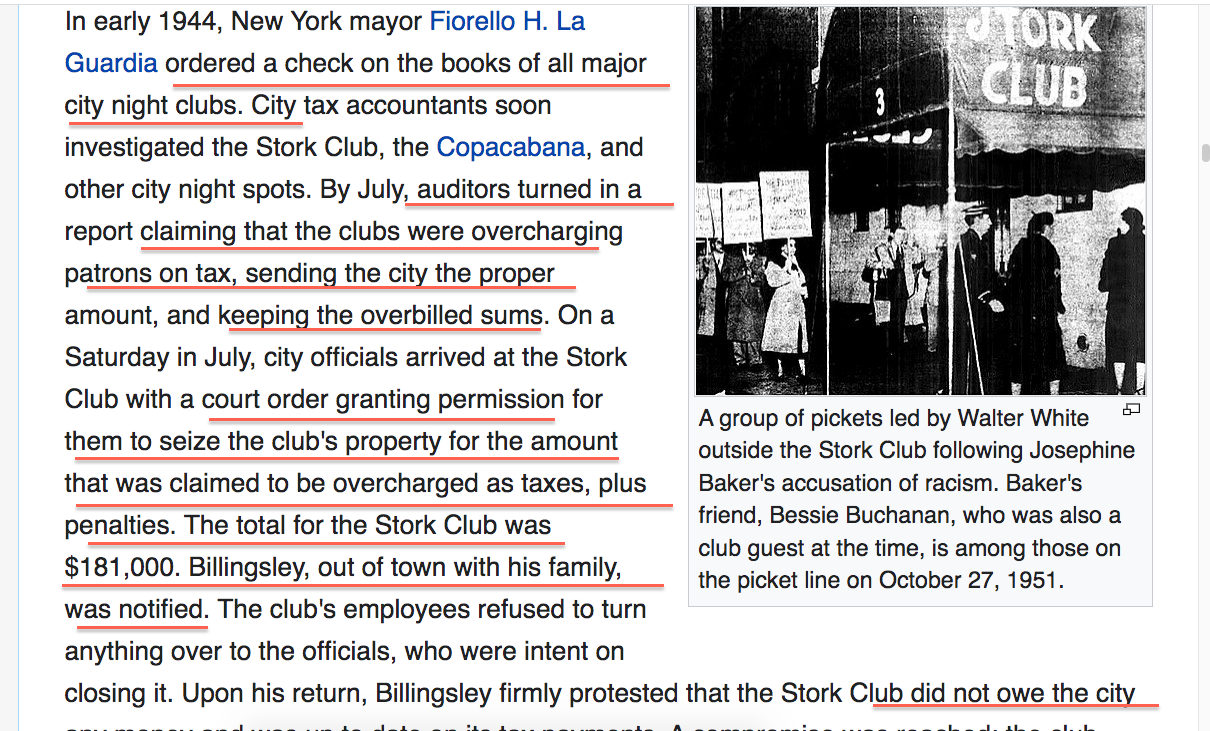

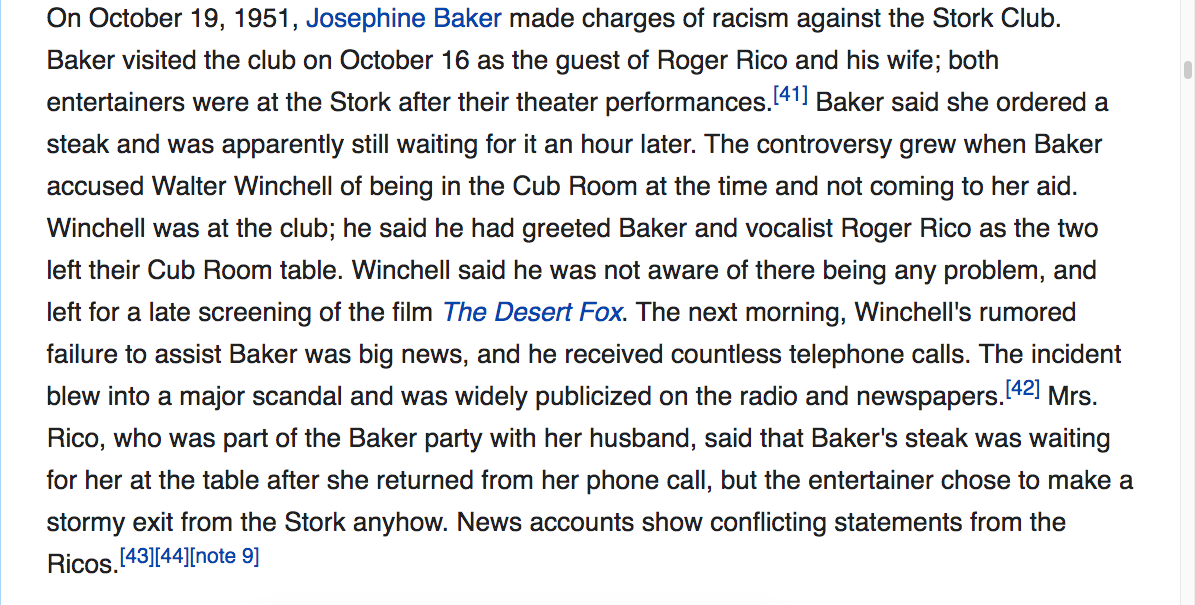
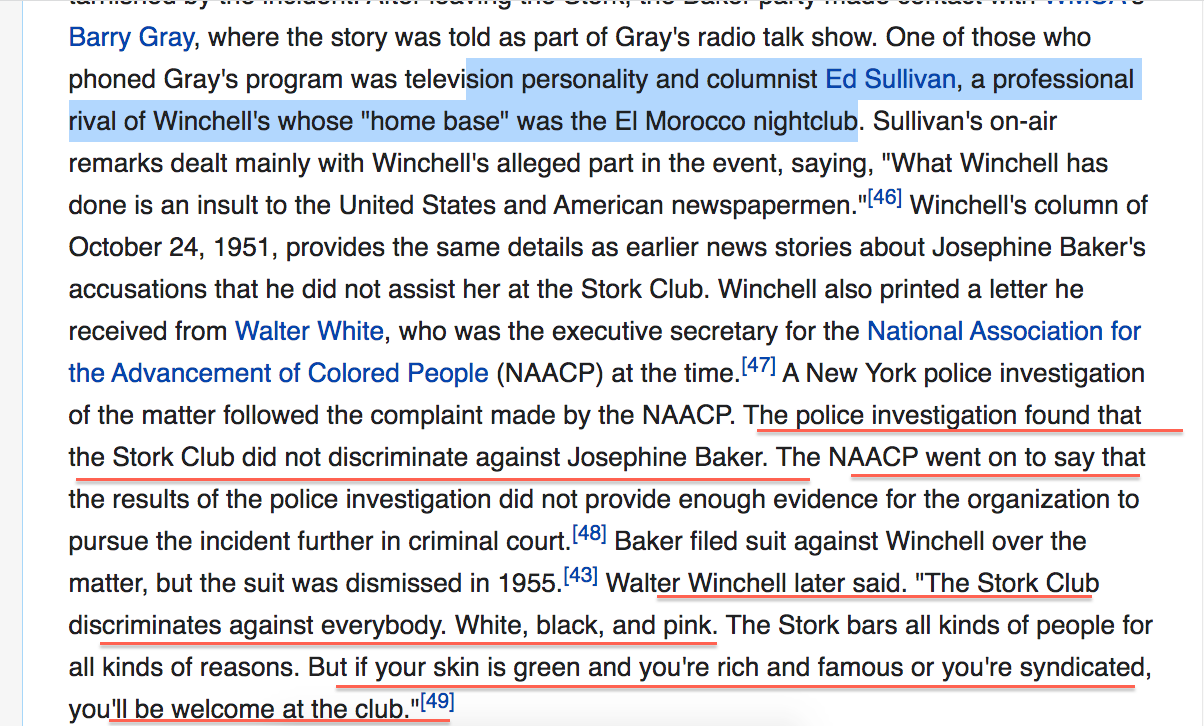

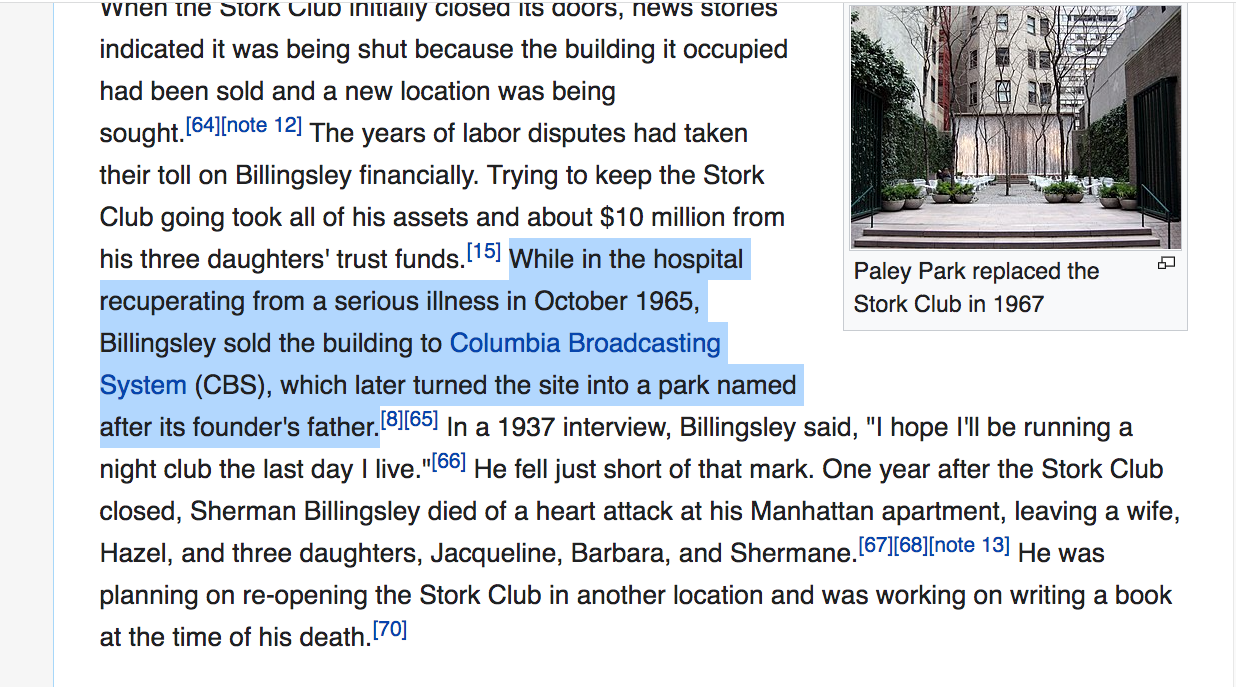
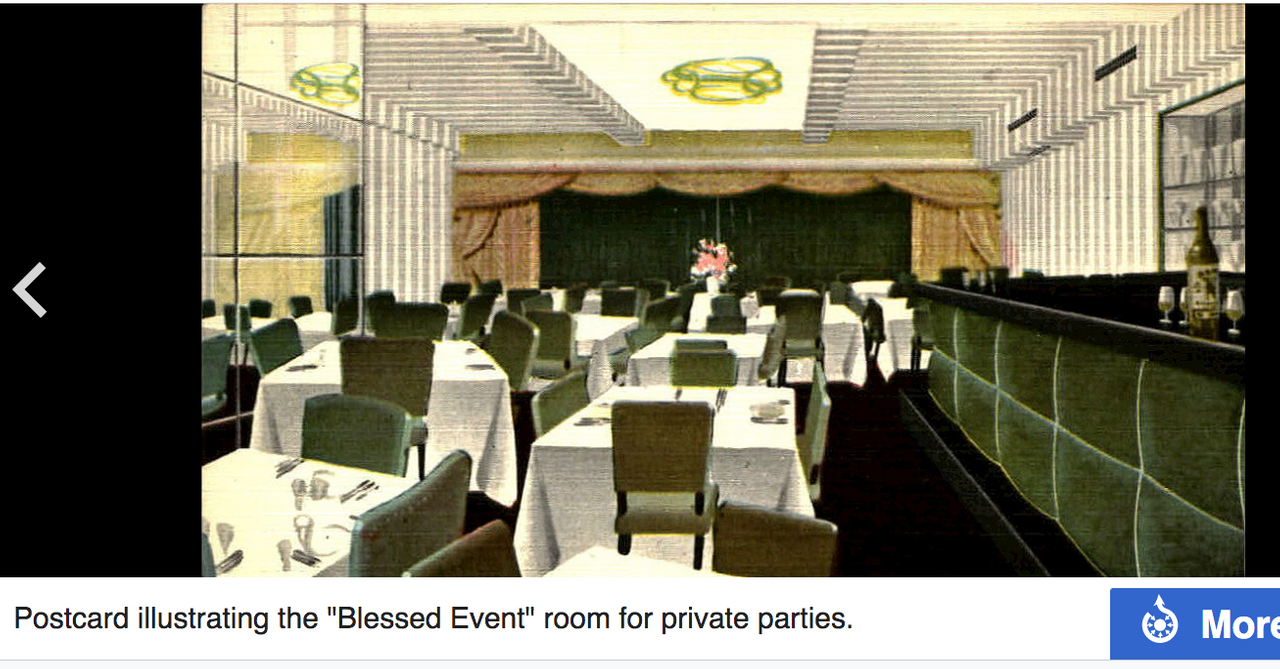
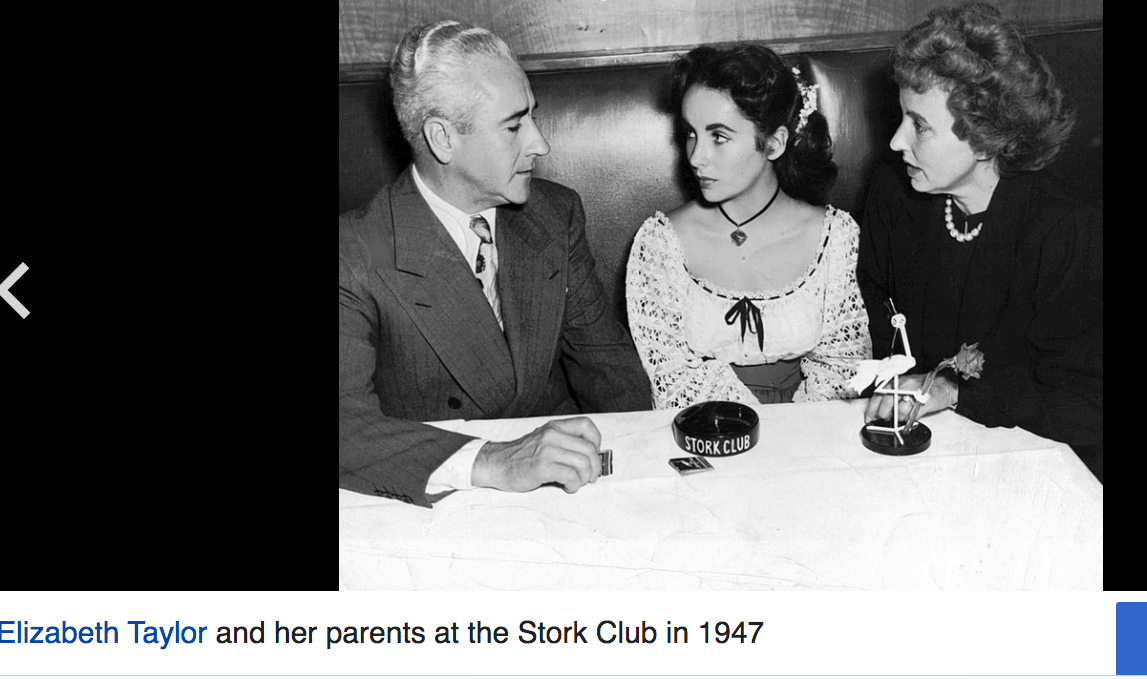
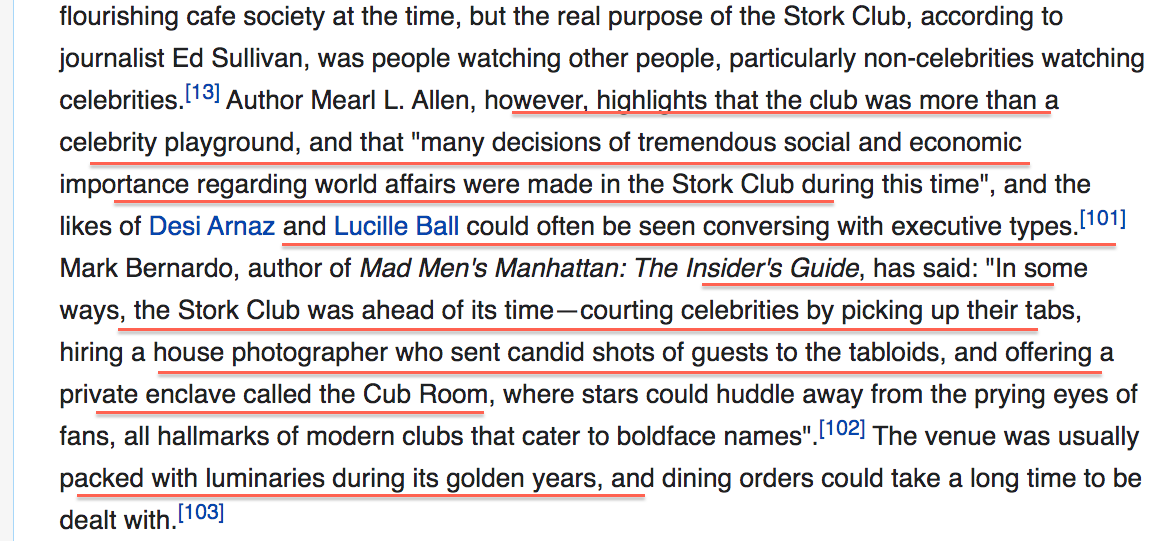
Why was Hoover so angry that Kilgallen was poking around about what the truth was about the assassination.
Why didn't more of the reporters interview Jack Ruby?
Dorothy Kilgallen interviewed Jack Ruby twice.
Joe Tonahill explained about the interview that was permitted by Dorothy Kilgallen.
See footage here,
http://ww1.dorothykilgallenstory.org/
Why did Jack Ruby tell Dorothy that he was nervous and worried?
Why did he say he felt he was on the verge of something he didn't understand?
He said, "the breaking point maybe."
When Dorothy told him she felt he was holding up pretty well, he said, "I'm fooling you Dorothy, I'm really scared."
When Dorothy died, her files, documents, everything disappeared and they've never been found.
Who do you suppose really has them?
Shortly after, she did not go to Washington D.C. to look into the government.
She didn't stay in Dallas to look into LBJ.
She didn't go to Cuba to look into the Cubans or Russians.
Rather she went to New Orleans because Carlos Marcello. . .
- considered one of the most dangerous mafioso in the country
- the one with the greatest motive to have killed Jack Kennedy in order to render Bobby Kennedy powerless
- Marcello was in New Orleans
an Italian-American crime boss of the New Orleans crime family from 1947 until the late 1980s. G. Robert Blakey and other investigators have asserted that Marcello along with Santo Trafficante Jr. and Sam Giancana masterminded the 1963 assassination of United States President John F. Kennedy in retaliation for federal prosecution that threatened their secret criminal organization's multibillion-dollar international organized crime empires.
With his family, Marcello immigrated to the United States in 1911 and settled in a decaying plantation house near Metairie in Jefferson Parish, a suburb of New Orleans. His father adopted a different family name to avoid confusion with his supervisor on the sugar plantation where he had started work. His overseer, also Minacore, chose the appellation Marcello. The family changed all their other names, and Calogero Minacore became Carlos Joseph Marcello.
Young Marcello turned to petty crime in the French Quarter. He was later imprisoned for masterminding a crew of teenage gangsters who carried out armed robberies in the small towns surrounding New Orleans. At the time, local newspapers compared him to the character of Fagin from Charles Dickens' novel Oliver Twist. This conviction was later overturned. However, the following year he was convicted of assault and robbery and was sentenced to the Louisiana State Penitentiary in West Feliciana Parish for nine years. He was released after five years.
In 1938, Marcello was arrested and charged with the sale of more than 10 kg (23 pounds) of marijuana. Despite receiving another lengthy prison sentence and a $76,830 fine, Marcello served less than ten months and only paid a $400 fine thanks to a deal cut with former Governor Huey Long.[citation needed] On his release from prison, Marcello became associated with Frank Costello, the leader of the Genovese crime family, in New York City. At the time, Costello was involved in transporting illegal slot machines from New York City to New Orleans. Marcello provided the muscle and arranged for the machines to be placed in local businesses.
By the end of 1947, Marcello had taken control of Louisiana's illegal gambling network. He had also joined forces with Genovese crime family associate Meyer Lansky in order to skim money from some of the most important casinos in the New Orleans area shortly after becoming associated with the Todaro family through marriage. According to former members of the Chicago Outfit, Marcello was also assigned a cut of the money skimmed from Las Vegas casinos, in exchange for providing "muscle" in Florida real estate deals. By this time, Marcello had been selected as "The Godfather" of the New Orleans Mafia, by the family's capos and with the approval of The Commission after the deportation of his predecessor, Sylvestro Carolla, to Sicily. He held this position for the next thirty years. In a 1975 extortion trial, two witnesses described Marcello as "The Godfather" of the New Orleans crime syndicate.
Marcello appeared before the U.S. Senate's Kefauver Committee on organized crime on January 25, 1951. He pleaded the Fifth Amendment 152 times. The Committee called Marcello "one of the worst criminals in the country".
On March 24, 1959, Marcello appeared before the United States Senate's McClellan Committee investigating organized crime. Serving as Chief Counsel to the committee was Robert F. Kennedy; his brother, Senator John F. Kennedy, was a member of the committee. In response to committee questioning, Marcello invoked the Fifth Amendment and refused to answer any questions relating to his background, activities, and associates.
From then on, Marcello became an avowed enemy of the Kennedys.
On April 4, 1961, the U.S. Justice Department, under the direction of Attorney General Robert F. Kennedy, apprehended Marcello as he made what he assumed was a routine visit to the immigration authorities in New Orleans, then deported him to Guatemala.[10][11] Two months later, he was back in New Orleans. Thereafter, he successfully fought efforts by the government to deport him.
His immigration lawyer was Jack Wasserman.
In November 1963, Marcello was tried for "conspiracy to defraud the United States government by obtaining a false Guatemalan birth certificate" and "conspiracy to obstruct the United States government in the exercise of its right to deport Carlos Marcello". He was acquitted later that month on both charges. However, in October 1964, Marcello was charged with "conspiring to obstruct justice by fixing a juror [Rudolph Heitler] and seeking the murder of a government witness [Carl Noll]".
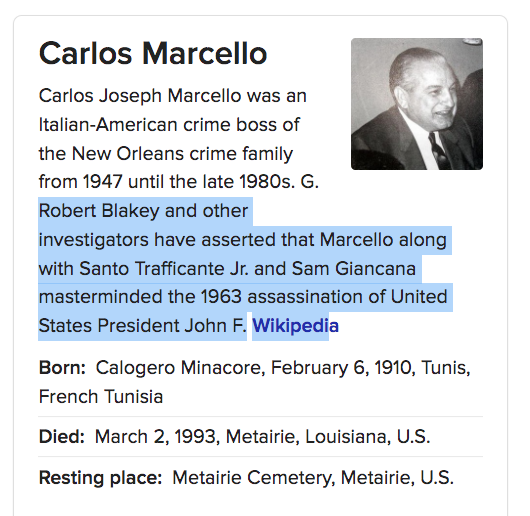
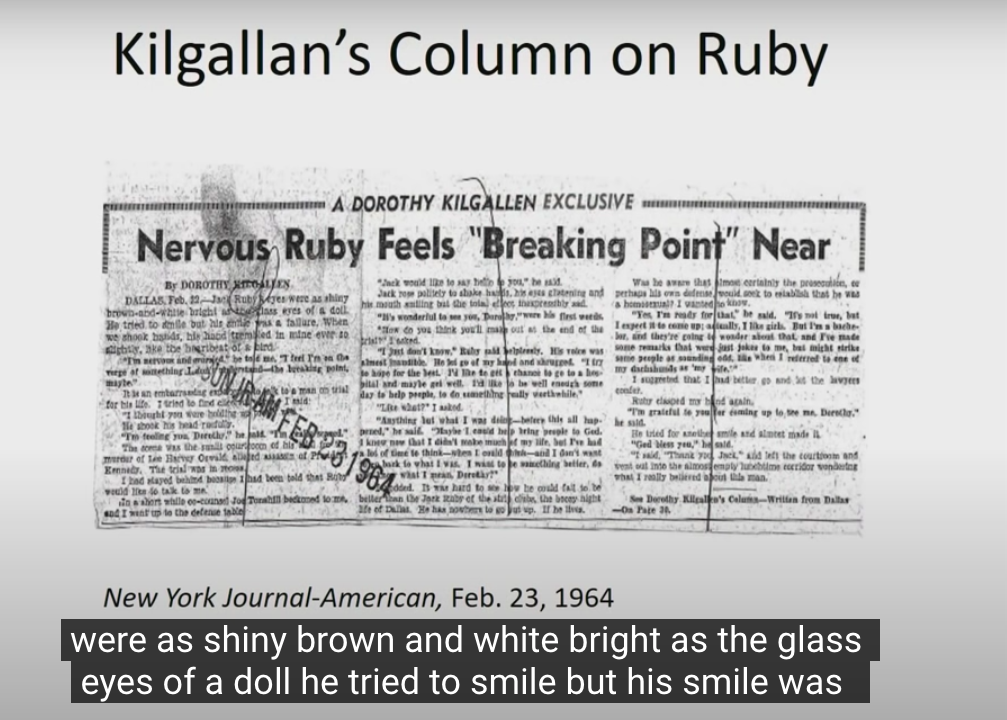
**Dorothy Kilgallen exposed Jack Ruby's testimony before the Warren Commission was supposed to be released.
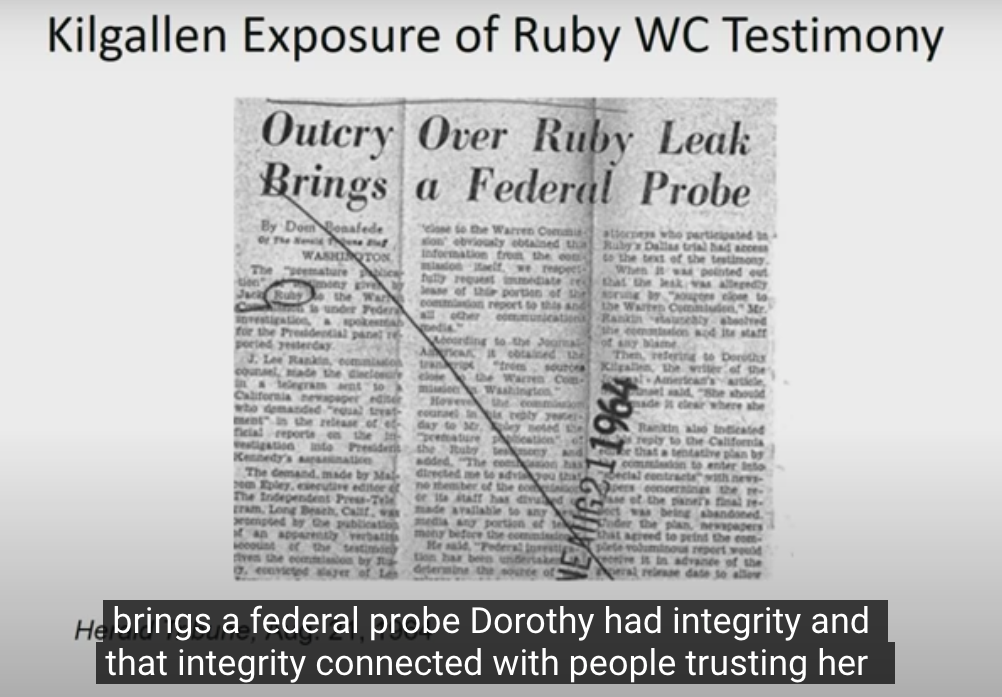
In the National Archives there is a memo from Hoover to the Warren Commission describing for the council there the fact that they had tried to get the sources.
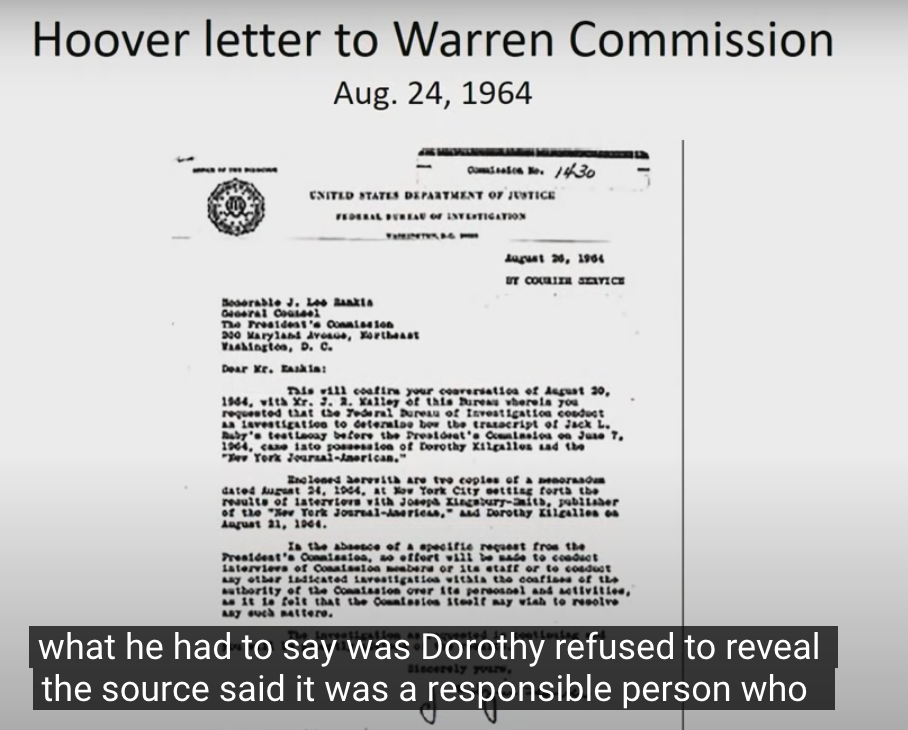
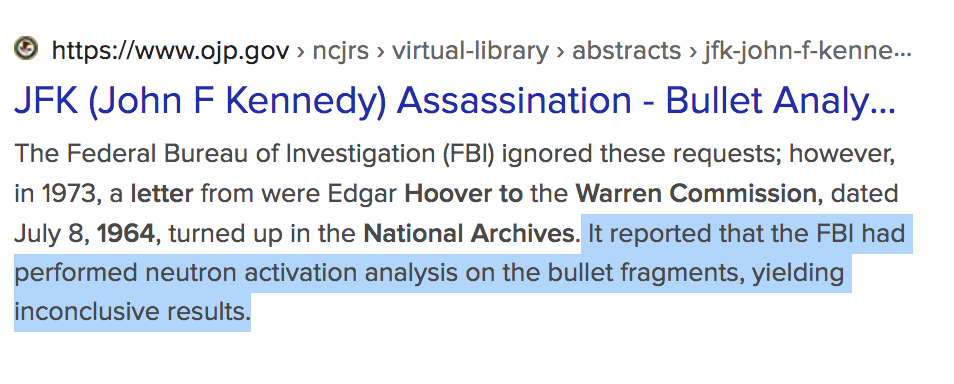
https://www.ojp.gov/ncjrs/virtual-library/abstracts/jfk-john-f-kennedy-assassination-bullet-analyses
https://www.archives.gov/research/jfk/warren-commission-report
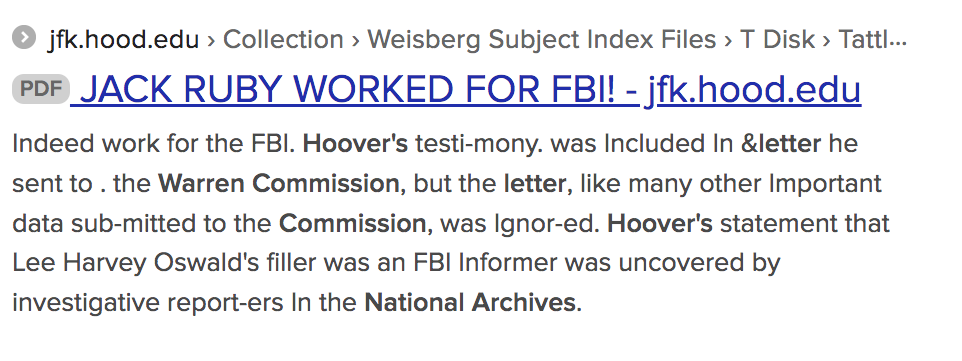
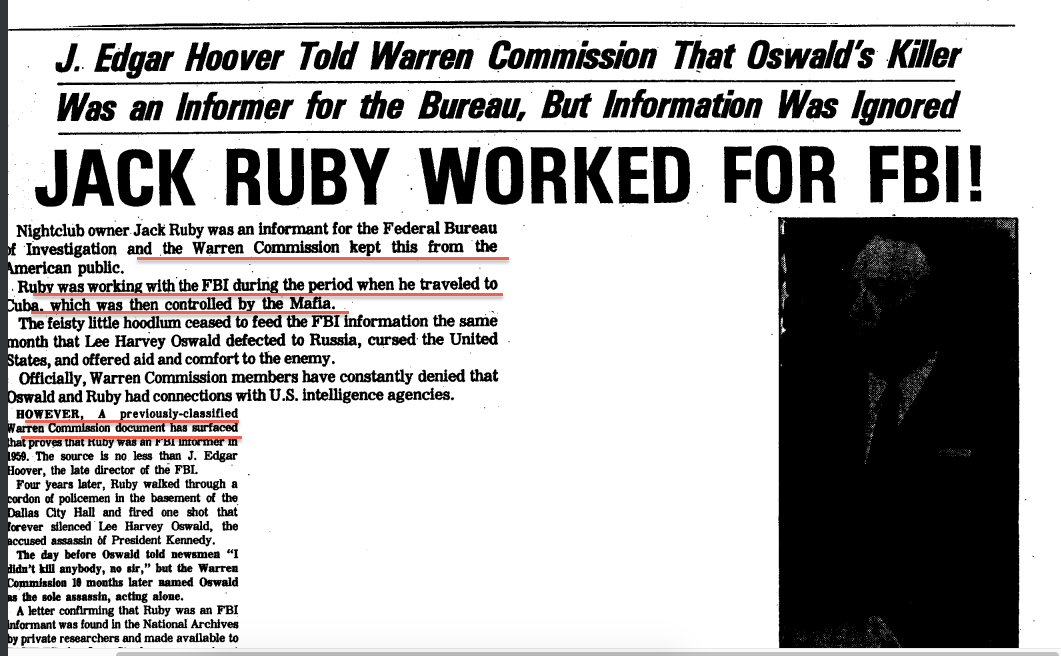
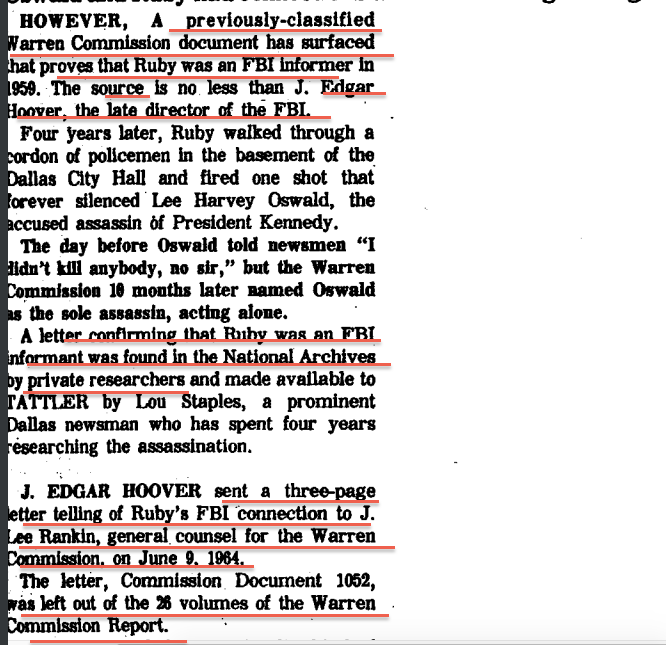
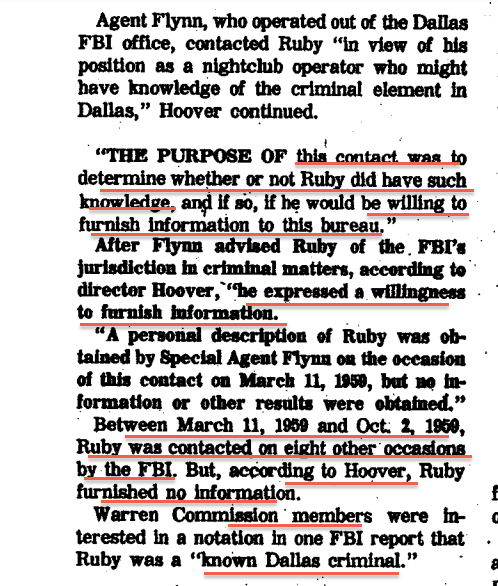
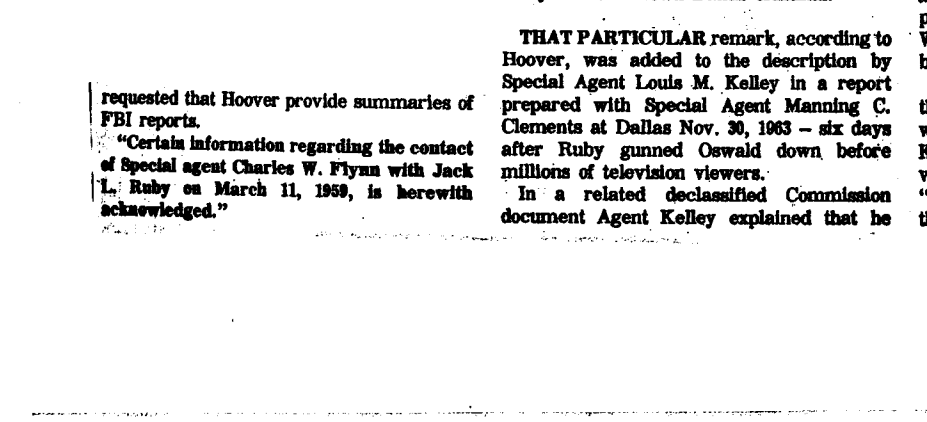
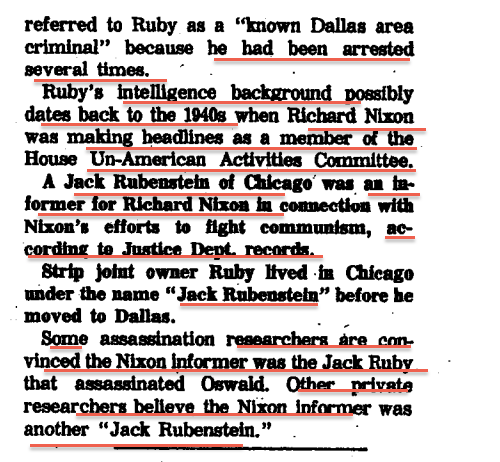
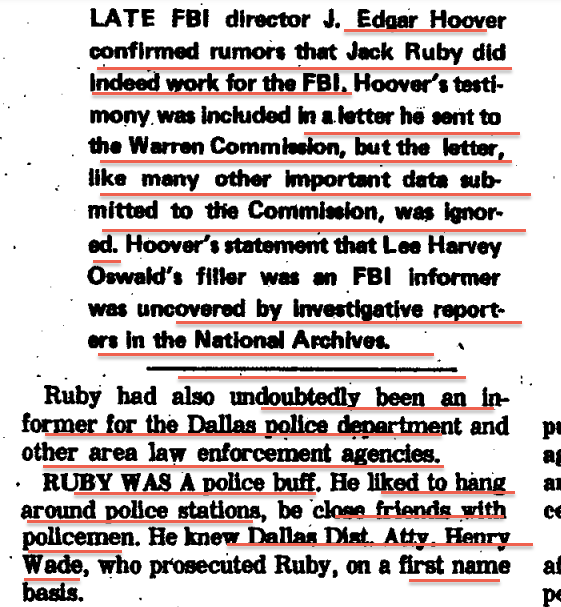
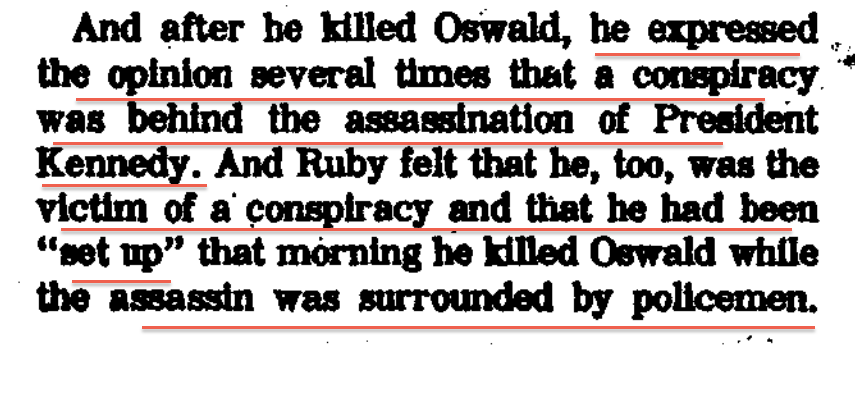
Behold a Pale White Horse?
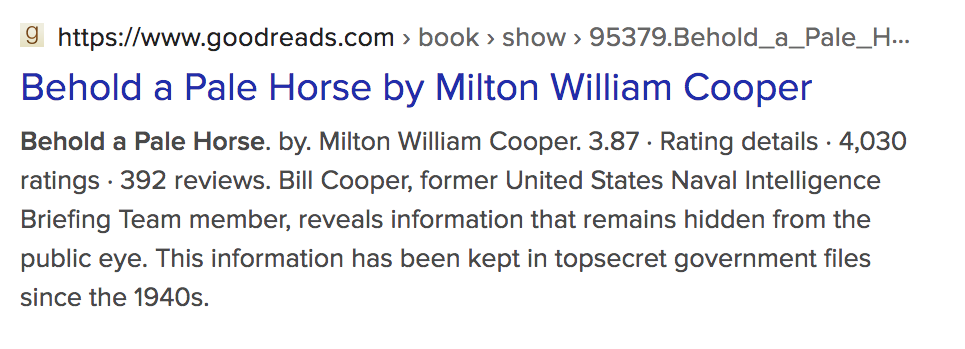
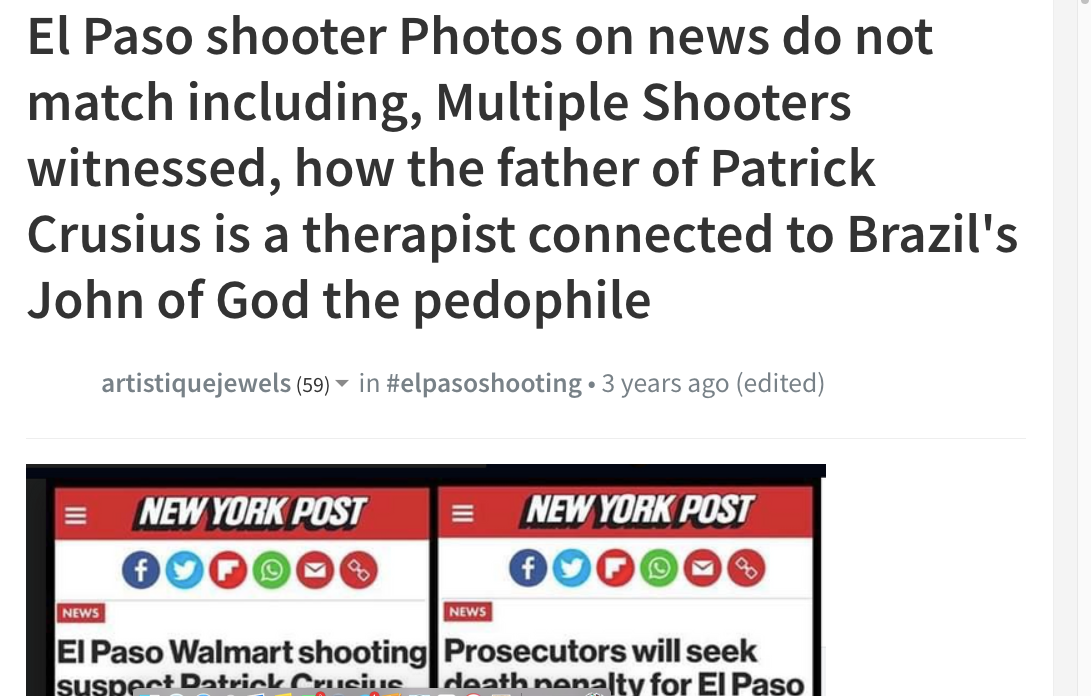
Do you find this odd?
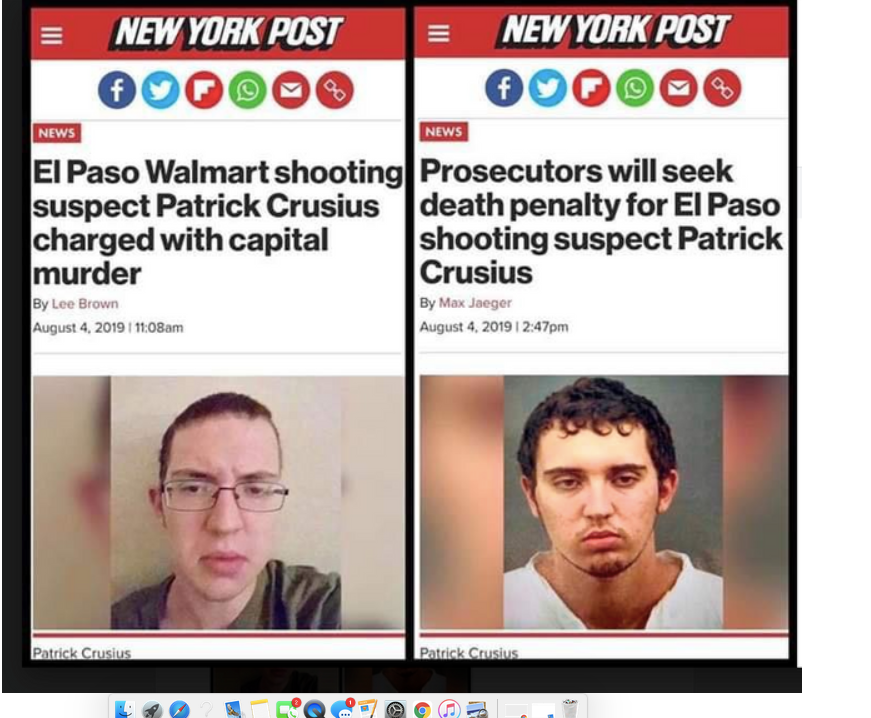
How about who his father was connected to?
Are shooters in society happenstance or are the made?
You decide!
Some pretty creepy/eerie "coincidences?"
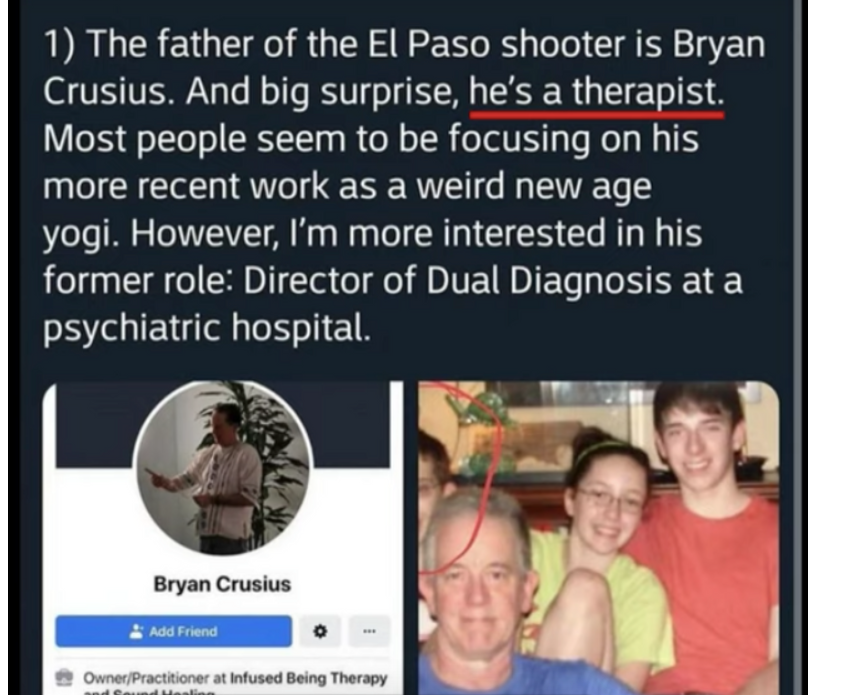
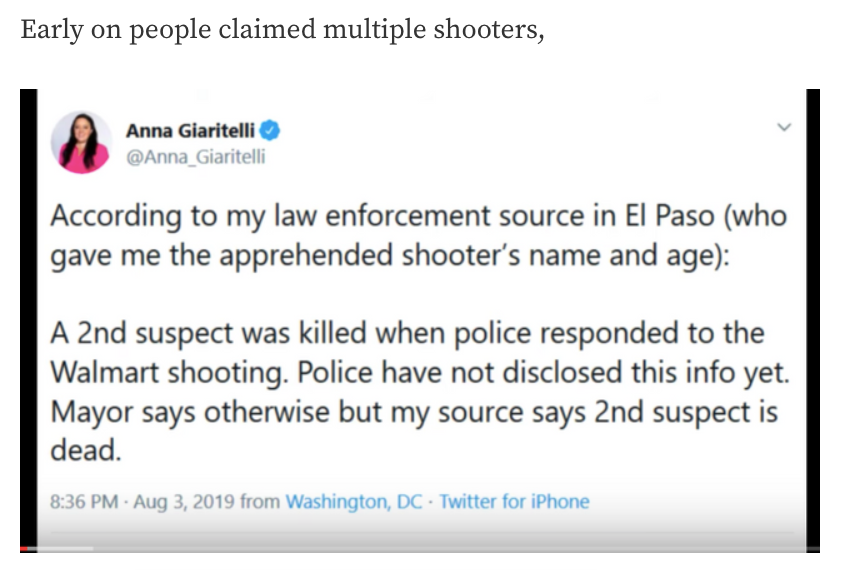
Go to the article to see a clip where a mother saw numerous shooters.
El Paso is an interesting border city divided by a mountain.
Used to live there for a period and the families there are fiercely loyal to one another, so most people look out for one another and have no reason to state other than what they saw in a situational report.
Also find within the above article more information on this,
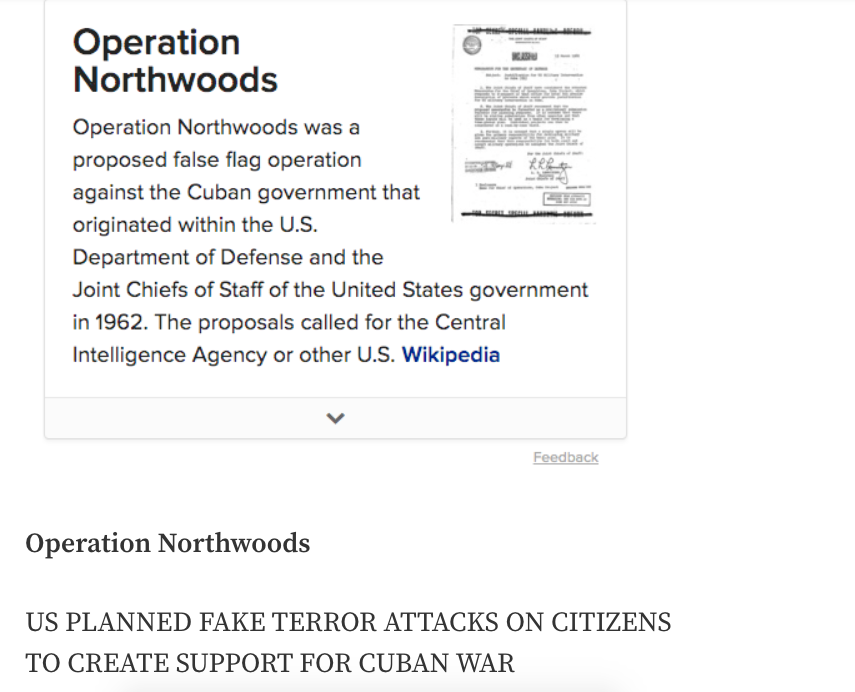
Here's just how far they will go.
Notice this just came out recently, this year. WHY? People like Bill Cooper, who wrote on this topic and they have tried to disparage for his truth telling, never promoted them to put out such a document. Why now? Is it because there are Far More people doing their own investigations, poking around, looking for evidence, checking our OWN facts and Not relying on what their corporate owned media and Deep State FBI, Department of Justice are telling us?
You decide.
Do you find it interesting, the lengths these bureaucrats will go to in order to protect themselves, their careers and their narrative?
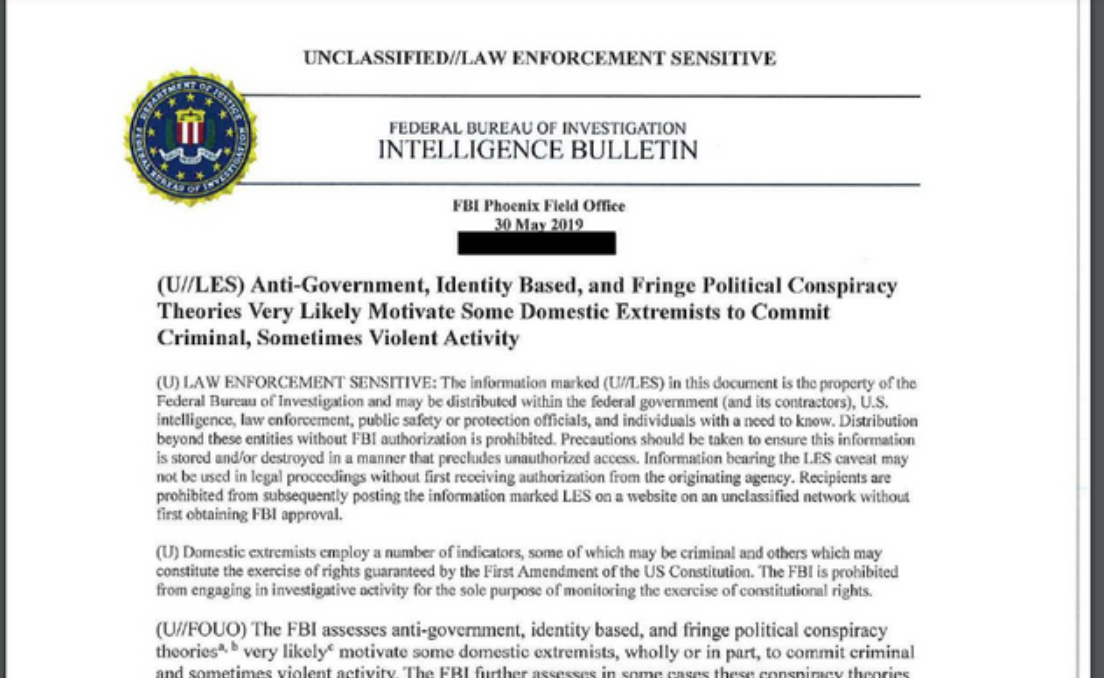
Notice WHO they attempt to classify as a terrorist?
Are terrorists to them Anyone who questions, tests or defies their inconsistencies?
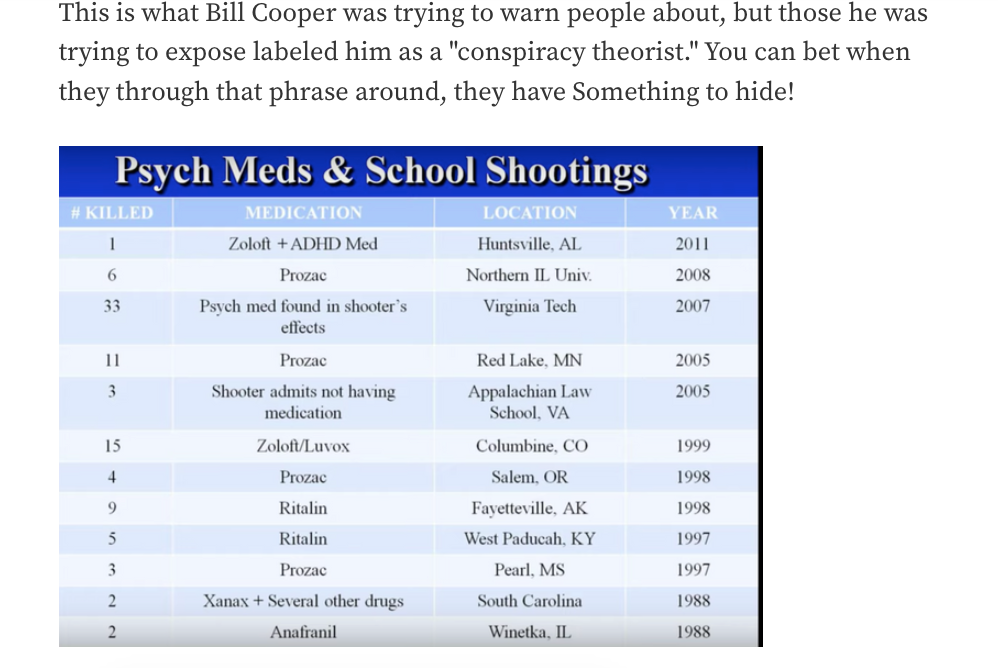
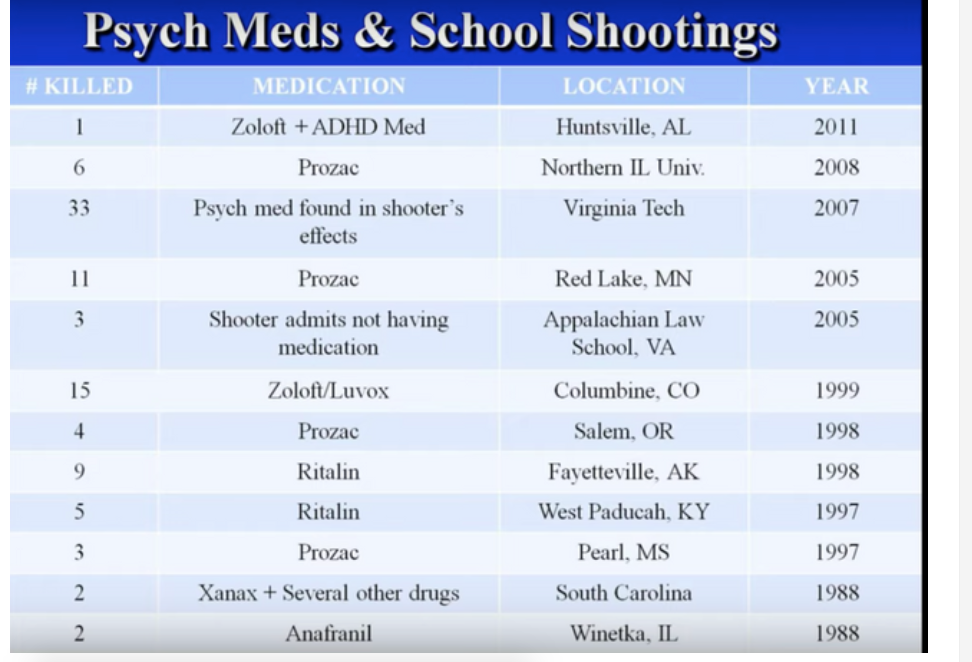
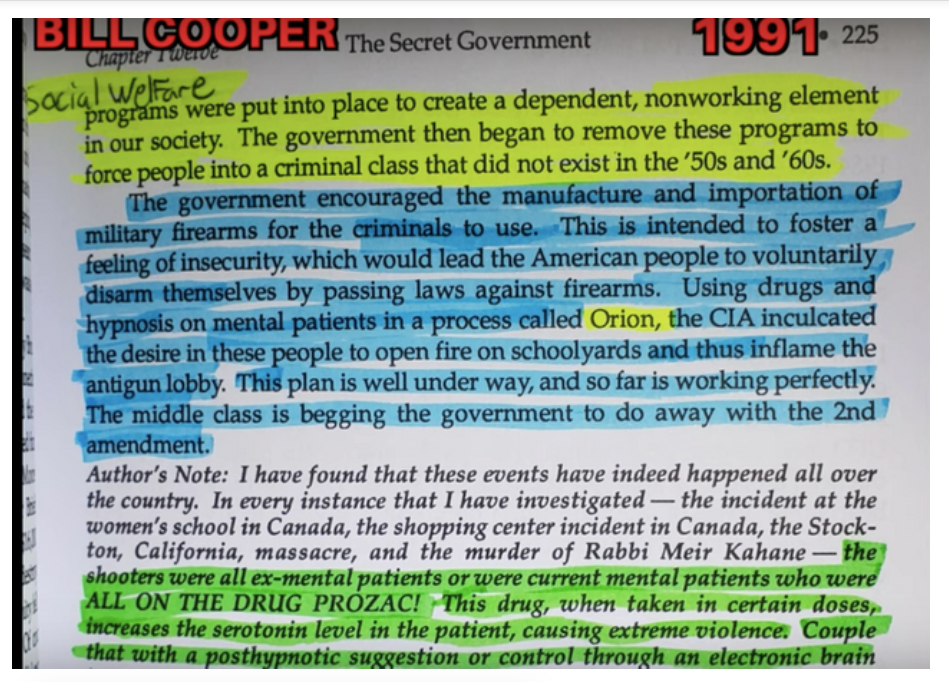
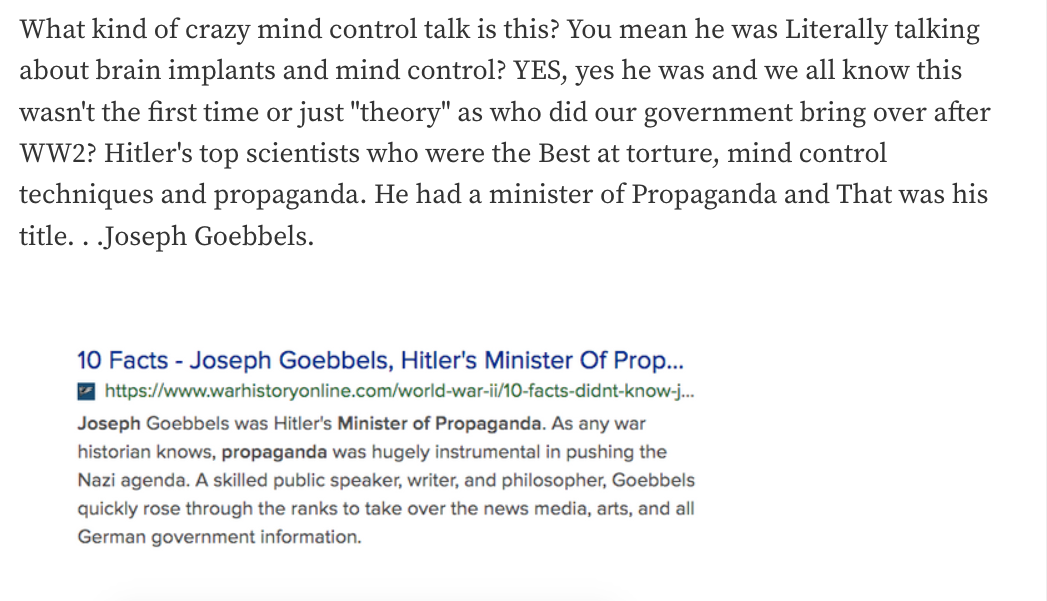
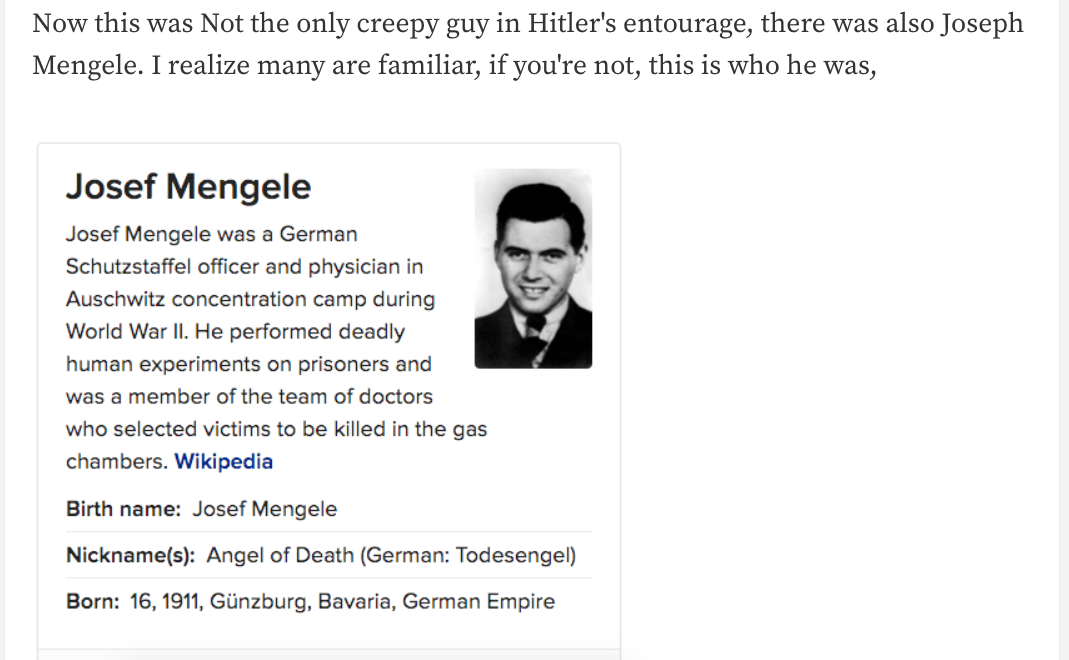
My point is. . .is it possible to psychologically control people in order for those in a position of power to get the outcome or assassin/shooter they want? You decide!
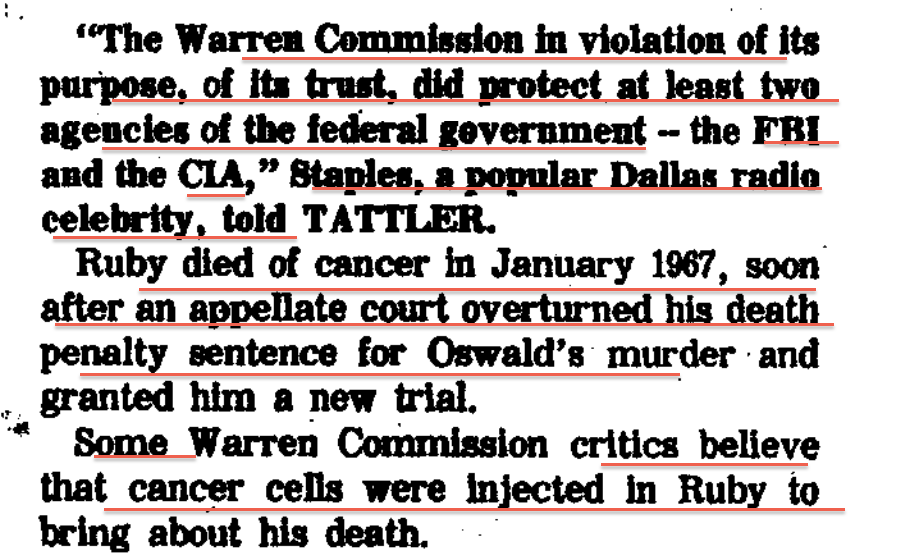
Too off the wall and crazy for ya?
Before you draw your conclusion, just consider. . .this story from a PBS news hour
How Radio Frequency Waves ended a CIA officer’s career? Marc Polymeropoulos
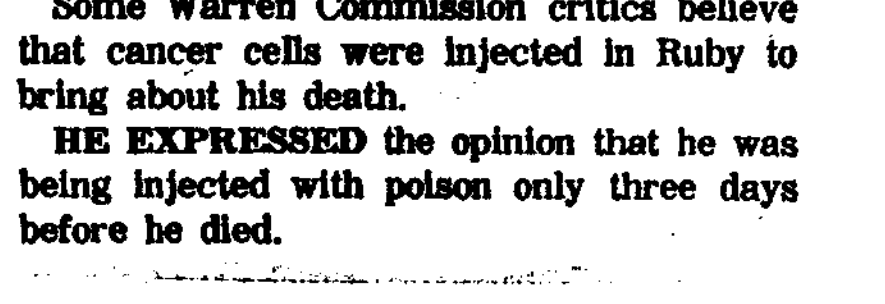
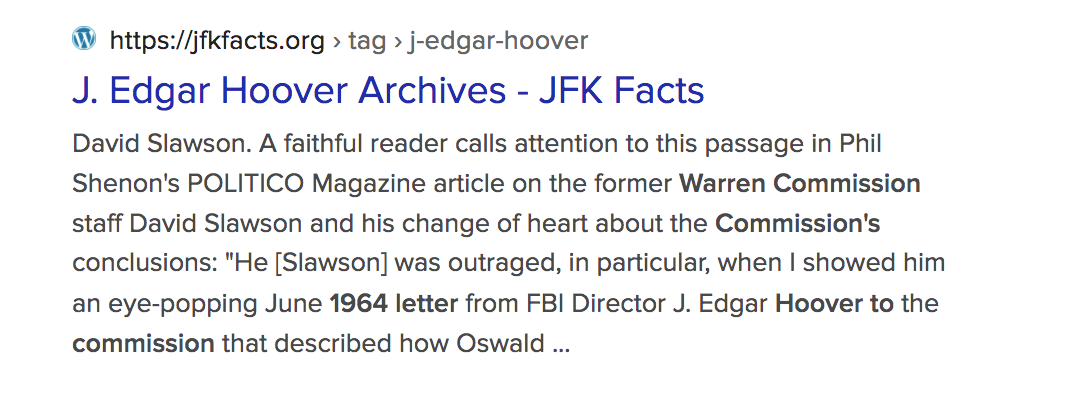
https://jfkfacts.org/tag/j-edgar-hoover/
Notice from a question asked. . .
- Assigned by President-Johnson to conduct a "full and
thorough" investigation of the assassination, the FBI produced
a Summary Report, complete with embossed cover and plastic
binder, barely two weeks after the murder and before the Warren
Commission could even organize its staff or appoint its Chief
Counsel. That report, and a similarly glossy FBI Supplemen- .
tary Report dated January 13, 1964, contained details of
medical findings and other basic evidence that were later found
to be in irreconcilable conflict with the Commission's own findings on the same evidence. Nevertheless, these premature FBI ltV reports committed the Warren Commission to its ultimate conclusions before a single hearing had been held. The FBI's errors on
the evidence - if that is what they were - were so embarrassing
l" to the Commission that it was necessary to suppress all references
to these FBI reports in the Commission's own Report and in the
26 volumes of Hearings and Exhibits, The very existence of
these two seriously defective FBI reports was hot disclosed until
1966, and their contents were little noted through the indolence
Orr • of the news media and the complacence (by then) of the public.
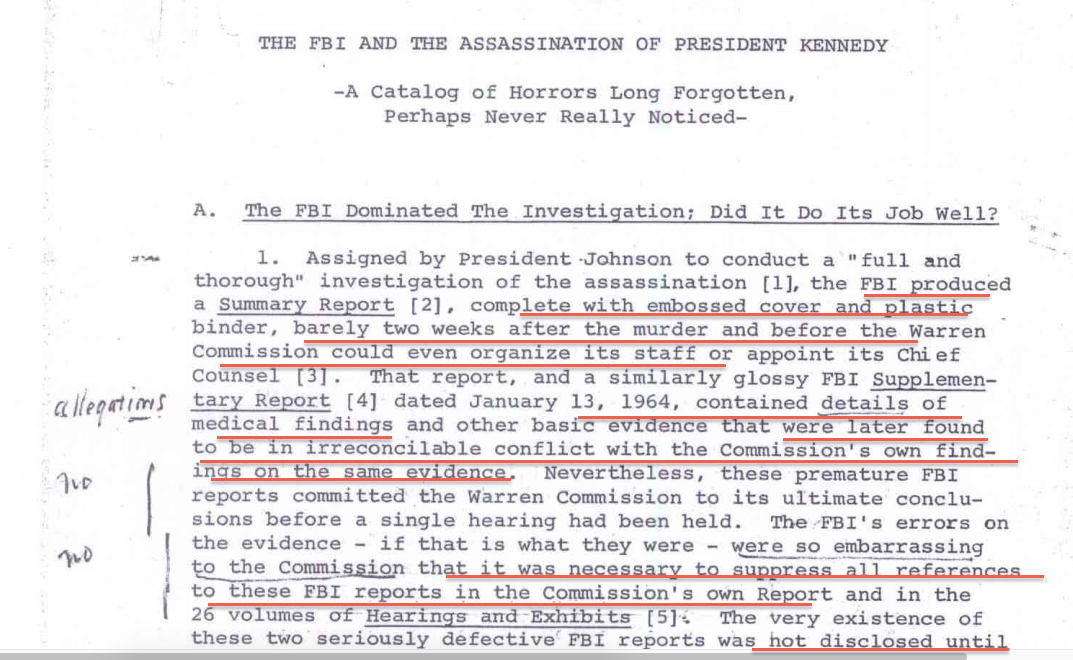
How many times has the following scenario occurred with other "suspects" they have questions? You know how often.
While Oswald was in the custody of the Dallas Police, the
FBI participated in the violation of his constitutional rights to
such an extent that, had Oswald lived to be tried, a conviction
might not have been possible. The Dallas Police seized some items
of evidence without a search warrant , and the FBI knew this
and made use of such evidence. They assisted in round-the-clock
interrogations of Oswald , knowing full well that he had repeatedly requested counsel but had not been able to obtain it.
- The FBI withheld much pertinent information from the
Warren Commission, or procrastinated for long periods in investigating and reporting it. They refused (and still refuse) to supply
essential details of spectrographic analyses of the bullets and
bullet fragments, which data would have shown whether all the projectiles came from the same ammunition supply, but instead reported
only that the compositions of these items were "similar.
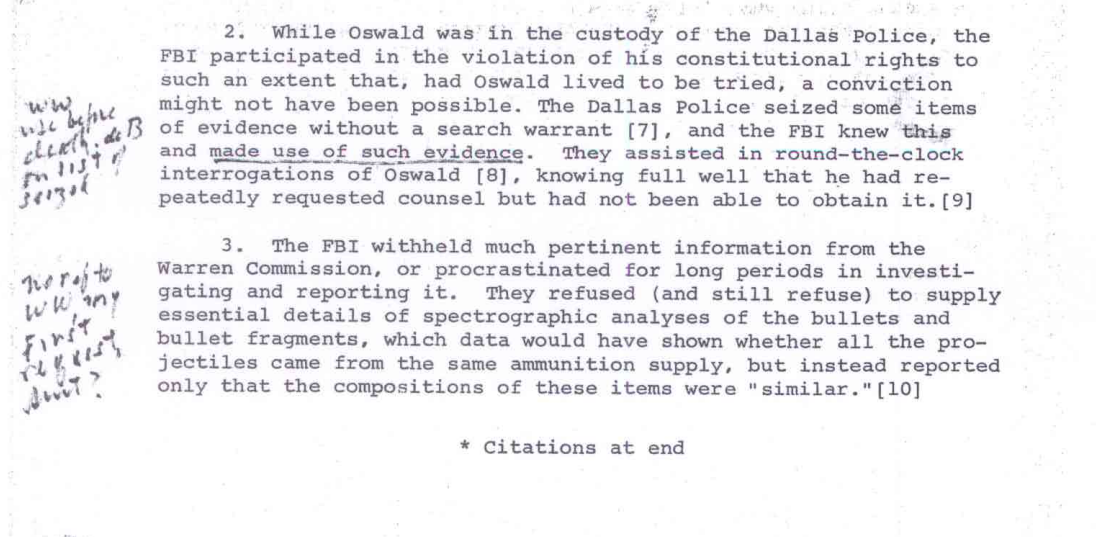

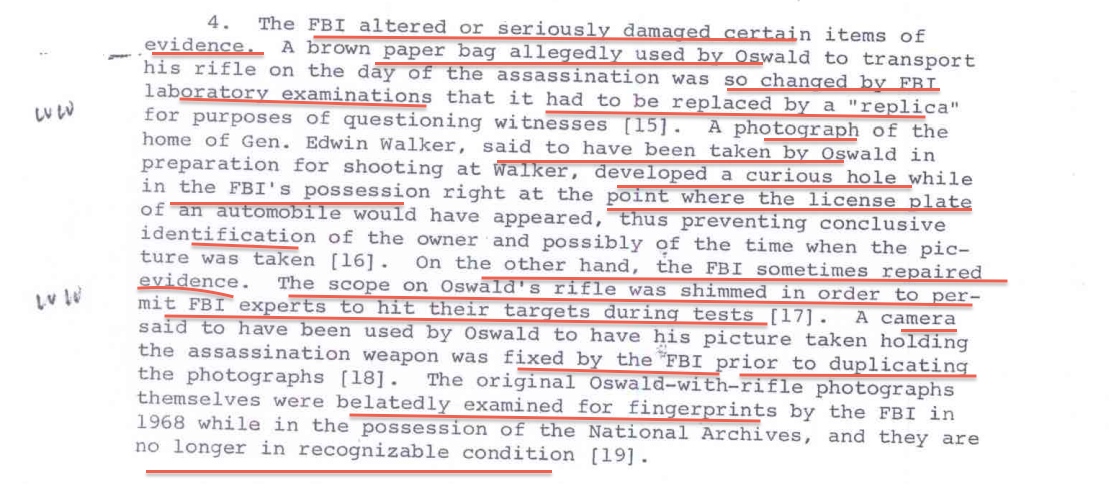
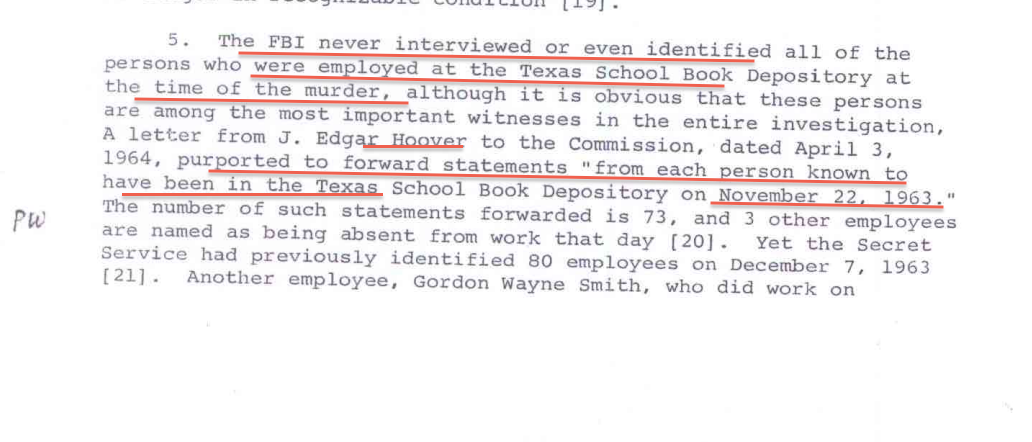
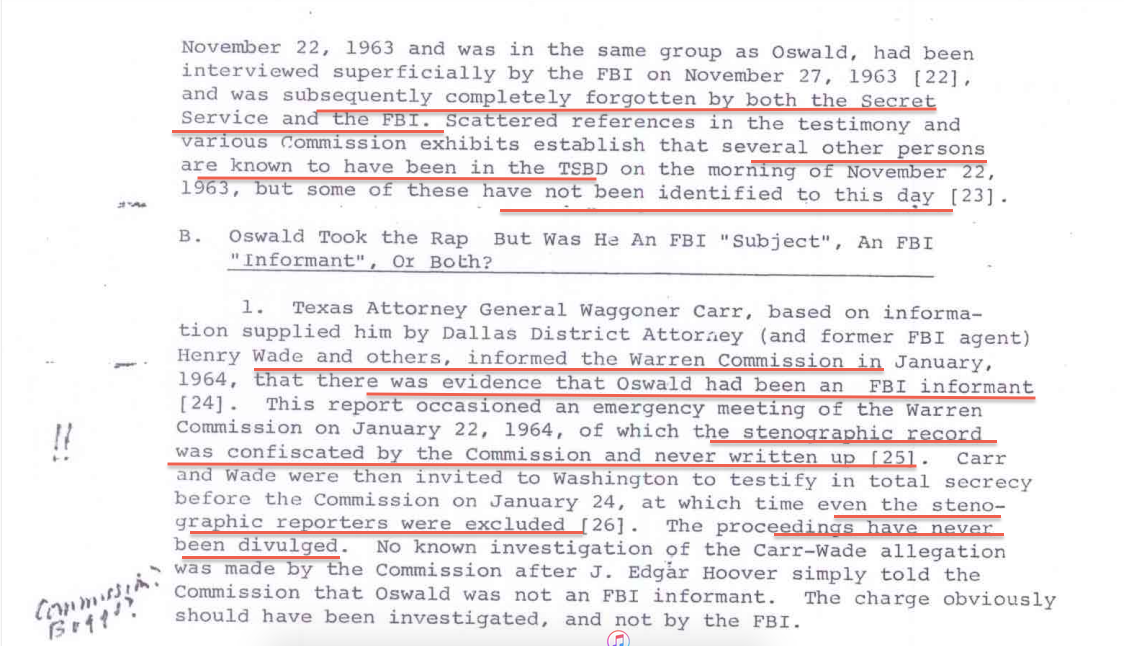
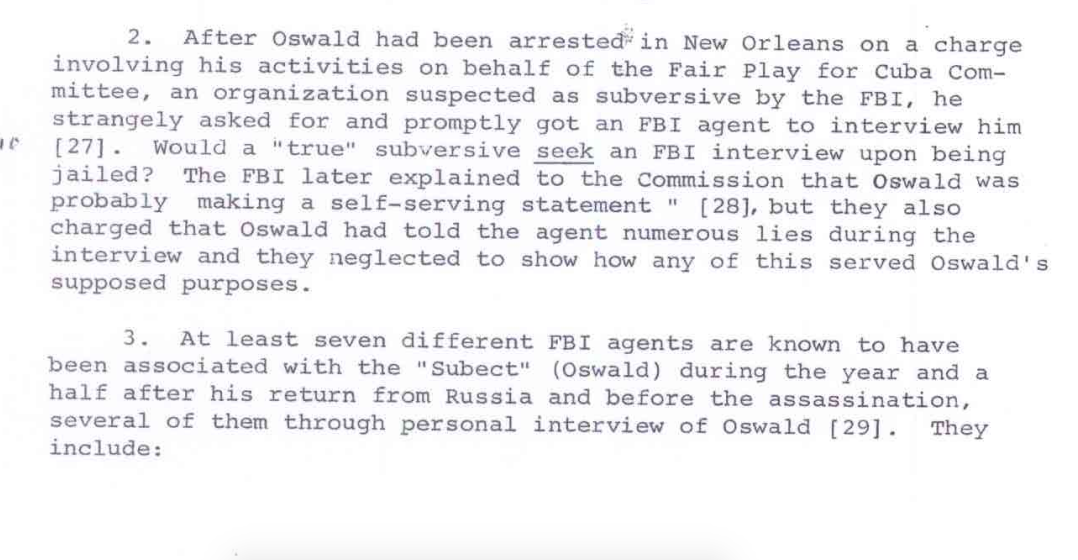
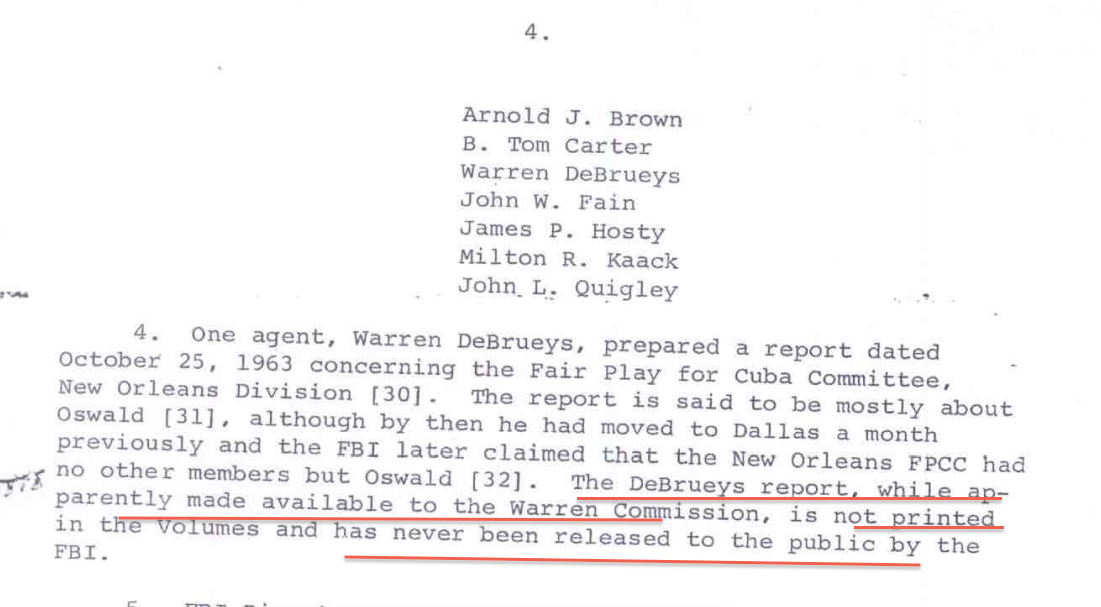
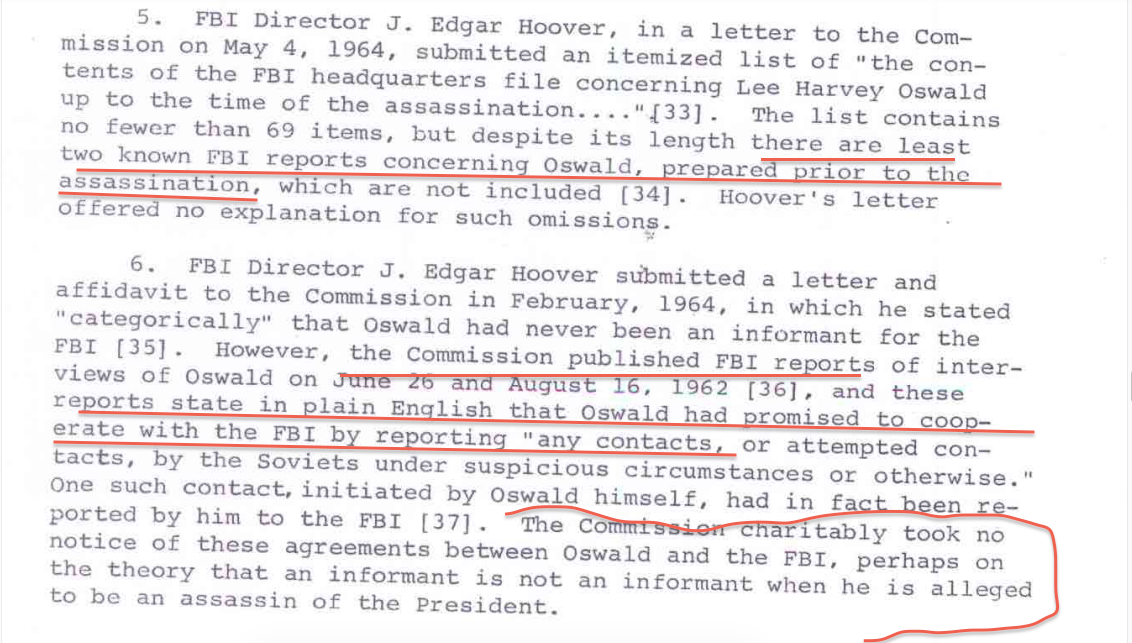
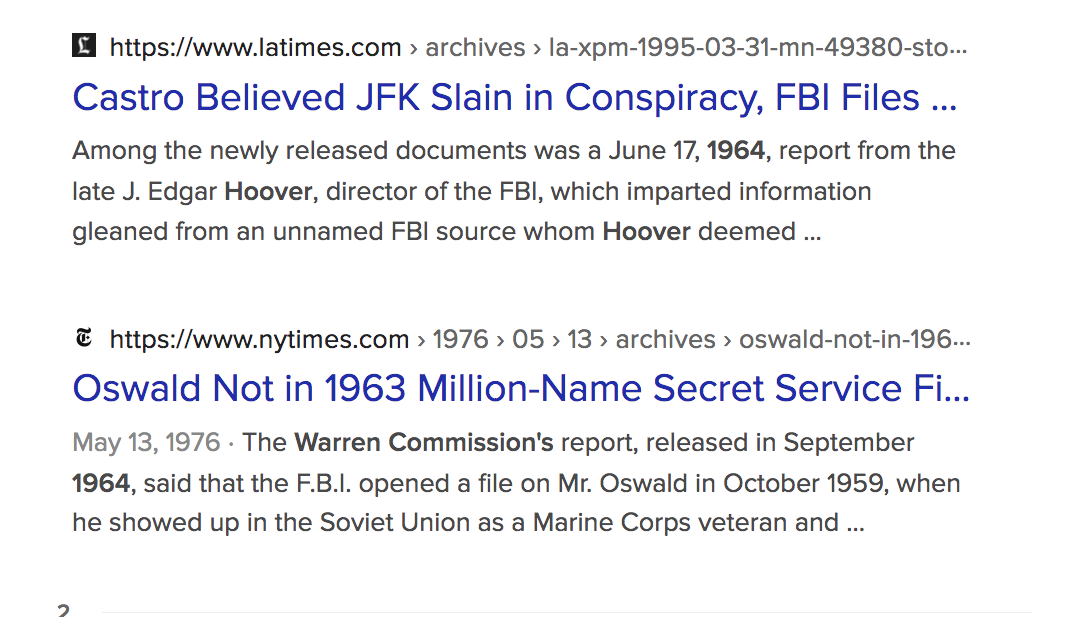
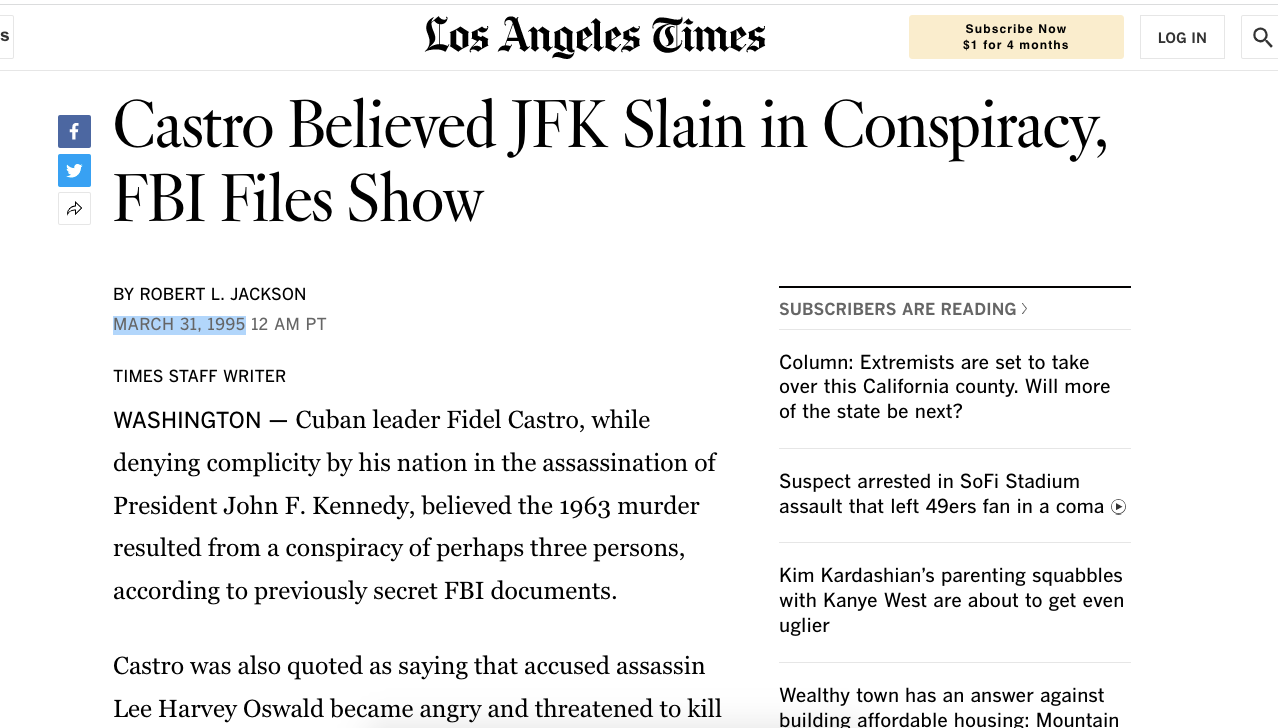
https://www.latimes.com/archives/la-xpm-1995-03-31-mn-49380-story.html
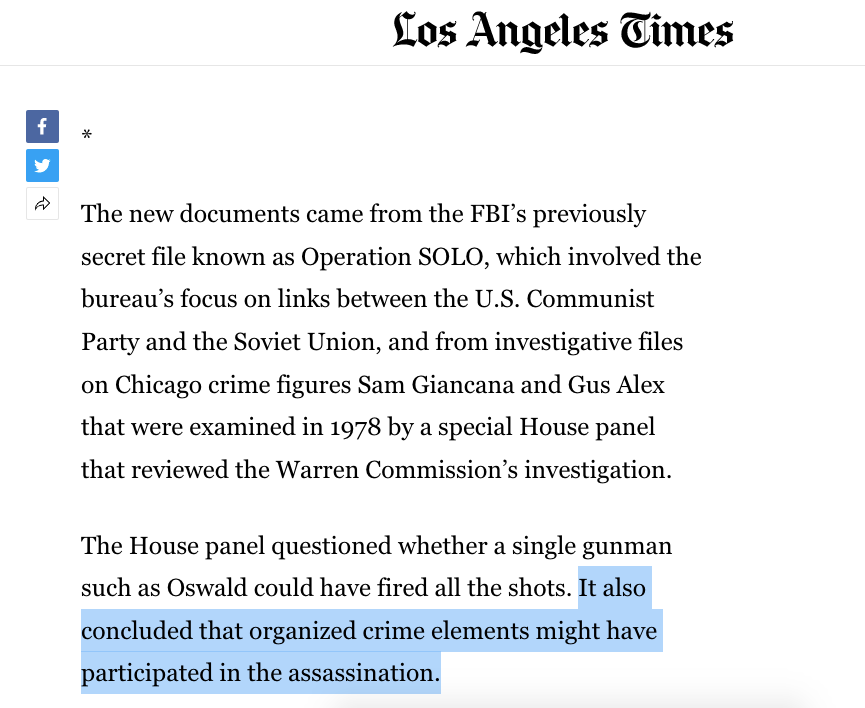
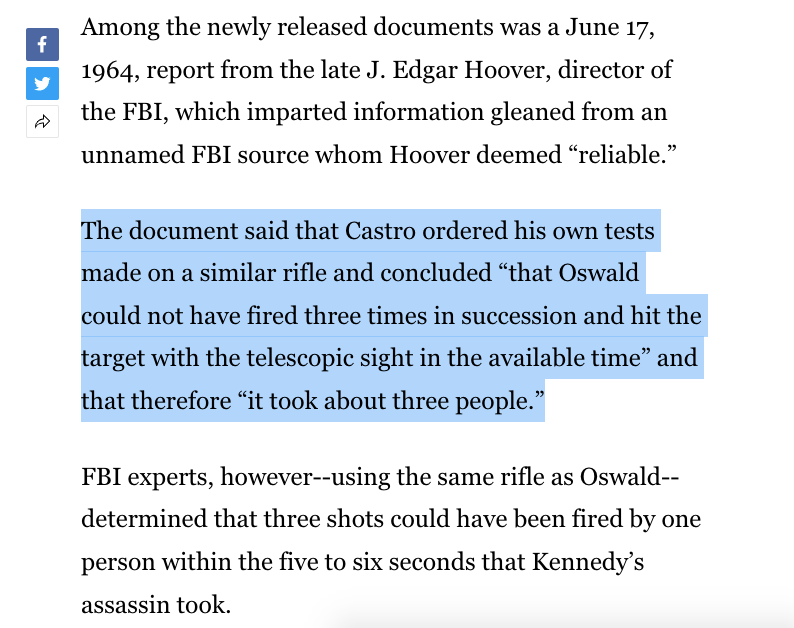
Really?
But do you remember this?
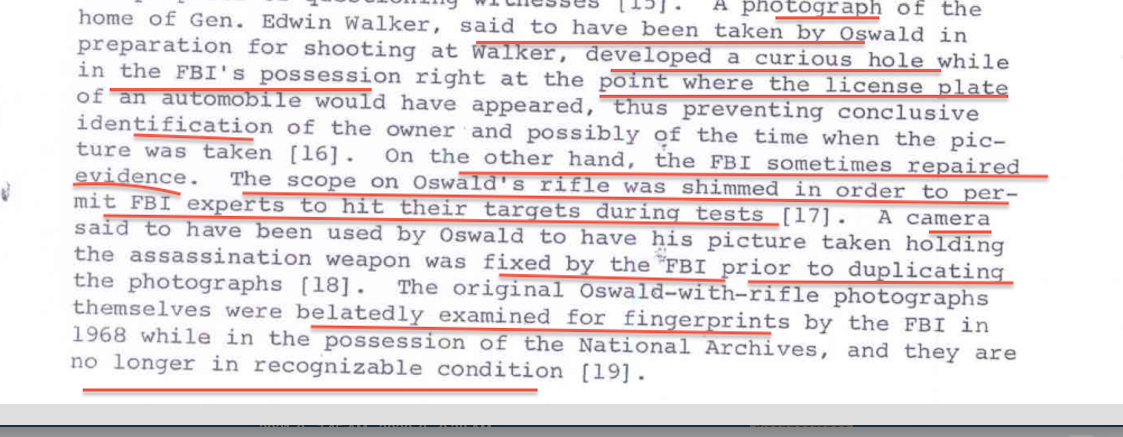
https://www.latimes.com/archives/la-xpm-1995-03-31-mn-49380-story.html
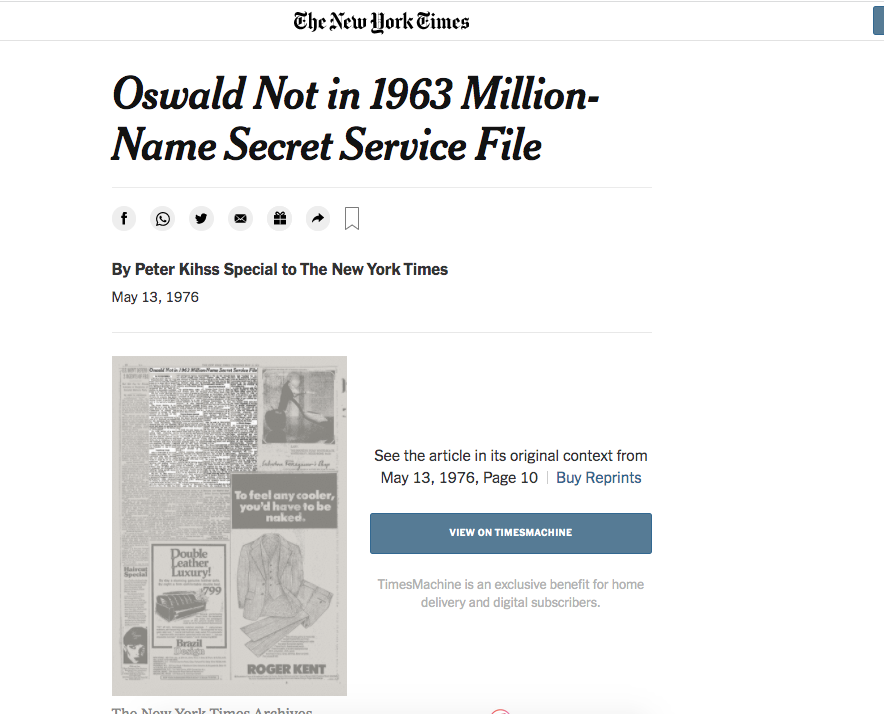
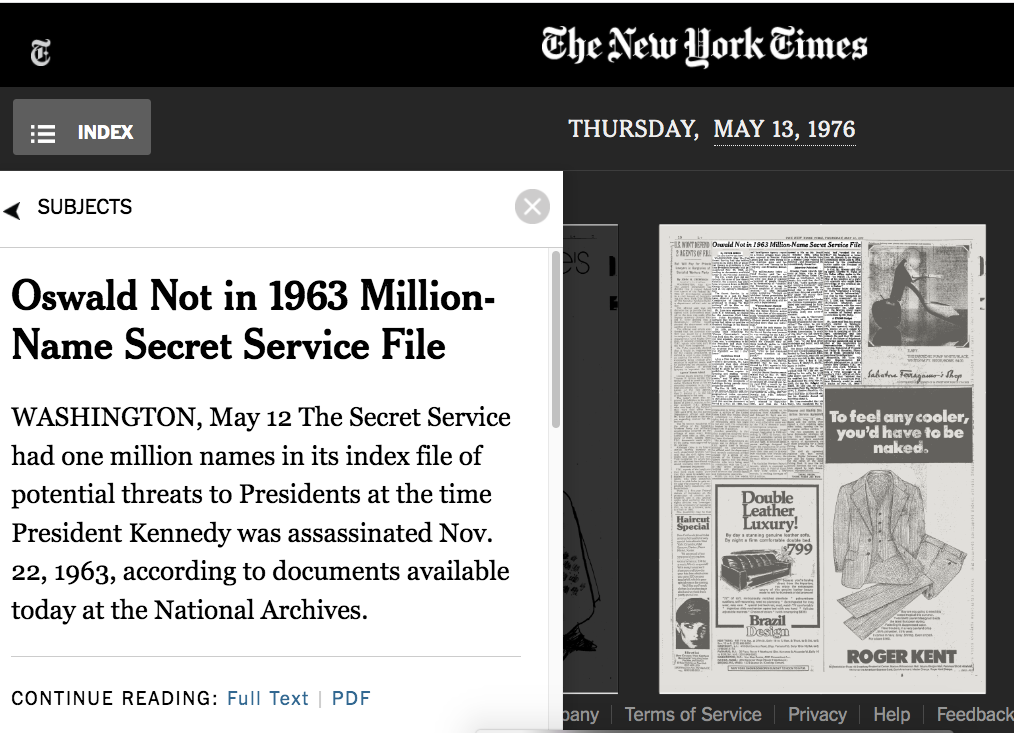
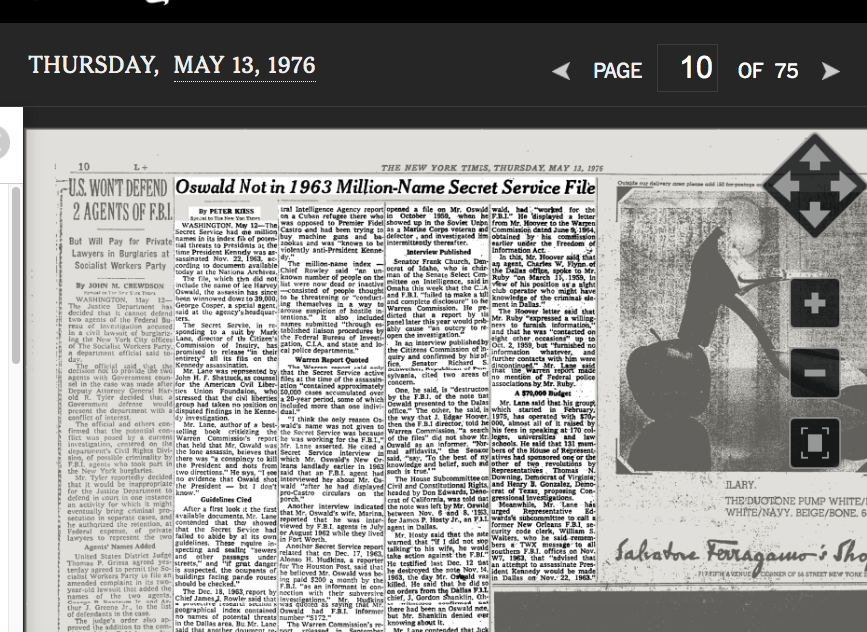
The ads
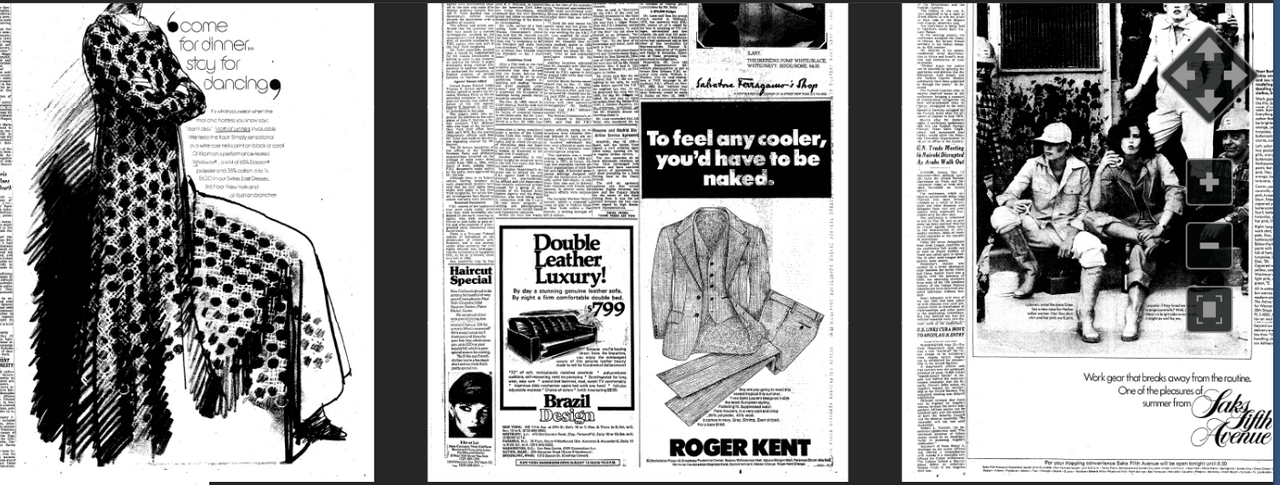
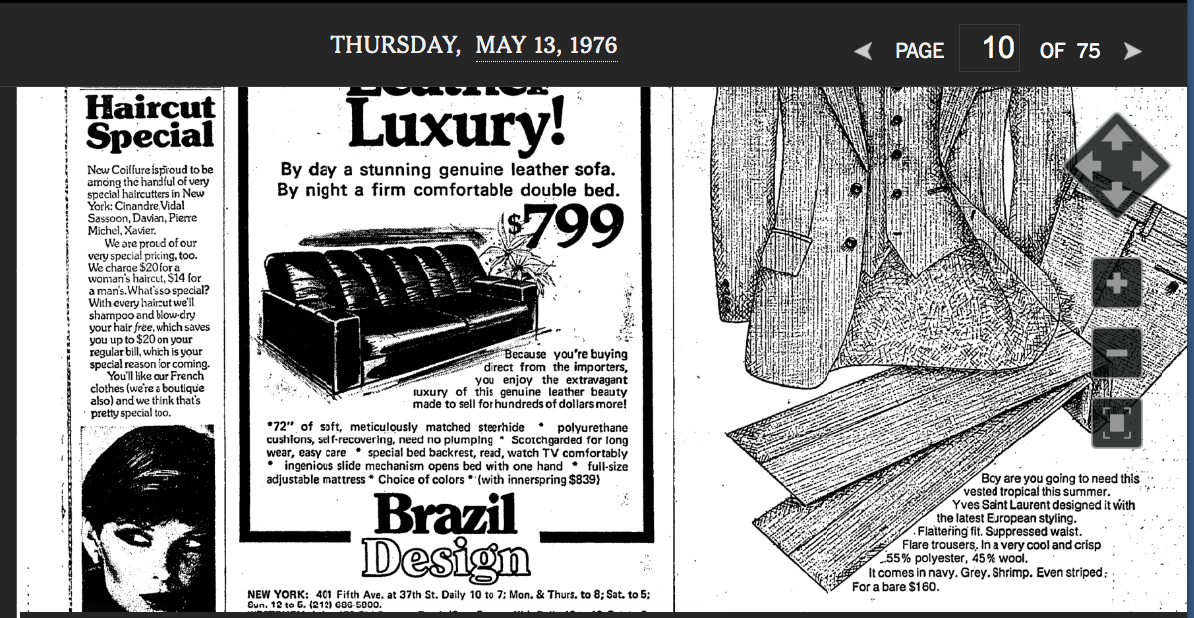
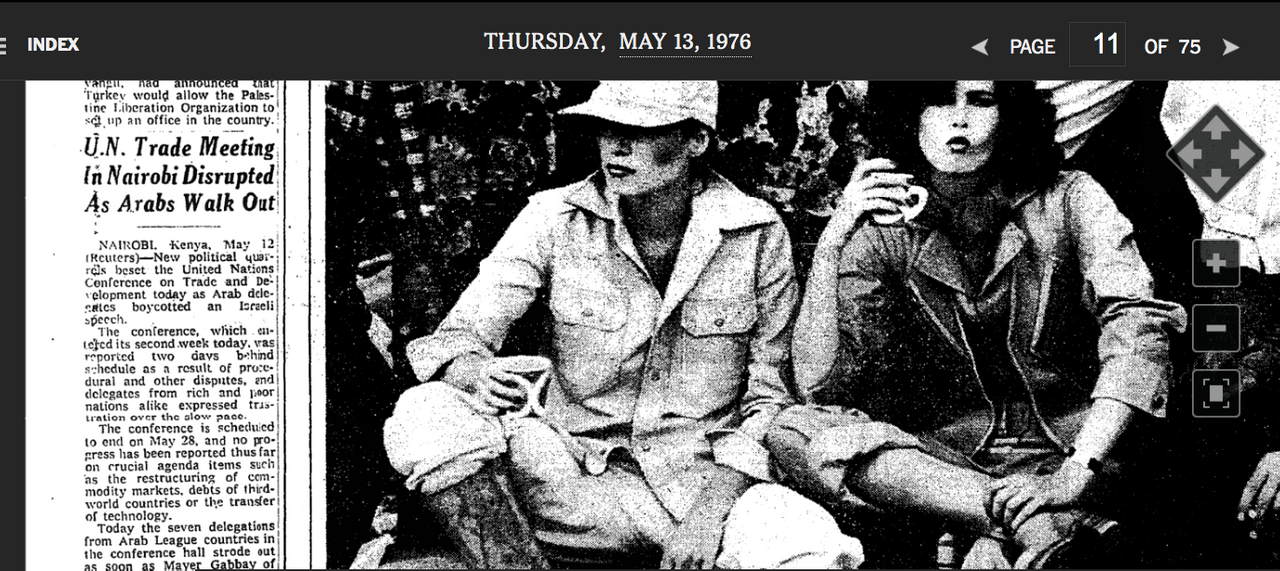
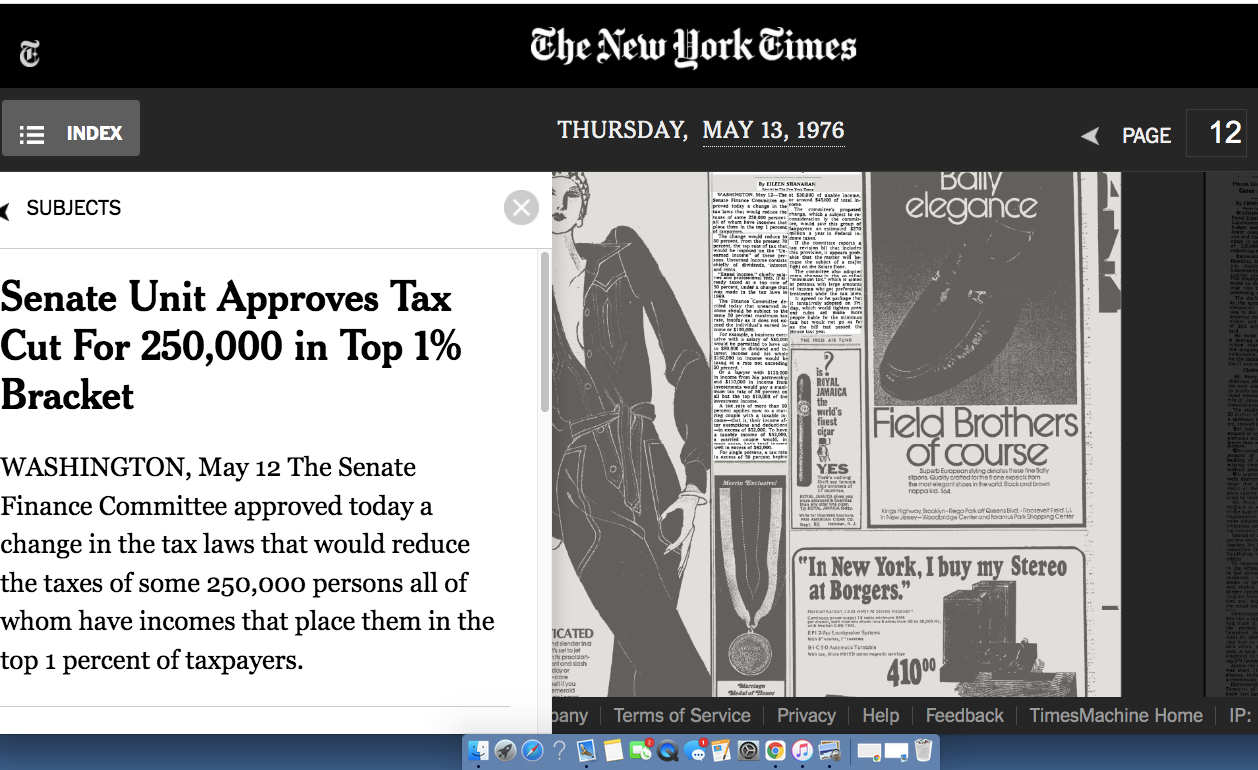

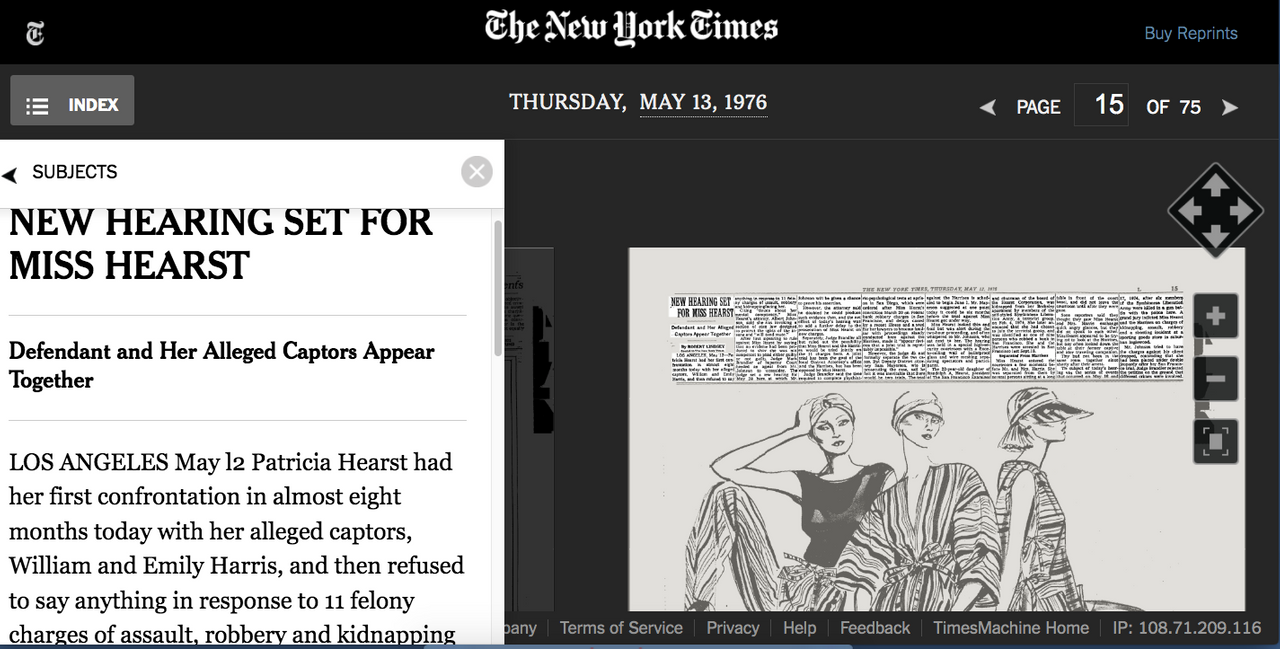
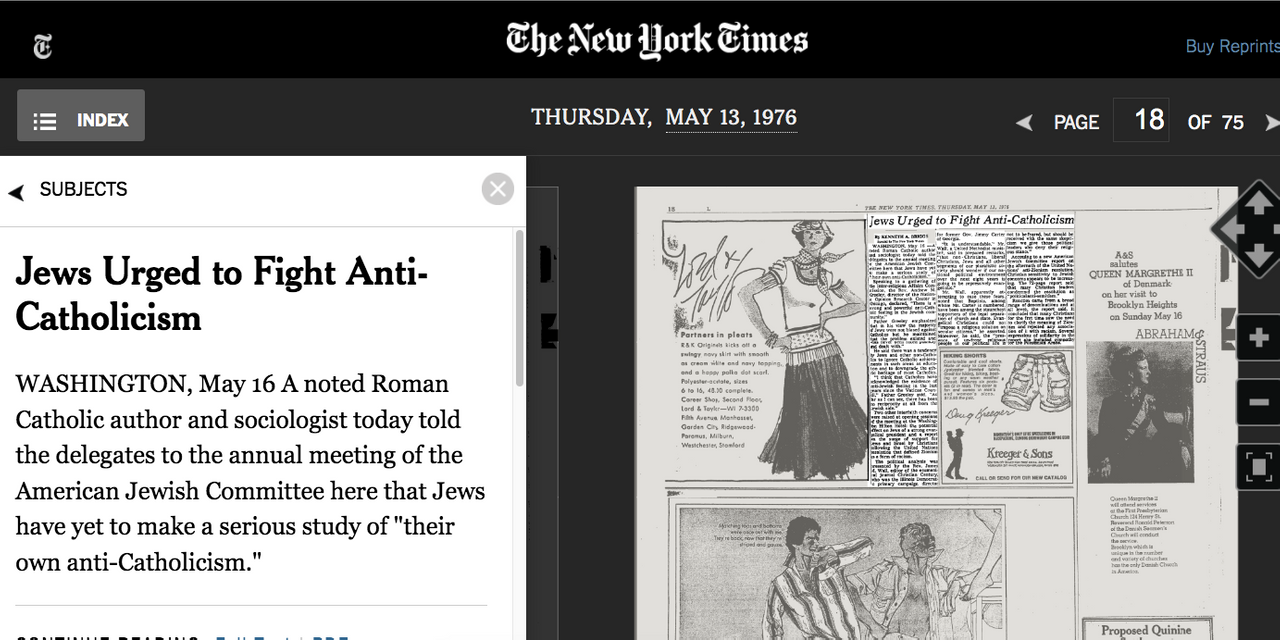
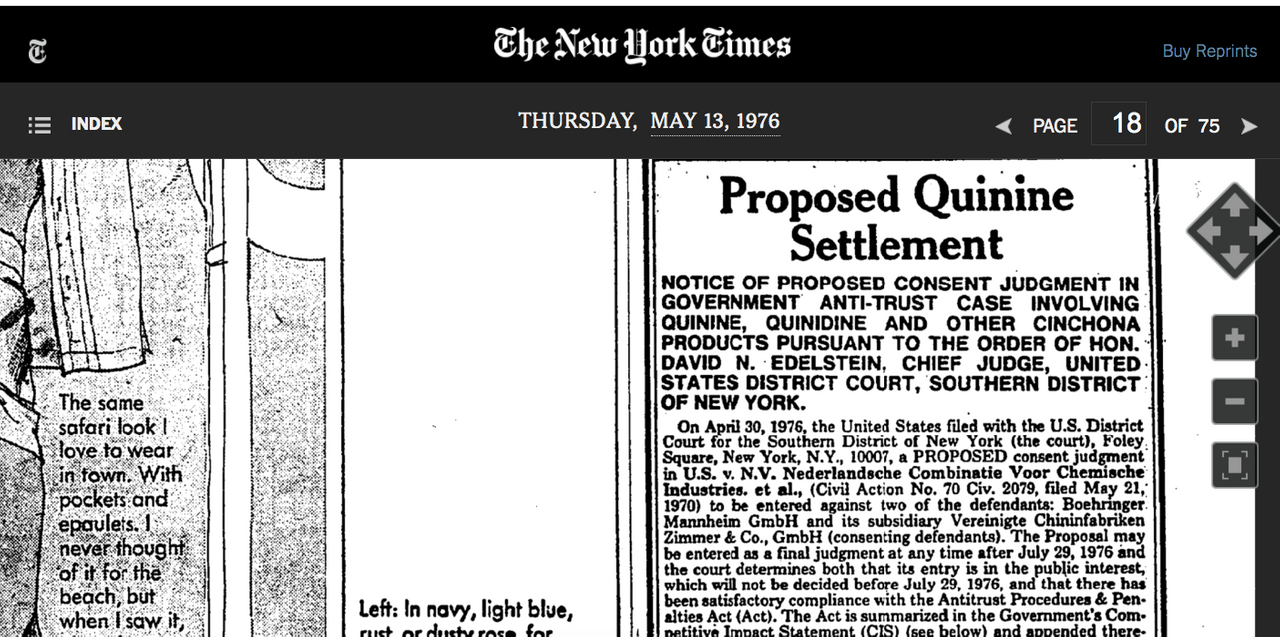
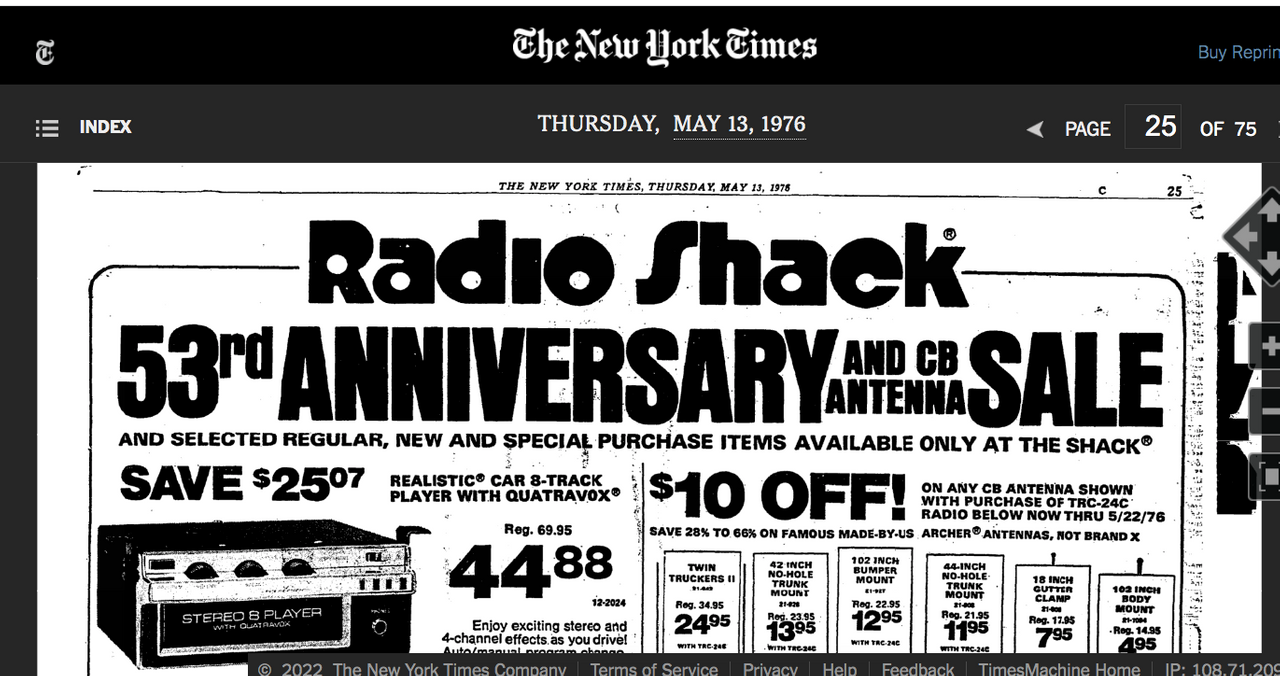

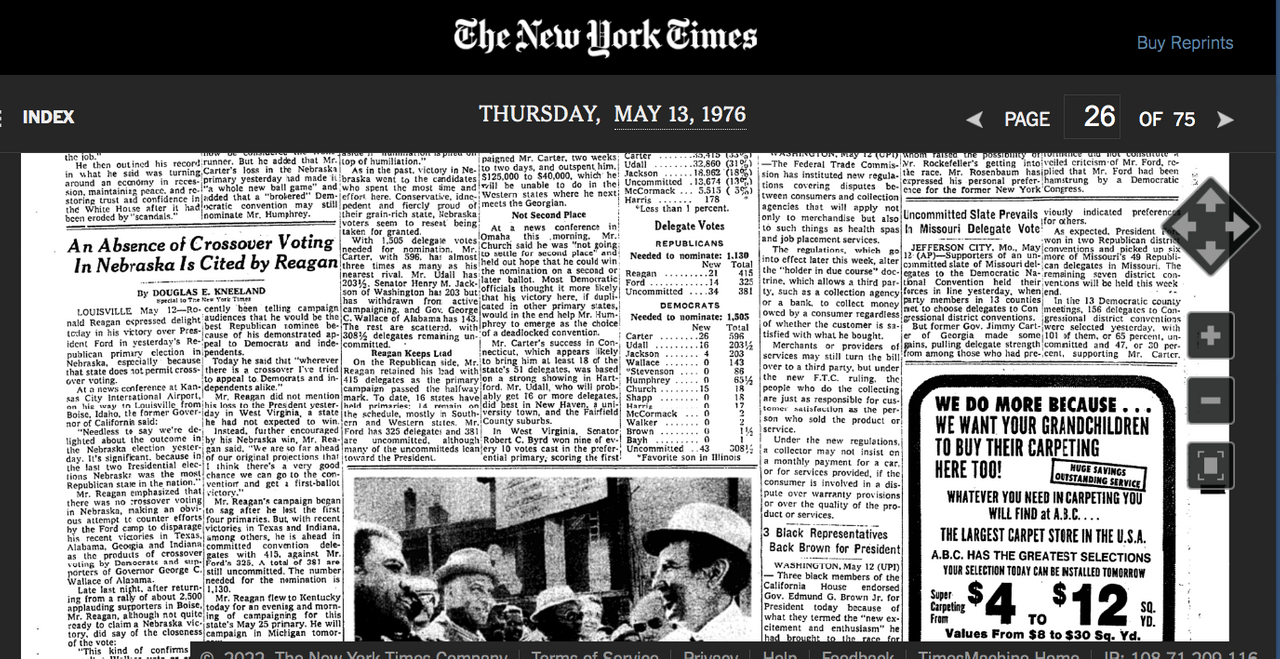
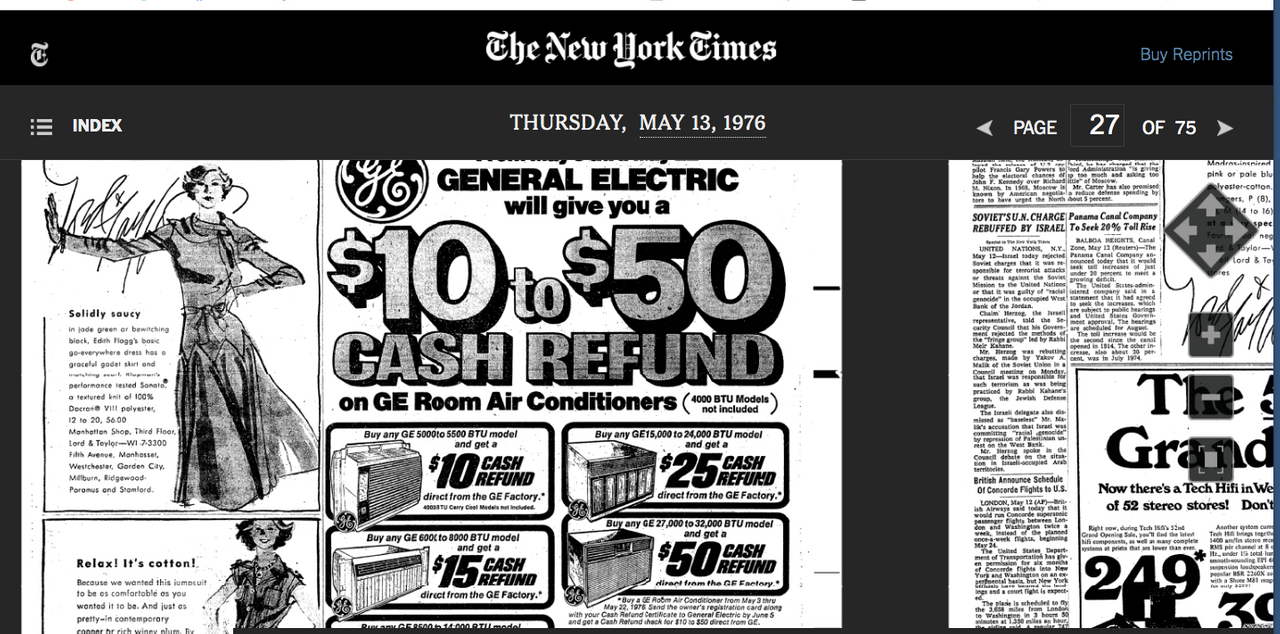
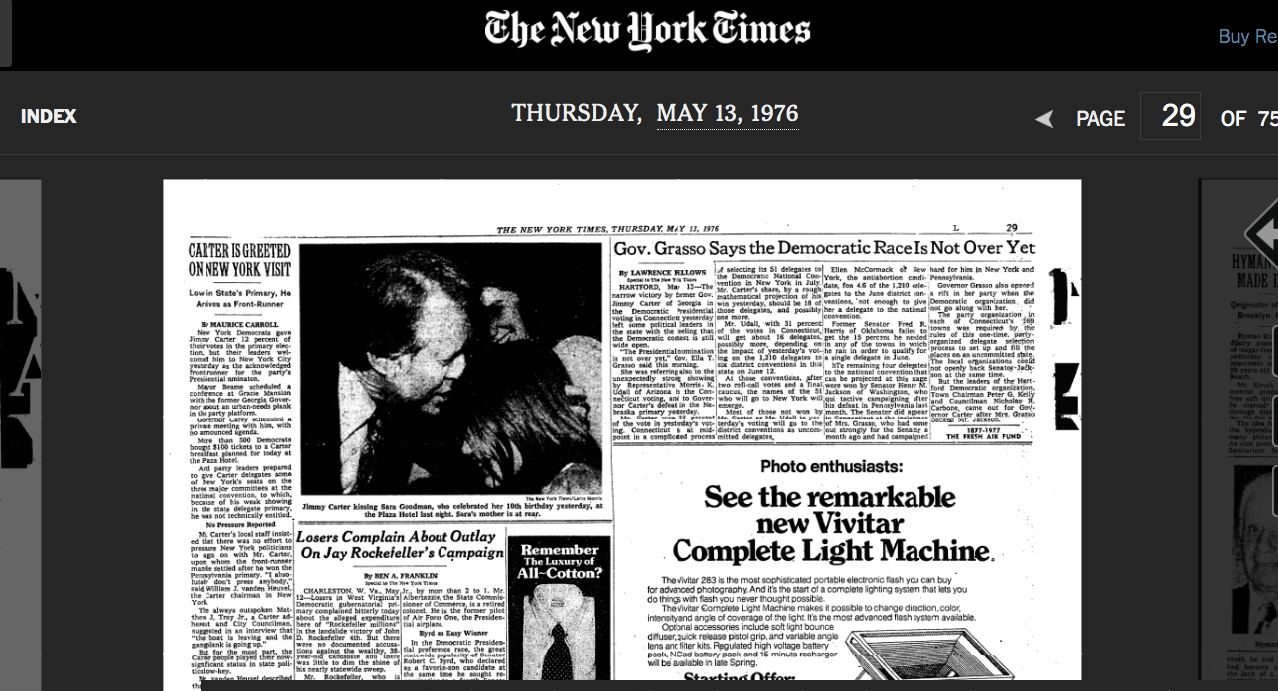
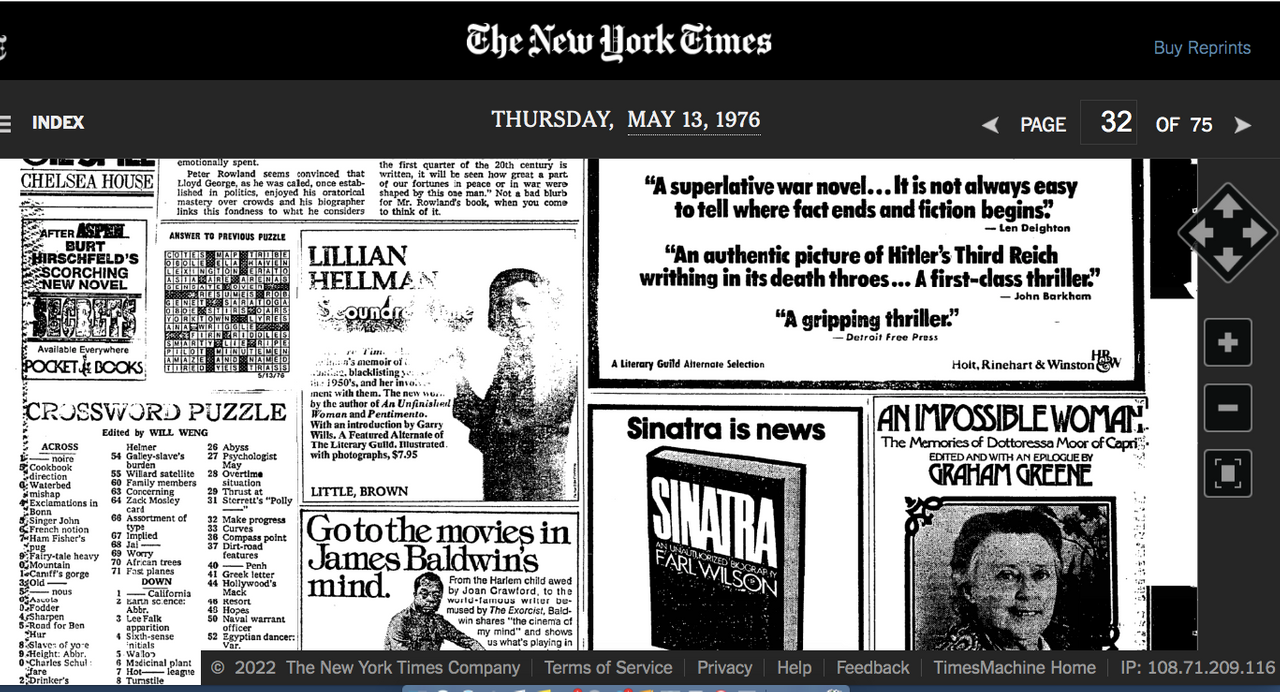
Sinatra interesting considering. . .
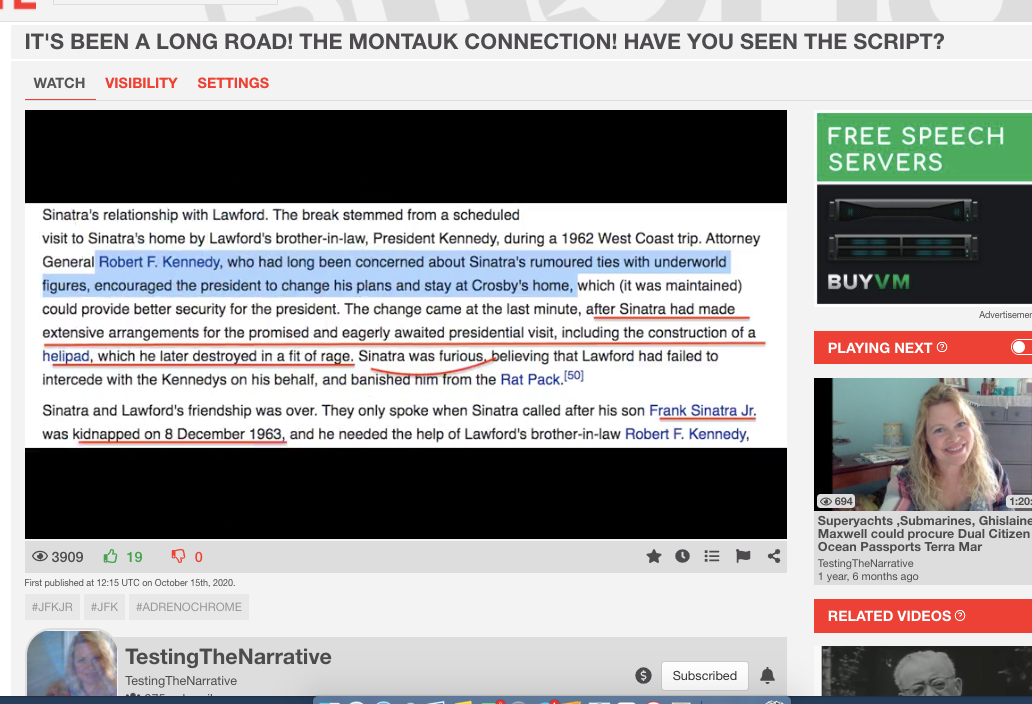
It's been a long road! The Montauk Connection! Have you seen the Script?
To see more go here,
https://www.nytimes.com/1976/05/13/archives/oswald-not-in-1963-millionname-secret-service-file.html
Back to Kilgallen and what she knew that possibly Hoover didn't appreciate her knowing.
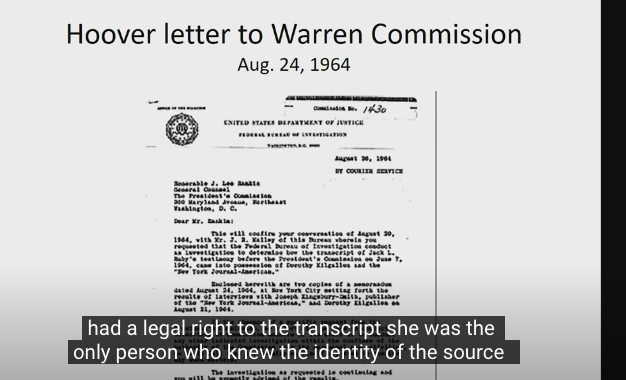
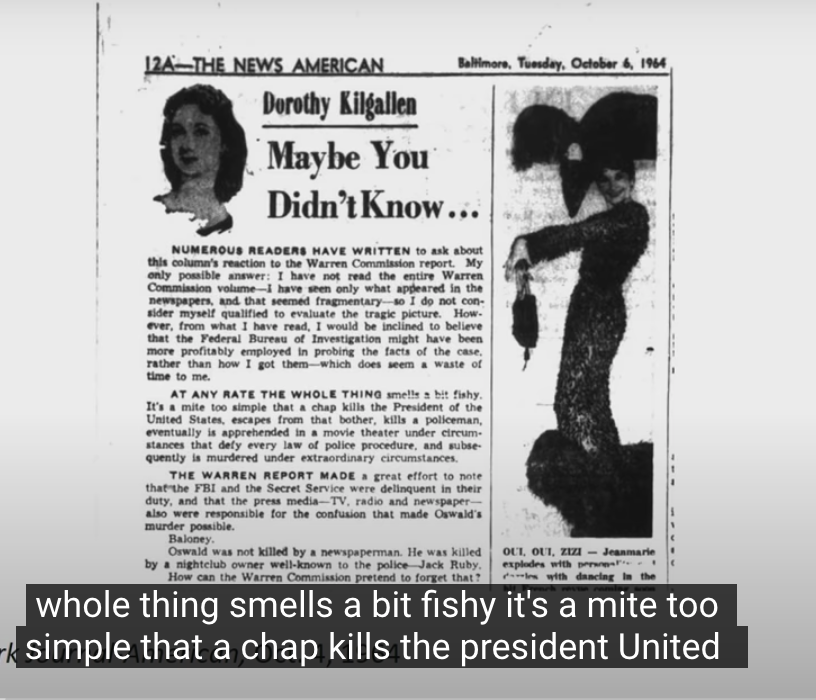
Dorothy was the only one who knew the name of the source and she had said she would rather die than reveal the identity of the source.
Dorothy summed up the Warren Commission in one word. . .laughable!
Do you agree with her?
She talked about Ruby's state of mind and what he had gone through.
Mark Shaw set out to find some eye witnesses, primary sources who knew Dorothy.
Four taped interviews were found.
- Joe Tonahill
- Her two hairdressers, two best friends Marc Sinclair and Charles Simpson
- The woman who was on the last What's My Line show with Dorothy
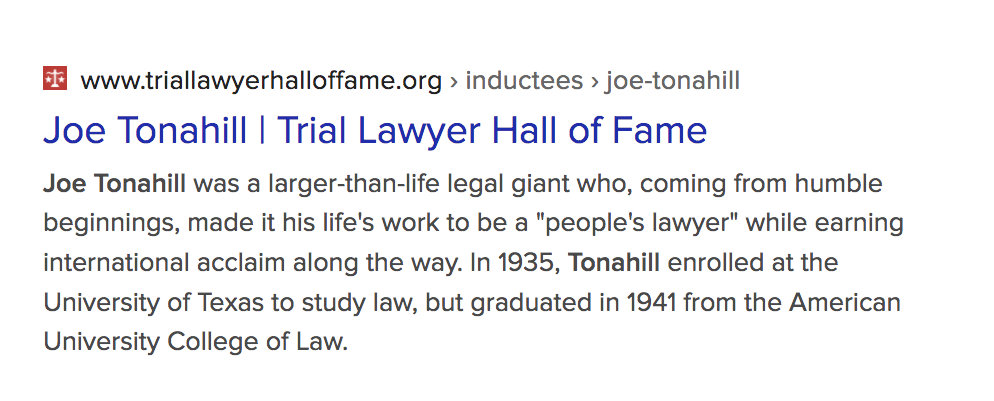
Were all of the enemies circling since she was going against the acceptable narrative?
- Marcello
- Hoover
Her friends knew she was investigating the JFK Assassination.
She was working on a book with Random House she was going to have published in 1965 in which she would put all of her facts, evidence and conclusions.
Sinclair went with Dorothy to New Orleans to help tie things up and she immediately sent him right back to New York and said, "don't ever tell anyone you were here, go back there now and don't ask me any questions."
More difficult to do now days with the surveillance tracking/tracing and social media tabs?
There is video tape footage later after her death where he talks about what she was doing in her investigation.
Sinclair says she wouldn't stop on it and they knew what she was doing.
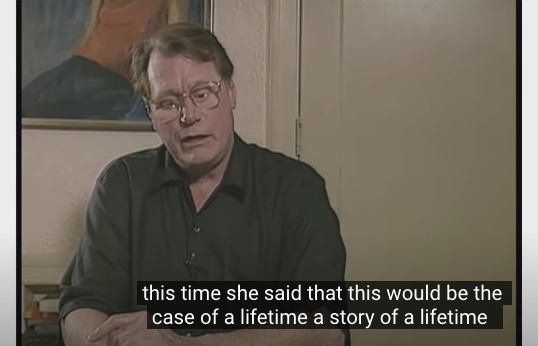

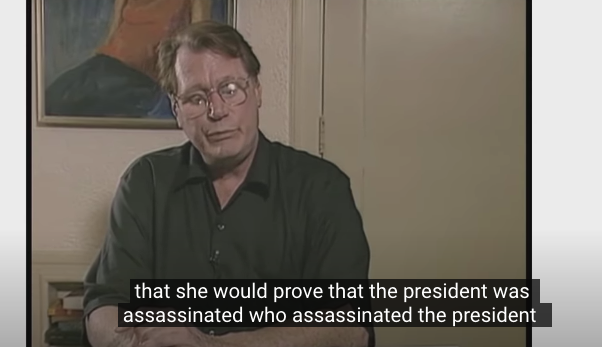
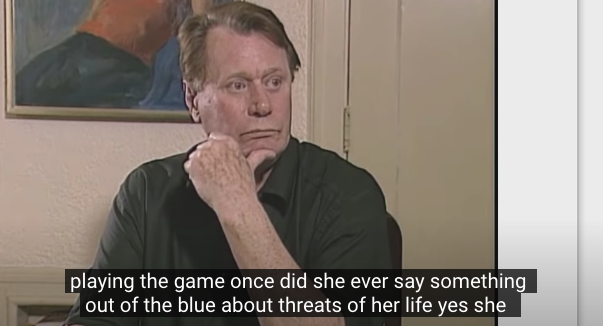
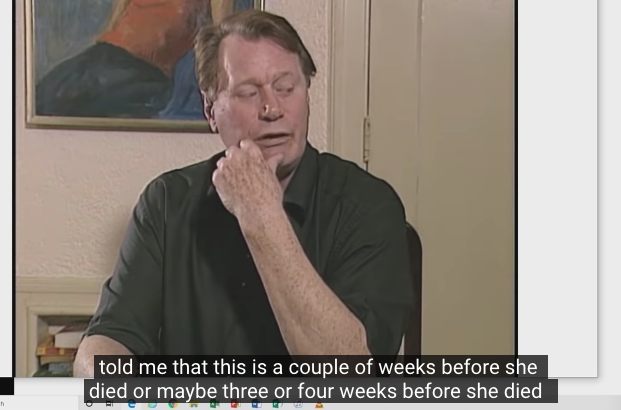
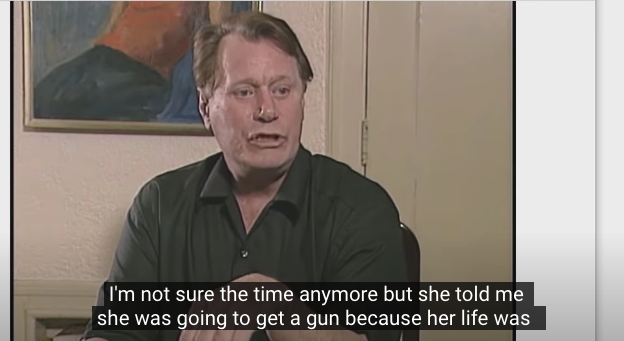
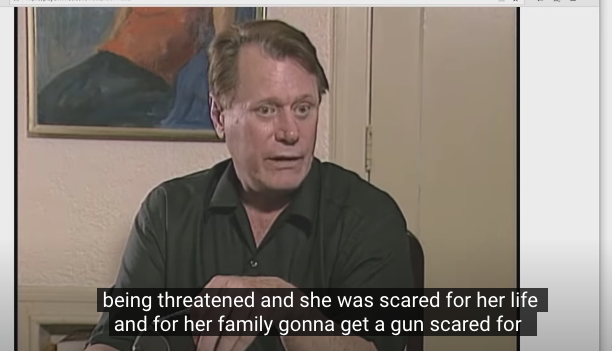
Her enemies just wanted to bundle up the case and have it go away, but Dorothy publicly let it be known she was going to break and report the case.
Who else would have known they might be exposed in her book from Random House?
Her other best friend Charles Simpson
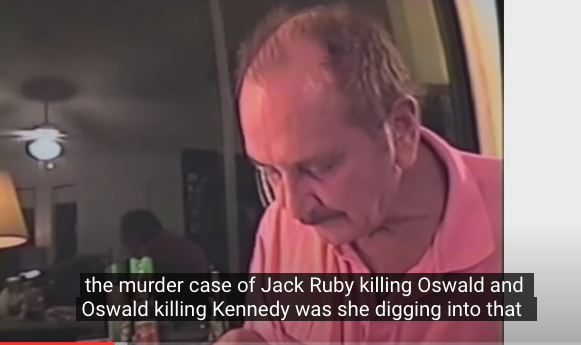
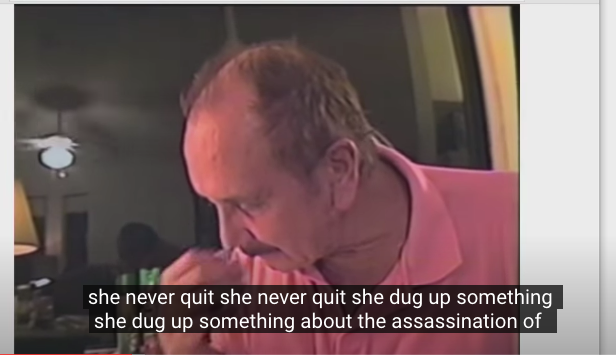
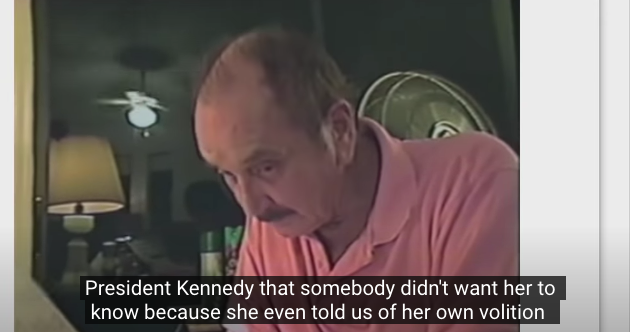
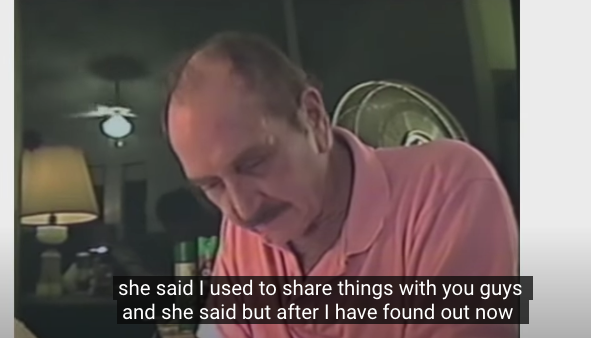
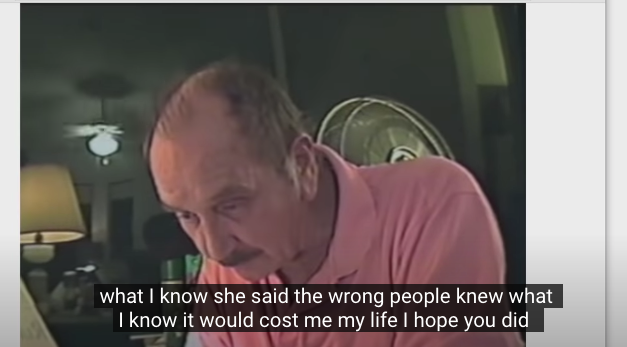
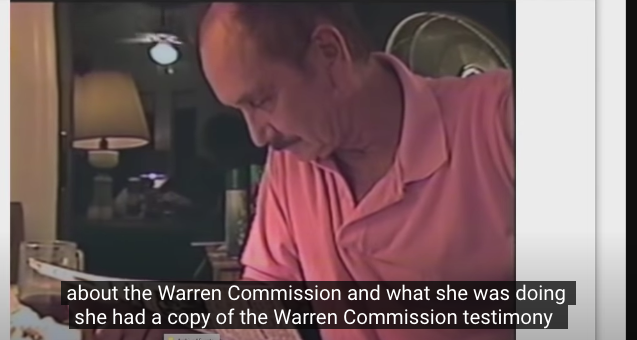
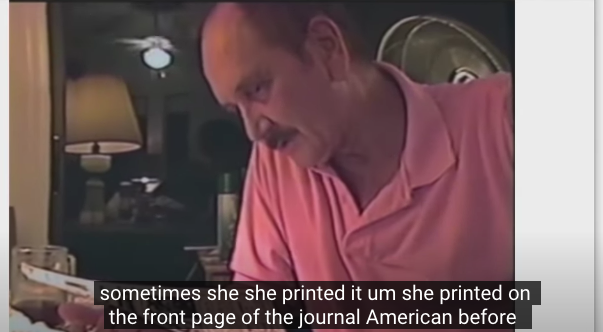
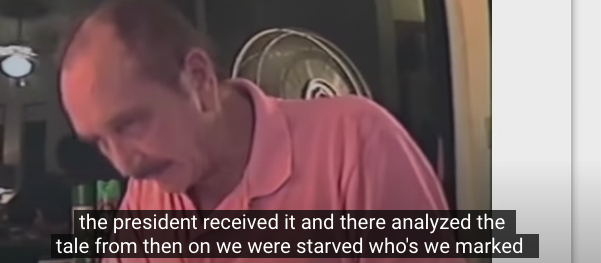
The text above should printed Stalked as those were his words.
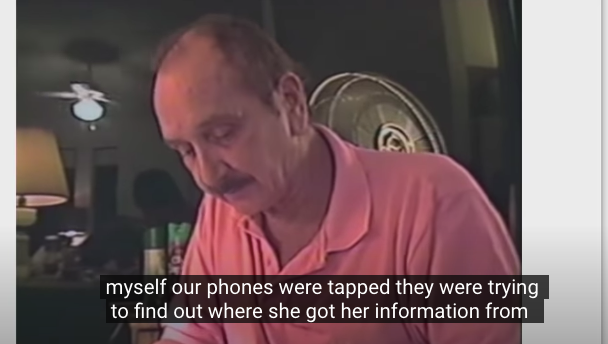
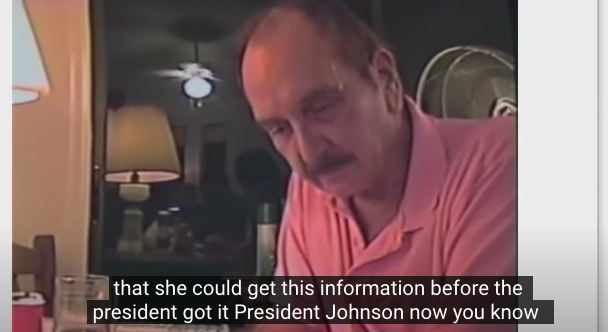
Did Dorothy feel she was invincible as the biggest star on Broadway and the most powerful female voice in America?
Was there any reason for Dorothy to commit suicide since she was at her prime, on top of the world, planning a trip to London as she would have her tell all book published by Random House?
She had a movie deal for the book.
A lunch plan for the Monday after she died.
The medical examiner claimed she died from barbiturates and alcohol.
Does this correspond with what was viewed/witnessed on her last show?
If you watch it, you will see she didn't show signs of grogginess or drug problem as she is quick and decisive.
Friends claim when they were with her, her mind was sharp and she was in great spirits.
After the show, she leaves and goes to a bar called P.J. Clarke's on November 7, 1965.
She had fun then met a mystery man.
Was Richard, her husband who didn't like the affair she was having with Johnny Ray the killer? Did he have motive to hire a hit man?
Dorothy had also written a scathing column about Frank Sinatra, which is interesting considering what happened with JFK not making an appearance Sinatra had set up at his home and they Bobby got a bad feeling so it didn't happen and Sinatra was irate!
Sinatra. . .ties to the underworld and mafia? You decide!
Sinatra struck back by calling Dorothy the "Chinless Wonder."
Dorothy also had an affair with Ron Pataky
There had never been an autopsy report published about Dorothy's death.
The New York Medical Examiner's office wouldn't give a report to Shaw as he is not a member of the family.
It was at the National Archives, however.
Elizabeth Taylor on What's My Line
Was Pataky a plant? You decide!
Why was he upset and stating Dorothy was sharing facts about the JFK assassination with the wrong people?
Shaw interviewed him three or four times and felt he was the main suspect in Dorothy's death.
Was Dorothy going to expose Pataky as leaking to her JFK Assassination information?
Odd poems on Pataky's website? You decide!
https://nypost.com/2016/12/04/dorothy-kilgallens-tell-all-on-a-mafia-don-might-have-got-her-killed/
Remember?

"There's a way to quench a gossip's stench that never fails!
One cannot write if zippered tight.
Somebody who's dead can tell no tales!"
Just a humorous poem or does it match Dorothy's career, fame and death? You decide.
And another one.
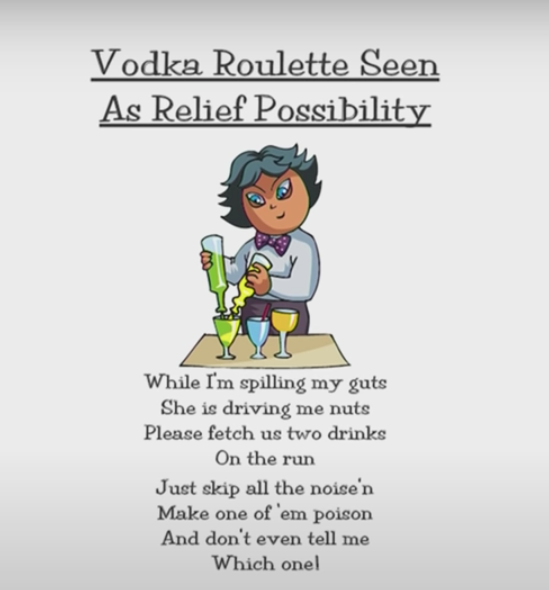
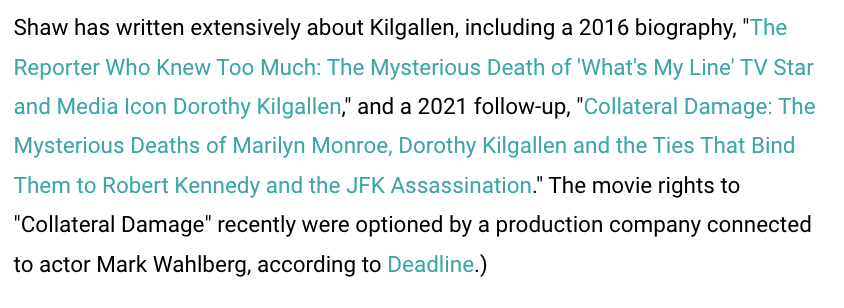
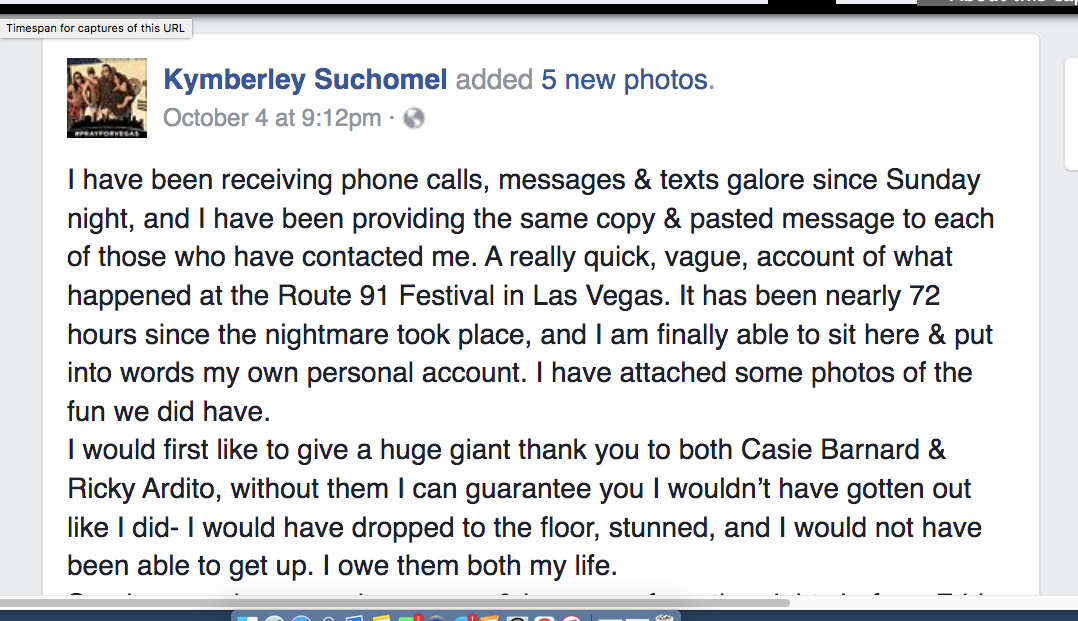
Sources and more information
http://ww1.dorothykilgallenstory.org/
https://nypost.com/2016/12/04/dorothy-kilgallens-tell-all-on-a-mafia-don-might-have-got-her-killed/
https://tabublog.com/2015/11/22/the-jesuits-assassinated-jfk-83-years-ago/
https://case.edu/ech/articles/s/sheppard-murder-case
https://www.express.co.uk/news/history/589083/British-nanny-Maud-Shaw-John-F-Kennedy-whitehouse
https://www.newspapers.com/clip/17708464/voice-of-broadway-by-dorothy-kilgallen/
https://www.newspapers.com/clip/1564072/the-voice-of-broadway-by-guest/
JFK's words live on. Have you been watching this all play out? The Fitz of it all consists of Germanic meaning Spear and Wald. Interesting JFK's name was Lancer, Jr's was LARK. Now who was Francis Scott Key Fitzgerald?
https://jfkfacts.org/tag/j-edgar-hoover/
https://www.archives.gov/research/jfk/finding-aids/rankin-records.html
https://digitalcommons.law.uga.edu/cgi/viewcontent.cgi?article=1283&context=fac_pm
https://spartacus-educational.com/JFKsmithF.htm
https://spartacus-educational.com/JFKkilgallen.htm
https://history.howstuffworks.com/historical-figures/dorothy-kilgallen.htm
https://thedorothykilgallenstory.org/
https://citizenwells.com/tag/dorothy-kilgallen-and-kymberley-suchomel-died-in-sleep/

